

28 Top New Zealand Packing List for 2024 + What to Wear & NOT To Bring

New Zealand is famous for its stunning mountains, beautiful beaches, and greener-than-green native forests. Known as ‘Middle Earth’ in the Lord of The Rings trilogy, it is a diverse country with mystical landscapes that almost feel otherworldly.
NZ spans several climate “zones,” so it can be a surprisingly tough place to pack for (there are not many places where you can go skiing in the morning and surfing in the afternoon!) To get the most out of your trip, it’s best to pack for ALL seasons.
Below you’ll find a list of items I highly recommend, a section on what to wear in New Zealand , what NOT to bring, and other FAQs. Enjoy your travels to Kiwiland!
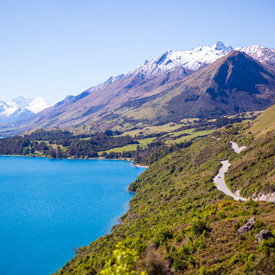
What to Pack for New Zealand – 28 Essentials
1. neck wallet.
After having some scares with misplacing valuables while jet-lagged, I never make long-distance trips without my neck wallet. This is especially important for New Zealand since the travel time is typically so loooong. When you’re a tired tourist getting off the plane into a new city, you have a target on the back of your head that pickpockets can spot from a mile away. But with a neck wallet, it’s practically impossible for thieves to steal since you can keep your passport, phone, credit cards, and cash all concealed under your clothing. This one also has RFID-blocking material to prevent e-thieves from scanning your bag.

View on Amazon.com ➜
2. Jet Lag Relief (Natural)
It’s a lengthy trip to New Zealand from the States (roughly 13-18 hours with a non-stop commute), and the time change is fairly significant. Travel days are hard enough without jet lag adding to your stress, so gameplan smarter with these natural jet-lag tablets. They’re actually MADE in New Zealand but sold worldwide. Formulated with botanical ingredients like chamomile and daisy flowers, they’ve noticeably impacted my energy levels while traveling and I can’t recommend them enough.
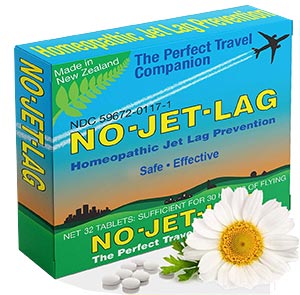
3. Virtual Private Network (VPN)
The risk of cyberattacks is steadily going up and hackers will take some extreme measures to obtain your personal info. A VPN adds an additional layer of security to your browsing and data to help protect you from identity theft or other hacking issues. If I’d used one in Paris when I traveled there recently, I would have avoided having my credit card information stolen … This is more common than you think when using free Wi-Fi networks at cafes, hotels, Airbnbs, airports, and more .
A VPN also allows you to browse the internet despite restrictions and any country-specific censorship, so it’s one of the smartest subscriptions you can have if you travel at all – and also one of the cheapest. Bonus tip: It will get you deals on flights and certain websites since they can’t track your IP address or price-gouge you based on location! We use our VPN at home and every time we travel.

View NordVPN.com Options ➜
4. NZ Power Adapter
Since NZ has a different outlet type than most countries, you will need to bring a power adapter. Make sure you choose a high-quality one with fuse protection that prevents your devices from getting fried – you don’t want to risk damaging your phone, laptop, kindle, camera, or any other precious device. This adapter is our go-to because it works in over 100 popular countries and comes with a lifetime replacement guarantee.
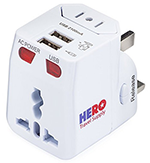
5. Water-Resistant Travel Backpack
You’re definitely going to want to bring a day bag of some kind, and a backpack-style bag will save your back and shoulders a lot of tension and pain. This one is large enough to hold the daily essentials – water bottle, rain jacket, money, passport, camera, etc. – but also lightweight enough to keep from adding to your already heavy travel load. It’s comfortable to carry since it’s made for exploring and compacts down into a small rectangular pouch when you don’t need it.
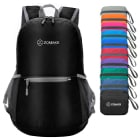
6. Travel Insurance For New Zealand
One of the biggest mistakes I see travelers make is overlooking travel insurance. Your health insurance does not extend to medical incidents that occur while abroad, so you could be left paying out-of-pocket for extremely high hospital bills. This includes Medicare and Medicaid, which only cover you domestically.
Don’t leave yourself vulnerable to potentially five-figure expenses that are mitigated with an affordable plan. It will also cover common travel issues like baggage loss, flight delays, cancelations, theft, evacuations, and more. We recommend Faye Travel Insurance to find the plan that best suits your needs. They handle everything through their mobile app so you can get reimbursed faster (without all the drudgery and paperwork!) We’re thrilled that they offer the ability to cancel your trip “ for any reason ,” which we’ve taken them up on once when we had to postpone our vacation!

Get a quote in less than 60 seconds with Faye ➜
7. Packing Cubes
Organization is one of the keys to an elevated traveling experience, and it doesn’t get much more organized than packing cubes. Once you travel with them, you won’t want to suffer through another discombobulated suitcase or dig around to find basic things ever again.
These luxury organizers have labels on each cube, a variety of sizes, and several colors for each family member. They make packing much easier, as well as transferring items to and from your daybag. The bonus laundry bags seriously sweeten the deal!

8. Luggage Straps
I wouldn’t send my bag halfway around the world without attaching these luggage straps. They can be doubled-up to reinforce your bags, ensuring nothing breaks open mid-transit. This happened to a friend of mine whose case fell apart due to the rough baggage handling for international flights. We used these adjustable belts to finagle it together and successfully get to the next flight! Now, I never travel without them.
Besides the obvious zipper reinforcement that compensates for any overpacking, my favorite perk is quickly finding your bags at the chaotic arrivals terminal. The colors stand out from across the room, even in a crowd of generic-looking bags. These have saved us on numerous occasions and probably will going forward – especially since they have a built-in contact card for easy identification if my bag goes missing.

9. Lipstick-Sized Portable Charger
A small portable charger is always wise when traveling, especially since you might be at the beach, exploring cities like Auckland and Queenstown, or hiking through the wilderness with no power outlets nearby. This charger is the size of a lipstick tube and holds multiple charges so you can power all of your devices while on the go. You’ll be thankful to have navigation and internet access in case of an emergency. We never travel without it.

10. Windproof Travel Umbrella
New Zealand demands a trustworthy travel umbrella. Weather varies from region to region, and you never know when you’ll need to ward off a sudden rainfall. This umbrella is especially nice because it’s windproof and large enough for two people yet still lightweight and compact. The carrying case is a useful accessory so you can store a wet umbrella in your bag once grey clouds have passed.
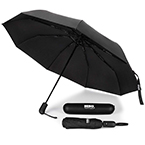
11. Hanging Toiletry Bag
Wanderlust involves lugging around a lot of toiletries, skincare, and styling items – while running the risk that liquids are going to explode all over your suitcase. Maintain your routine (and your sanity!) by packing every liquid in this hanging toiletries bag. It hooks onto any door, shower pole, branch, etc., and really saves the day when countertop space is limited.
This one by Eco Sun comes with a lifetime happiness guarantee so you are sure to fall in love. It holds way more products than I would’ve guessed, almost giving you a shelf-like system in your home away from home. P.S. I haven’t had any spills since purchasing this because everything is so tightly and compactly stored. Intuitive organization is HERE and everything is at eye-leve babyl, woo-hoo!

12. Waterproof Hiking Shoes
With glaciers, national parks, and sweeping cities to explore, you will be doing a considerable amount of walking. It’s best to have sturdy, broken-in hiking shoes for New Zealand so that you don’t risk hurting your feet or ankles hiking in regular sneakers. This pair is waterproof and the brand is known for its comfort and durability. I’ve used them to trek through dozens of countries and they haven’t failed me yet!
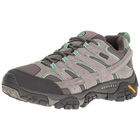
13. Compression Flight Socks
If you’re in good shape, you may be thinking, “compression socks, really?!” But let me tell you that flying for 15-20 hours, possibly 25-30 if you have layovers or stops, makes anyone’s ankles swell (no matter your age or how many hours you spend at CrossFit). Blood clots are more common on long flights which is why flight attendants commonly wear compression socks or stockings. They will help you maintain blood flow and increase circulation in your legs and feet, all while reducing the potential for pain or swelling so you don’t feel like the marshmallow man when you touch down.
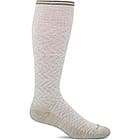
14. Universal Waterproof Phone Case
Whether you’re horseback riding along the white-sand shores of Northland, boating through the glow worm caves, or hiking through the river valleys – your phone will need protection from the elements. This phone case has been a miracle worker for my family, saving our phones on multiple occasions and still allowing us to record underwater videos when snorkeling.
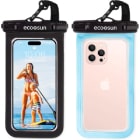
15. Discounted Tickets for New Zealand Attractions
There are so many awe-inspiring things to do in New Zealand, and you’ll want to experience everything this destination has to offer. Visit the Lord of The Rings Hobbit house , take a rapid’s adventure down the Waikato River, and get closer to nature at the underwater observatory .
Foodies will love the Queenstown BBQ tour , while adventurers may opt for a glacier and helicopter tour or boating through the enchanting glow worm caves. We also recommend day trips to majestic Milford Sound and the lush wineries of Waiheke Island .
Get Your Guide is our preferred booking service for the best that a destination has to offer. They allow cancellations up to 24-hours notice of your activity, making it easy to shape-shift your itinerary and remain adaptable if plans change.

See all New Zealand attractions at GetYourGuide.com ➜
16. TSA-Approved Luggage Locks
When traveling internationally, you should play it safe and always secure your luggage with luggage locks. You never know who’s coming in contact with your bags, especially when they’re checked for international travel. I like this set because they are TSA-approved and made by a reputable travel brand. They’re 10x harder to crack than a typical 3-digit lock, so I use them for suitcases, lockers, hotels, and on my backpack when exploring crowded areas that are preyed upon by sticky fingers.
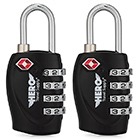
17. Dry Bag
New Zealand has more ways to soak your belongings than you might imagine. With boat cruises, snorkeling, diving, river rafting, and everything in between – you should invest in an inexpensive dry bag. You don’t want to watch your cash crumble into a ball of nothingness, trust us. We’ve used this bag for tubing down the river and to combat the wet floorboards of dingy boats. It’s been submerged a few times and everything comes out 100% dry.

18. Quick-Dry Travel Towel
Carrying a portable towel with you is always handy since you never know when you’ll need to dry off while adventuring. It’s also good to bear in mind that some accommodations may not provide towels, so having a quick-drying one like this is a good solution. It can be carried easily in your daybag and will be much lighter than bulky ones that can get in the way during extensive hikes. Plus, it dries 10x faster than cotton and is incredibly soft too.
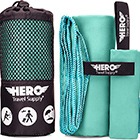
19. Stylish Warm Jacket
New Zealand is a magical land where you can be freezing on a glacier in one moment and then sunbathing at a tropical beach by the next. The climate varies WILDLY and their seasons are opposite of the U.S. (most travelers know that June/July is peak travel season for American tourists when kids get out of school. But for NZ, this is the peak of winter and the coldest time of the year!) The secret to success will be layering and preparing for rapidly-changing weather conditions. This warm jacket is a safe bet because it’s fast-drying, lightweight, and mega stylish.

20. Touchscreen-Friendly Gloves
Spare your hands from the cold with sleek winter gloves. These offer the best of both worlds – thermal protection and the ability to wick away moisture. For outdoor activities or driving in harsh sunlight, these gloves are lightweight, soft, and still allow you to use the touchscreen on your phone. The palms have a non-slip silicone material that makes them great for thrillseekers, bikers, etc.

21. Wool Headband
Regardless of the season, a warm headband will be of great comfort to you in New Zealand. We lose heat through our heads, so a wrap will keep you feeling toasty even during chilly activities like whale-watching or snowboarding down Mount Ruapehu. Even in the summer, temperatures are colder in the south and you will appreciate having a cozy accessory. This brand support working mothers in Nepal, honoring 1,000 years of complex weaving technique that’s been passed on for generations.

22. Activated Charcoal (Food Poisoning Fix)
Almost every traveler I know has experienced some kind of stomach upset – most frequently Traveler’s Diarrhea – as a result of long journeys, new foods, and the general physical stress of traveling. Activated charcoal has provided me quite a lot of relief, and now I take it with me wherever I go (I even use it at home if need be!) It absorbs toxins in your system if there are any, and it helps return your digestion to normal so that you can go on enjoying your trip instead of feeling unwell.
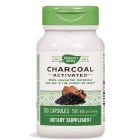
23. Deet-Free Mosquito Wristbands
Let’s be honest… The mosquitos and sandflies of NZ are a nuisance ! Although there are no insect-related diseases in the country, the bites are still itchy, annoying, and uncomfortable. We buy these wristbands for our family because they’re deet-free and non-toxic; it’s also much more convenient than constantly spraying and respraying those strong nasty fumes. Made with essential oils like citronella and lemongrass, these wristbands deter bugs the natural way and in my experience, provide the most effective defense.
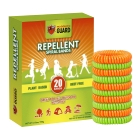
24. Water Bottle With Built-In Filter
You’re not going to have a hard time finding safe water to drink in New Zealand, but if you’re doing a day hike and need some water from a mountain stream, this is a great way to be sure it’s safe to drink. Opting for a filtered water bottle is a smart precaution because you’ll have an easy and free way to stay hydrated without having to purchase plastic water bottles. It will reduce the taste of heavy chlorine purification and filter out bacteria, sand, and sediment.

25. Packable “Just in Case” Bag
Shopping in New Zealand is not to be missed – with predominantly European and indigenous Māori influence, the culture of NZ is distinct and deliciously collectible. This ‘just in case’ bag is a great pack-along for those purchases you may make. It takes up zero space when empty but can serve as your carry-on item for the flight home that fits under your plane seat.
Fill it up with goodies and handmade gifts that your loved ones will treasure – some local goods we recommend are: Merino wool, Māori crafts, jade necklaces, Tuatara coffee, Manuka honey, woodwork, and LOTR memorability.
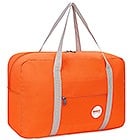
26. Quick-Dry Convertible Pants/Shorts
This is an item I bring on all trips that involve hiking, simply because I often start activities in the morning when it’s cooler, and finish the day when it’s later and much warmer. The transition from cold weather to warm weather is super easy when you can zip off part of your pants to make them into breathable and lightweight shorts. These pants are also quick-drying, a necessary bonus when you’re in humid or water-rich areas.
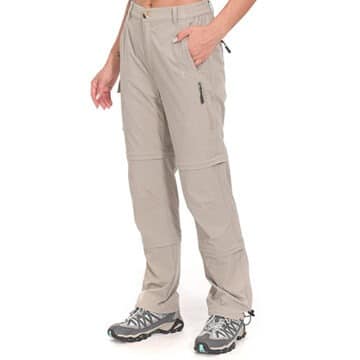
27. "Gumboots" (AKA Rain Boots)
Rubber boots (known as ‘gumboots’ in NZ) will add convenience to your adventures through the many terrains of Middle Earth. Most people don’t realize that it rains nearly as much in NZ as in the UK, so you’ll need a pair of shoes that function in rain, snow, and mud to keep your feet dry. There’s a reason the locals refer to gumboots as ‘essential footwear’ – they will save you in a surprise downpour! This brand is very cute and has many beautiful designs to choose from.
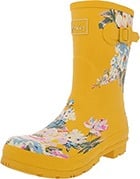
28. Gorgeous Jumpsuit
Last but not least, any getaway calls for a stunning outfit. Your sundress or beachwear won’t quite cut it for nights out on the town, so try this chic jumpsuit that feels modern yet classic all at once. It’s elegant, comfortable, and complements many body types because it cinches at the waist but flairs out around the hips. This gives it a very relaxed (almost dress-like) style that’s undeniably timeless.

Other NZ Packing List Items Not to Forget
- Travel Insurance
- Facial cleansing/travel wipes
- Motion sickness patches
- Steripod toothbrush cover
- Toiletry bag
- Vitamins and/or personal medications
- Reef-safe sunscreen
- Convertible Quick-Dry Pants
- Travel-sized umbrella
- Flash drive/memory card
- Combination padlock
- Flashlight/Head lamp
- Travel toilet paper
- Shoulder bag
- Travel pillow
- Travel sheet
- Underwater camera
- New Zealand power adapter
- Noise-canceling headphones
- Passport photos
What to Wear in New Zealand
Warm layers are your friend if you are planning to visit New Zealand during winter, as the South Island can drop down to 14°F! (-10°C). If you’re planning a visit in the warmer months, pack a light raincoat. It is also really important to remember your sunscreen, sunglasses, and a hat to protect your skin from the sun, as well as your swimsuit, so you can enjoy a dip in the ocean! The winters can be cold but the summers are warm and pleasant.
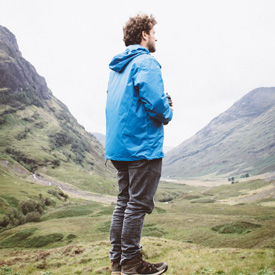
For a destination as diverse as New Zealand, check the weather before your departure and pack accordingly. If you’re planning lots of outdoor excursions or even hiking, ensure you pack reasonable footwear with a suitable grip. It’s also important to note, Kiwis tend to be quite laid back when it comes to their outlook on life and their style. You may notice many people not even wearing shoes, let alone dressing up for the weekend. Therefore, your fancy best heels can probably stay at home this time.
That’s not to say there’s no need to get dressed up if you’re planning fancy dinners and nights out in the city. New Zealand has so much to offer a traveler, so you’ll definitely have ample choices when it comes to activities! Nighttime does mean a drop in temperature year-round, so pack a shawl, comfy layers, and a warm scarf. What should MEN wear in New Zealand? – (Click to expand) Below is a sample men’s clothing list. (All items link to Amazon.com for your convenience).
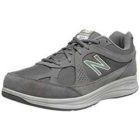
Dressing for the Seasons in New Zealand
Spring – september, october, november.
New Zealand during Spring for most of the day is warm, but expect chilly mornings and evenings. You may find the days pleasant enough, especially if you are from somewhere colder. Be ready to layer up and for the temperature to change quickly. It is always handy to have a sweater and extra layer for the evening as night time sees a drop in temperature. Definitely pack a light coat .
Average daytime temperature: 61 – 66˚F (16 – 19˚C).
SUMMER – December, January and February
These are the hottest months in New Zealand. Remember to pack your sunscreen and other sun protection such as hats and sunglasses .
Remember to cover body parts after sun exposure to avoid damage and use after sun. Swimsuits perfect for these months, as well as shorts , t-shirts , dresses . It may be advisable to carry light layer in the evening.
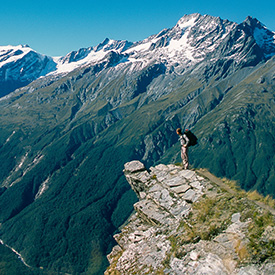
FALL – March, April, May
Fall in New Zealand will be chilly and sunny in the daytime, with a sense of the Winter months approaching and a drop in temperature, particularly at night. It is important to pack cozy layers , something warm to sleep in and lighter layers for the daytime. You may wake up to really cold mornings. Prepare for all weathers here, but for the most part it will be cold.
Average daytime temperature: 62 – 70˚F (17 – 21˚C).
WINTER – June, July, August
Winter sees the average temperature in New Zealand drop. The South Island can drop down to 14°F! (-10°C) Wear a coat , pack layers including moisture-wicking shirts and even thermal leggings to go under pants . There’s a chance of it being particularly cold, so remember a scarf , a warm hat , and gloves !
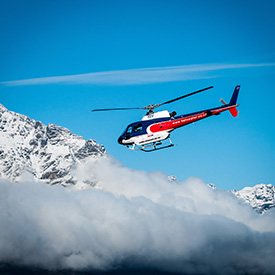
Beaches: Normal beach attire is most welcomed and suitable here. New Zealand has some diverse and beautiful beaches. If you are planning on doing water sports or surfing, a wetsuit may be advisable to protect your skin from the cold water.
What NOT To Take to New Zealand
1. don’t pack your own sunscreen.
It just takes up valuable packing space. Yes, it’s ABSOLUTELY crucial to wear sunscreen while in New Zealand as the sun’s rays are much stronger there. But sunscreen can be found anywhere, and it’s pretty affordable in any pharmacy or supermarket, so don’t bother bringing your own.
2. DON’T BRING too much clothing
and especially not fancy clothes. You won’t need a lot of clothing anyway, and New Zealand is not the place to dress up. Avoid bringing anything too nice – you’ll probably just get it dirty, anyway. DO bring layers that you can mix and match, and outfits that can easily go from warm to chilly.
3. DON’T TAKE extra electronics
It’s both a packing no-no and a security issue (yes, crime exists in NZ too!). You don’t want to schlep all of that extra weight around, and you REALLY don’t want your electronics stolen or damaged. There’s plenty to entertain you in NZ without them.
4. DON’T PACK heavy books
Or, honestly, any books except ones you need to navigate and explore NZ. Books are delightful, but heavy and bulky, which your back will not thank you for. If you haven’t already, update your library with a Kindle or similar e-reader, and bring that instead.
5. DON’T TAKE lots of cash
Another security issue. You don’t want to attract any unwanted attention, and cash is an unfortunate beacon for petty criminals. ATMs are everywhere in NZ, and they’re not usually any more expensive than in the States, so you’ll be able to get small amounts of cash when you need it.
6. DON’T BRING expensive or valuable jewelry
The theme here is not to take anything you’d be sad to see lost, stolen, or destroyed. You really won’t need decorative accessories in New Zealand – most of your activities will be outdoorsy and a little on the rugged side.
Fancy, elegant, expensive clothing For the most part, leave your precious clothing at home – the exception being if you are planning very extravagant nights out. Opt for clothing practical for your activities that you wouldn’t mind getting dirty.
Expensive Jewellery Do not wear expensive, eye-catching jewelry. As with everywhere else in the world, flashy things like this will only attract pickpockets and thieves. Trying to minimize the risks to yourself and your belongings is always best, no matter where you’re traveling.
FAQs about travel in New Zealand
1. is nz tap water safe to drink.
Yes! Tap water is perfectly safe, although the water in many cities tastes a little unpleasant due to treatment. Mineral water is available in all supermarkets and dairies, or you can bring your own filtered water bottle with you so that your water is always fresh.
2. What is the cheapest way to get around New Zealand?

There are several options for traveling NZ on a budget, including:
- Campervans. Buying or renting a van means you save on accommodation and get to travel at your own pace. There are hundreds of campervan parks around NZ, and in some places you can freedom camp .
- Bus: Lots of budget options with companies that run services that cover all of NZ, or hop-on/hop-off tours.
- Train: Although not a common way to travel due to the expense, the Tranz Alpine train journey is one of the most beautiful in the world.
3. Do I need to tip in restaurants?
Tipping isn’t expected in New Zealand. If you’re impressed by a particular staff member, then go ahead and tip if you want to, but many establishments require staff to pool any tips so that they can be shared equally. You may even see a “Tip Jar” on the counter, but again, it’s up to you to put something into it.
4. How safe is it to go hiking in NZ?
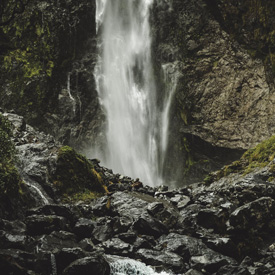
Hiking is as safe as long as you’re prepared!
Most hiking tracks will have a sign posted at the start which tells you how long it will take and the grade of difficulty, so you should know what to expect.
In any case, you should check the details with a local information centre or on the Department of Conservation website beforehand. Always take sufficient gear and ALWAYS tell someone when and where you’re going.
5. Do I need a visa to visit NZ? Or to work in NZ?
If you are a UK citizen and/or passport holder, you can stay up to six months without a visa. If you are a citizen of a country that has a visa waiver agreement with NZ, you can stay up to three months without a visa. Otherwise, you’ll need a visitor visa, which allows you to stay for up to 9 months.
A working holiday visa allows you to travel and work in New Zealand for up to 12 months, or 23 months if you’re from the UK.
6. When is the best/worst time of year to visit NZ?
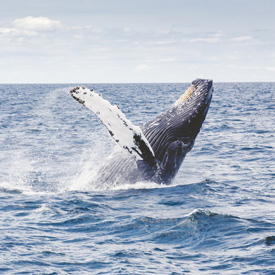
Depends on what you want to do in NZ! If you’re coming for beaches and bush trekking, summer is your best bet. But if you want to hit the slopes and see the wild beauty of the snow-capped Alps, you can’t miss winter. Some parts of NZ are quite wet and cold during winter, so outdoor adventures aren’t as safe or fun, but there’s always somewhere to go to escape the worst of it.
And remember – the southern hemisphere seasons are opposite to the northern hemisphere, so Christmas is in summer!
7. How can I stick to a budget while traveling NZ?
Budget travel can be tough, as New Zealand has become much more expensive in recent years. But there are still ways to see plenty on a shoestring by:
- Camping: if you don’t mind communal kitchens and a slightly cramped living space, camping is a fun and cheap way to see the country.
- Van or campervan: As above – rent or buy a campervan and your accommodation is sorted!
- Couchsurfing: Very popular in NZ with over 2000 hosts around the country.
- WWOOFing: A great way to work for your keep whilst hanging out with the locals!
8. What are some foods to try while I’m in New Zealand?

Lamb is kind of a given, considering sheep are their primary pasture animal. Roast lamb is drool-worthy and an experience you won’t want to miss.
Other, lesser-known foods to try are:
Tuatua (a soft and mild shellfish), Hāngi (A traditional Maori dish of steam-roasted veggies and meats), Fish and chips (again: FRESH, LOCAL seafood!), and NZ’s delicious offerings of wine and cheese.
9. How can I find out where to get off the beaten path?
This is best done by visiting an i-site (information center), checking out TripAdvisor or, better yet, getting to know some locals. There are many, many hidden gems in New Zealand that you won’t see on a tourist brochure – I could tell you a few just off the top of my head! Locals are only too willing to point you in the direction of a cool place.
10. Where can I go camping in NZ

There are loads of campgrounds in NZ, especially in areas near tourist attractions. Facilities in campgrounds range from cabins, TV rooms, and modern communal kitchens, to isolated paddocks with cold showers and long drops.
Freedom camping is also possible in some areas, which means you can park your van or pitch your tent and camp for the night – for free. It’s a fantastic way to explore New Zealand, BUT please obey the rules!

How to Pack for New Zealand: My Detailed Packing List
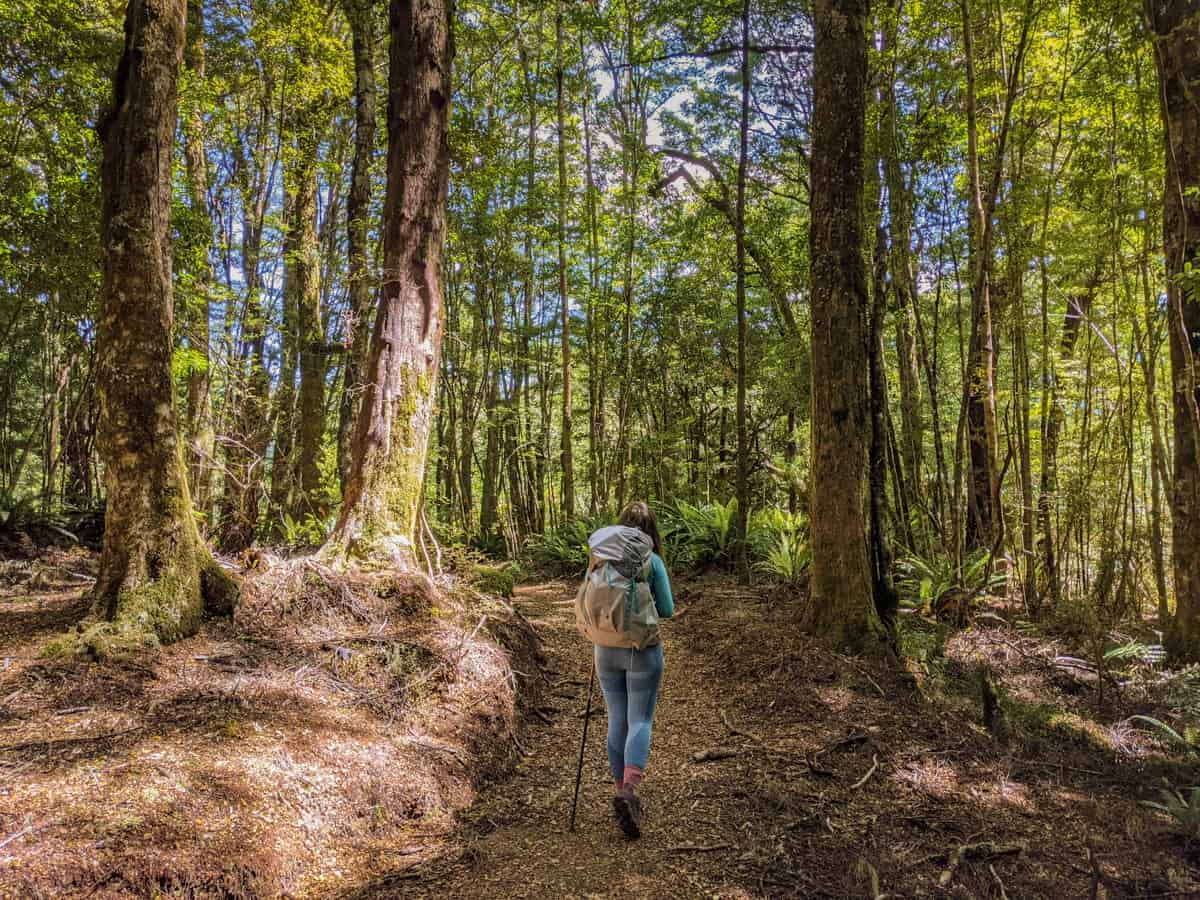
There is perhaps no country in the world that I know better than New Zealand.
Back in 2011, when I decided to quit my job to travel the world, I knew I’d eventually get to New Zealand: it was a country that was high on my travel wish list, and as someone in their twenties, I planned take advantage of their working holiday visa. I thought I’d travel around Southeast Asia until my money ran out, then head south to work and live at the bottom of the world.
I certainly didn’t expect to fall in love with a New Zealander when I was just four months into my adventure!
But that’s exactly what happened and I now find myself with permanent residency for one of my favourite countries in the world. I’ve been fortunate to have visited New Zealand practically every single year over the past decade, and I’ve even spent seven months road tripping from the very top of the North Island to the bottom of Stewart Island.
In short, I’ve seen a hell of a lot of New Zealand over the past ten years.
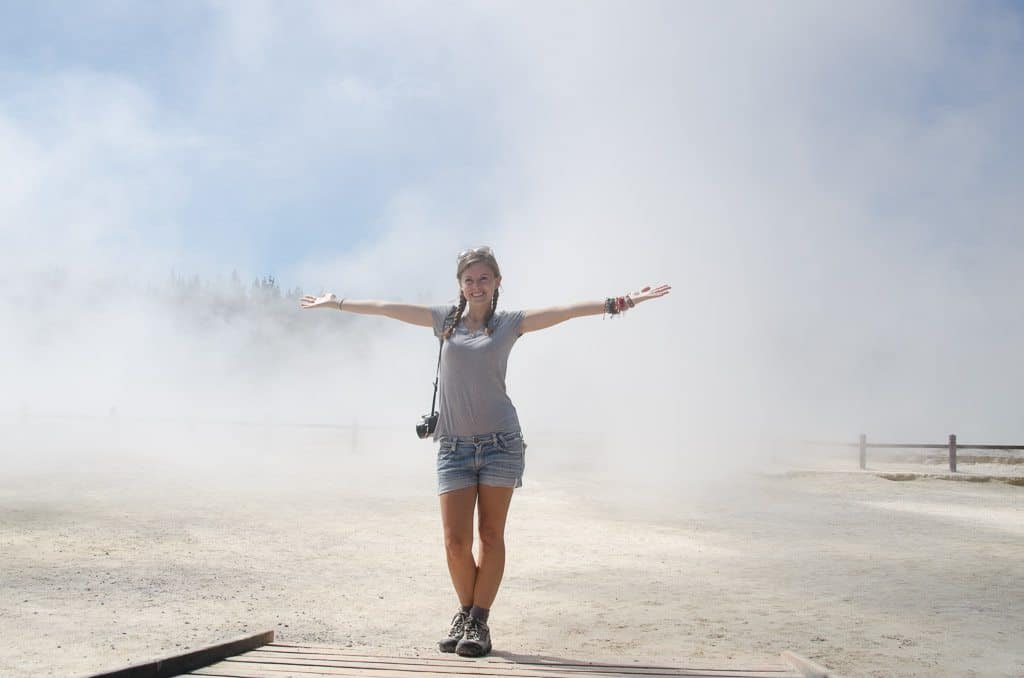
I’ve visited over sixty different spots across the Land of the Long White Cloud , tackled three of the Great Walks so far, and every time I return, I fall more in love with this spectacular country. I’ve also learned a hell of a lot about how to pack.
Today, I want to share that knowledge with you guys. I want you to be able to make the most of your trip in New Zealand, and your packing decisions can make or break a trip.
Trust me: I know. There was that time when I ended up frozen and soaked because I believed I didn’t need wet-weather gear on a hike in the middle of New Zealand’s summer. Oh, and that time I tried to undertake a short hike in flip-flops and ended up with a sprained ankle. There was also that hike where I forgot to bring insect repellent and was devoured by the country’s infamous sand flies.
Let me make the mistakes so you don’t have to — it’s basically the slogan of my travel blog at this point.
My Luggage Recommendations for New Zealand
When it comes to travel in New Zealand, the amount you’ll bring with you will depend a hell of a lot on the time of year you’ll be visiting as well as the activities you’ll be doing while you’re there.
Travelling outside of summer? You’ll want to bring a lot of warm clothes and wet weather gear. Visiting in summer? Yeah, you’ll probably want to bring just as many. It doesn’t have the name The Land of the Long White Cloud for nothing — even in the height of summer, you’ll most likely be chilly more days than not.
Planning on doing a lot of hiking? You’ll want to make sure you have proper hiking shoes, a decent backpack, and clothes for every weather condition.
Yes, in case you haven’t realised, the weather in New Zealand can be more than a little variable, and it’s one of those countries where you can experience all four seasons in a single afternoon.
In general, the west coast is wetter than the east coast, the North Island is warmer than the South Island, and inland parts of the country experience more extreme weather than the coast. In the Central Otago region, for example, located inland on the South Island, temperatures can soar to 40°C in summer and plummet to -6°C in winter.
I’m a huge fan of travelling with a carry-on-sized backpack, as I appreciate the lack of back pain, the added ease of moving through the crowds, and not having to worry about lost luggage. For New Zealand, though, there’s no real reason to really battle to keep the size of your luggage down. The streets are paved, so don’t pose a problem for suitcases, and because public transportation isn’t amazing, most people opt to travel by car, campervan, or backpacker bus.
I travel with the Osprey Farpoint 40l backpack and take it on all of my adventures, whether I’m spending two weeks in Japan or six months in the South Pacific . It’s super-comfortable to wear, easy to pack, and has plenty of compartments to help keep your belongings organised. Osprey also offers a lifetime guarantee for all of their backpacks, which makes opting for one a no-brainer — if it breaks or falls apart, you can just get a new one!
If you’re not a fan of backpacks, I recommend the Osprey Sojourn , which is a combined backpack and suitcase in one. You’ll be able to comfortably wheel your suitcase around the country, then wear it as a backpack when you come across a series of steps or a steep hill.
What about a day pack?
You’re not going to want to take your main backpack/suitcase out with you while you’re exploring the streets of Wellington or the glowworms of Waitomo, so that’s why I recommend bringing a daypack with you on your trip.
Enter this teeny-tiny backpack that packs up to the size of an apple.
Despite its tiny size, this daypack is still surprisingly strong, holding a two-litre bottle of water, two SLR cameras, two phones, and a guidebook when I was exploring all over Oceania last year. And it doesn’t look cheap and crinkly, either, as so many packable bags often do. I take this bad boy on every single one of my trips — I’ve had it for over four years now — and appreciate that it doesn’t take up much space or weight in my luggage.
And hiking packs?
I’m a huge fan of the Osprey Tempest 20l backpack for day hikes and multi-day treks. It’s lightweight, has a great hip belt, and easily fits enough water, sunscreen, clothing, and snacks for a long walk.
No, you own too many Osprey Backpacks. What can I say? I’m an Osprey fangirl for life.
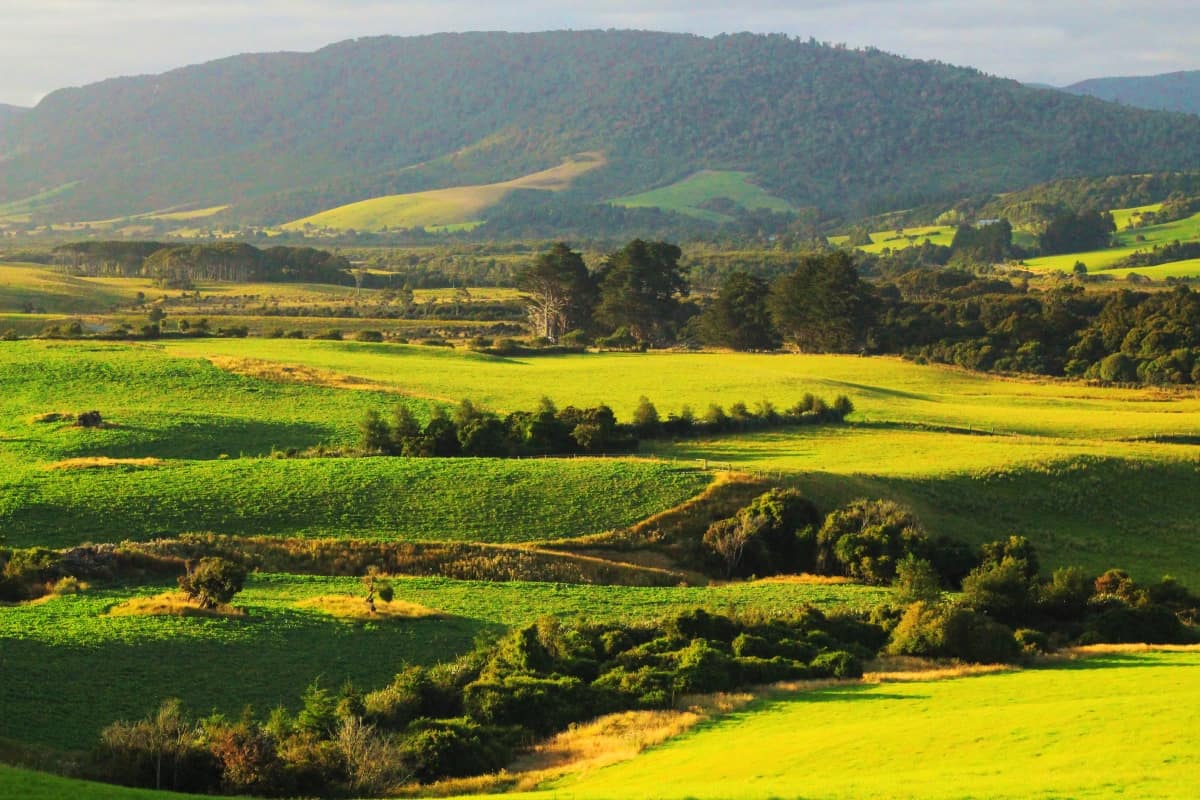
Clothing for New Zealand
When it comes to spending time in New Zealand, you’ll probably be aiming to split an equal amount of time between the mountains and the sea. While it can be tempting to spend your entire trip in typical backpacker gear, you won’t want to forget warm options for mornings and evenings when the temperature drops, and if you get sunburnt, you’ll definitely want something to cover up with. If you’re planning on hiking around the country, you’ll want to bring plenty of hiking gear, too.
What to wear in New Zealand in summer
Summer in New Zealand (December – February) isn’t as hot as you might expect, with maximum temperatures ranging between 20 and 30 degrees across the country. I recently spent from November to April road-tripping around New Zealand, and I ended up wearing jeans and a sweatshirt more often that not. As always with New Zealand, prepare for bad weather and hope to be pleasantly surprised. Here’s what I recommend wearing during summer:
- Two strap tops: New Zealand can get hot, so you’re going to want to wear lightweight, thin tops to stay as cool as possible. I pack a couple of spaghetti strap tops for those days where I can’t bear the thought of wearing anything larger.
- Three tank tops: For much the same reasons as why I bring strap tops, I pack a handful of tank tops to give me some variety with my clothes.
- Three t-shirts: T-shirts are also good for cloudy days or if you feel uncomfortable showing any more skin.
- One dressy top: New Zealand is more about dressing casual than fancy, so don’t expect to be dressing up every evening. Bring one nice top for your evenings out.
- Three dresses: I like to spend most of my time in dresses to stay cool. Three is the right amount for me.
- One kaftan: I like the selection they have on Free People . This is good for covering up and protecting yourself from the sun on beach days.
- Two bikinis: If you plan on hitting up the New Zealand beaches, you’ll want to bring some swimwear with you!
- One pair of denim shorts and a pair of bike shorts: I give myself two options, bringing some denim shorts and a pair of longer bike shorts. I usually use the latter for hiking in.
- A poncho/rain jacket: The rain in New Zealand can be a pain, especially on the west coast of the South Island so I usually pack a thin, breathable rain jacket for any unexpected showers.
- One outfit to keep you warm: Lows in the summer months are usually around 10-15 degrees, so you’ll want to have a warm outfit for any chilly nights. I usually bring a pair of jeans and fleece for any late-night wandering.
- Hiking pants: If you plan on doing some hiking (and you really should), bring a pair of leggings or hiking pants for any colder hikes you might be doing at altitude. I usually pack some yoga pants for hiking in New Zealand.
- Enough underwear for the length of the trip : For me, this is two bras, five pairs of socks, and seven pairs of underwear. If I’m travelling for longer than a week, I’ll either pay to get laundry done or use my travel laundry bar and stain remover to wash my clothes in the sink.
New Zealand is all about the hiking, so shoes with fantastic grip are a must. I’m a big fan of multi-tasking when it comes to shoes, so I’d recommend limiting the amount you bring to three.
- Flip-flops: I travel with these tropical-themed Havianas and love how comfortable they are. I use flip-flops on beach days and short wanders through the local towns in the evenings.
- Hiking shoes: I’m absolutely in love with my Merrell Accentor hiking shoes and think they’re the best I’ve ever owned. I’ve used these shoes to hike the 120 mile South Downs Way in the U.K. and plan on taking them on the Camino de Santiago with me later this month. My big tip for hiking in New Zealand is to buy shoes that are a size larger than you normally wear. Your feet will expand as you spend all day on them, so that extra room will prevent blisters from forming. They feel weird at the start of the day, but will be so comfortable at the end!
- Something for evening meals: I really like taking tennis shoes, like these low-top Converse sneakers in pastel shades to wear for dressing up, especially as they’ll give me a little more grip on the streets than strappy sandals. If you plan on hitting up high-end restaurants and dressing up while you’re in New Zealand, take something you know you’ll be happy wearing. You know your style better than I do!
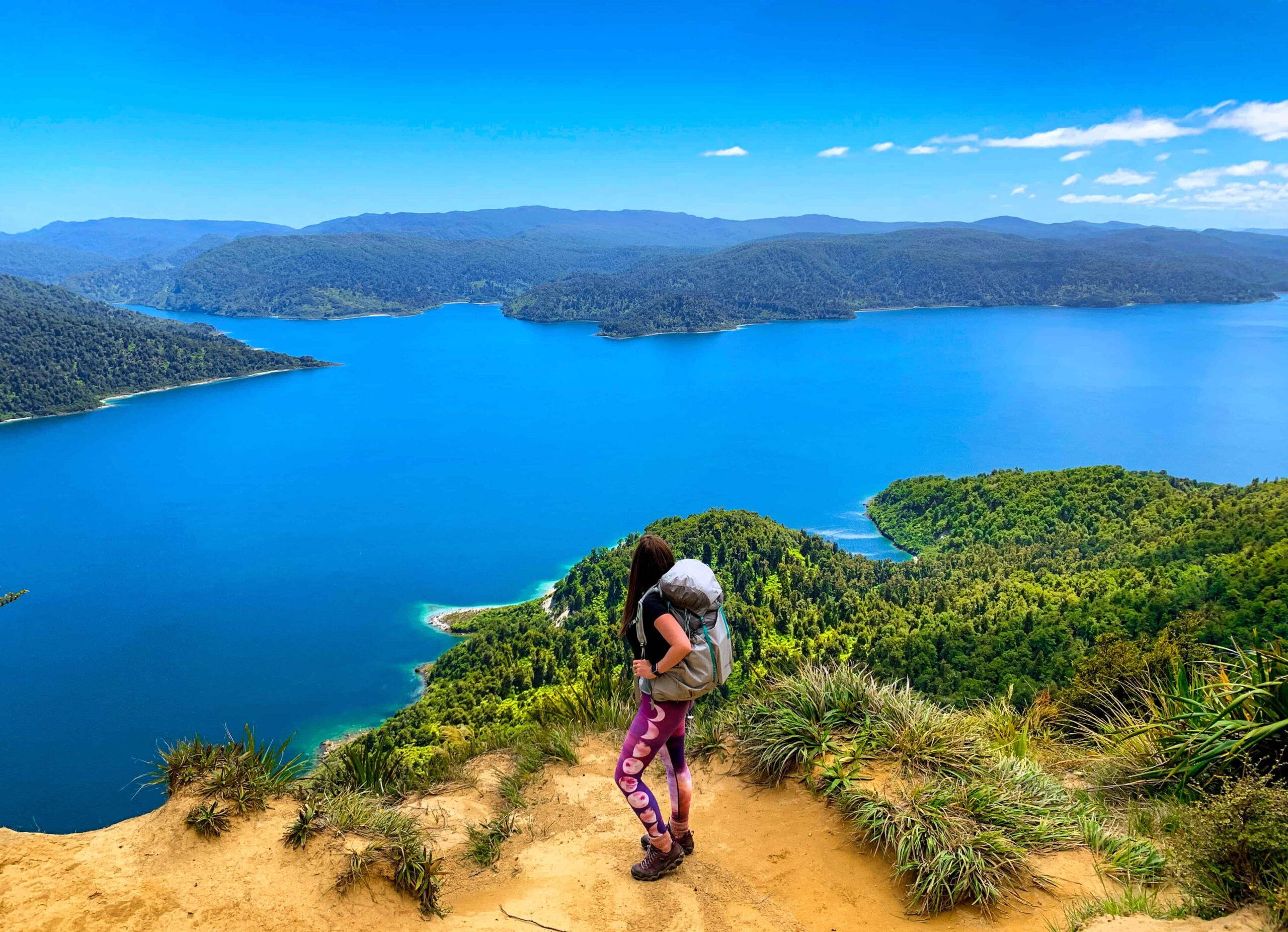
Accessories
Sunglasses: This is fairly self-explanatory! If you’re planning a summer trip to New Zealand, you can expect to need sunglasses while you’re out exploring.
Quick-dry travel towel: I absolutely adore mine! My Sea to Summit towel in extra large has been the perfect travel companion for the past eight years. It’s the size of a satsuma, weighs next to nothing, dries within minutes, and lasts for years.
Medications to Pack for New Zealand
In general, I don’t recommend travelling with a hefty first aid kit unless you’re planning on venturing well and truly off the beaten track. You’ll be able to get all of the same medicines as you can back home while you’re in New Zealand, so don’t worry about bringing absolutely everything with you for every eventuality.
Still, there are certain medicines that it’s useful to have on hand at all times. Here’s what I keep in my limited first aid kit:
- Dramamine : I suffer from motion sickness, so always make sure to have some motion-sickness tablets on hand, especially if I’m going to be venturing out on the water. I struggled when taking the ferry between Wellington and Picton before, as well as dolphin-spotting at Marlborough Sound. I was fine at both Milford and Doubtful Sound.
- Painkillers : There’s nothing worse than having to venture out in the hot sun in search of a pharmacy when you’re dealing with an agonising headache. That’s why I always travel with a dozen painkillers when I travel, usually half a dozen acetaminophen tablets and half a dozen ibuprofen .
- Imodium : Unfortunately, travel isn’t always incredible for our stomachs, and travellers’ diarrhoea can sometimes threaten to ruin your vacation, even in a country like New Zealand. I always keep Imodium on hand for any times when the local food doesn’t agree with me. It’s been a life-saver on days when I’ve needed to get on a bus and wouldn’t have otherwise been able to leave the bathroom. I also recommend packing some DripDrop rehydration sachets in case you get felled by food poisoning or sun stroke.
- Anti-histamines : I’m a very reactive person, so anti-histamines are a must for me! I always bring half a dozen tablets with me in case I break out in hives or start sneezing all over the country.
- Insect repellent : New Zealand has a ton of sand flies and they can be vicious with foreigners. My kiwi boyfriend doesn’t react to their bites, but I break out in huge itching welts whenever I’m struck by them. DEET helps repel them, so I always back a small bottle of insect repellent with as high a percentage of DEET as I can find.
- Band-aids : You don’t want to get an infection while travelling in New Zealand, so you’ll want to bring a couple of bandaids and a small tube of antiseptic cream for any cuts or grazes you may get. The last thing you want is for a cut or blister to get infected while travelling.
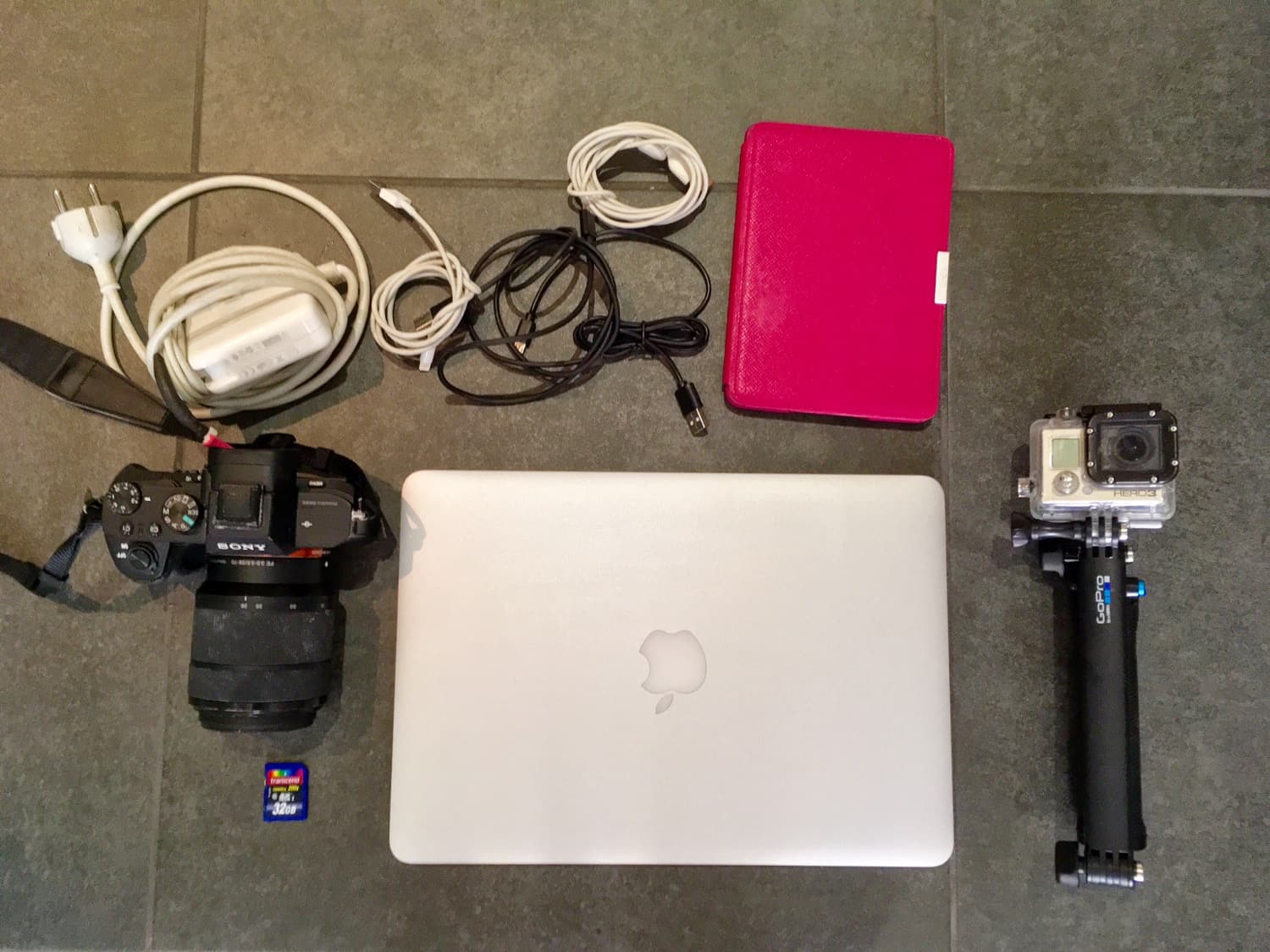
Essential Travel Technology for New Zealand
Let’s be honest: no technology is truly essential when it comes to travel, but whether we like it or not, it sure does help make our trips easier.
- A smartphone: I travel with an iPhone XS, but there’s no real need to upgrade your phone for your trip to New Zealand — just take whatever you normally use at home. Ensure your phone is unlocked and pick up a local SIM card once you arrive — I usually buy one from Spark.
- A camera: My main camera these days is the Sony A7ii with a 28-70mm lens , along with a couple of 32 GB SanDisk SD cards . At $2,000 for the full set-up, this is pricey as hell, and I bought it as an investment in this site. I’m incredibly happy with the quality of the camera and lens, though, and would highly recommend it if you have the cash and are looking to invest in a mirrorless system. If you’re not into photography, just bring whatever camera you usually use on holiday, or use your smartphone to take photos.
- A GoPro: GoPros are fantastic for travel, because they’re small, lightweight, and come with an underwater casing. I used mine with the GoPro 3-Way Grip , because it’s great for taking selfies in beautiful places.
- A Kindle Paperwhite : Now this is something I won’t consider travelling without. I’m a voracious reader when I travel, and a Kindle allows me to power through a travel memoir a day without adding weight to my luggage.
- A laptop/tablet: Most of you won’t need to bring your laptop with you. I work online as I travel, so this is an essential for me, but if you don’t think you’ll have a use for it, save on weight and space and leave it at home.
- Various chargers/adapters: Make sure you bring a travel adapter with you! I’ve tried out so many travel adapters over the years, but the one from Saunorch is easily my favourite. It looks great, works perfectly, and doesn’t fall out of power sockets, like so many others do.
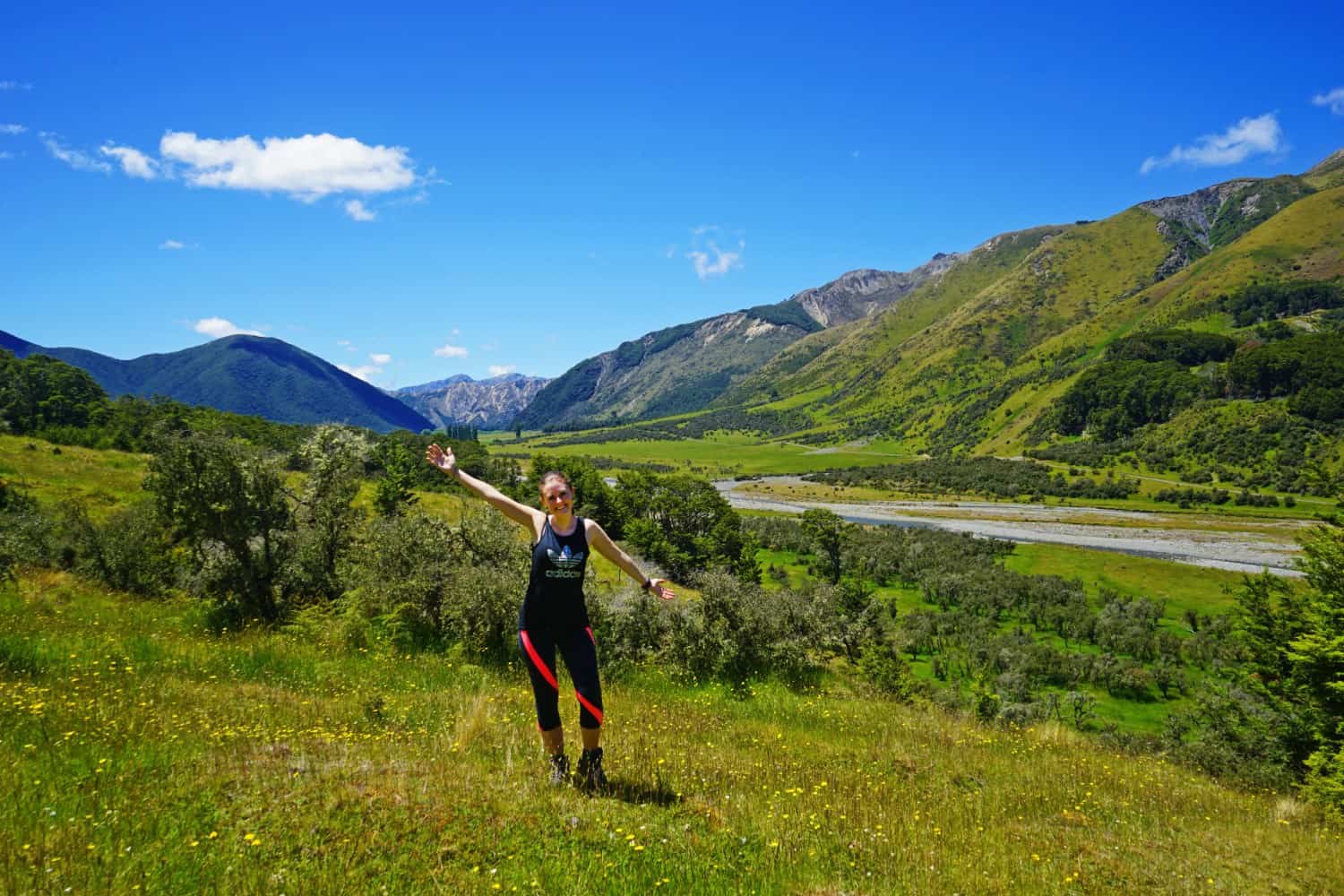
Toiletries for a Trip to New Zealand
If you’re going to be travelling with carry-on luggage, you’ll need to be cautious here, as you’ll have to make sure any liquids you travel with are under 100ml. Regardless, I’m always trying to reduce my environmental impact, so plenty of these suggestions will help you, too.
- Bamboo toothbrush and toothpaste : I invested in a bamboo toothbrush recently to cut down on my plastic consumption, and I’m obsessed with the offerings from B-Earthly . Their toothbrushes are biodegradable, comfortable to use, great for sensitive teeth, come with a travel case, and have a built-in tongue-cleaner. I combine mine with Crush&Brush toothpaste tablets , which come in zero-waste packaging, and biodegradable dental floss .
- A razor: I usually pack one reusable razor for each trip.
- Deodorant: This is a travel essential if you plan on travelling in New Zealand through the hot and sweaty summer months! I love the Organic Island solid deodorant bar . It’s plastic-free, biodegradable, and works just as well as traditional deodorants. The fact that it’s not a liquid will please all of my fellow carry-on travellers out there!
- Sunscreen: You’ll get through a hell of a lot of sunscreen if you’re planning on visiting New Zealand in summer — fun fact: I managed to land myself with the worst sunburn of my life after just a couple of hours outside when first arriving! Sun protection and hydration is going to be so important. To be honest, you’ll get through so much sunscreen in New Zealand that I’d recommend picking some up after you arrive so that you can travel with a bigger bottle.
- Solid shampoo and conditioner: I love LUSH’s solid shampoo bars — they leave my hair feeling soft and shiny, are super-lightweight and small, and last me over six months when using them continuously! Because they’re so small, I’d definitely recommend picking up some solid conditioner , too. The cork pots that are sold by LUSH are perfect for storing your bars as you travel.
- A small bar of soap: I usually grab a bar of soap from LUSH before a trip, too. I love their products and the fact that they’re packaging-free. A bar of soap will last me for an entire trip and also means I don’t add to my liquid limit with shower gels.
- Tangle Teezer: I’ve been traveling with a Tangle Teezer since I first started traveling, and it was a lifesaver in New Zealand! It’s the only hairbrush I’ve found that can get rid of all of all of the knots in my crazy, curly hair.

Miscellaneous Items for a Trip to New Zealand
A dry bag: An essential for spending time out on the water. It meant I could put my camera in my dry bag, get some air in it so it floats, and swim off to a little beach with my camera and take some great photos. The extra air helped it to float, which was useful. I’ll only use Sea to Summit products when it comes to dry bags — I’ve been using mine for seven years and it’s still going strong.
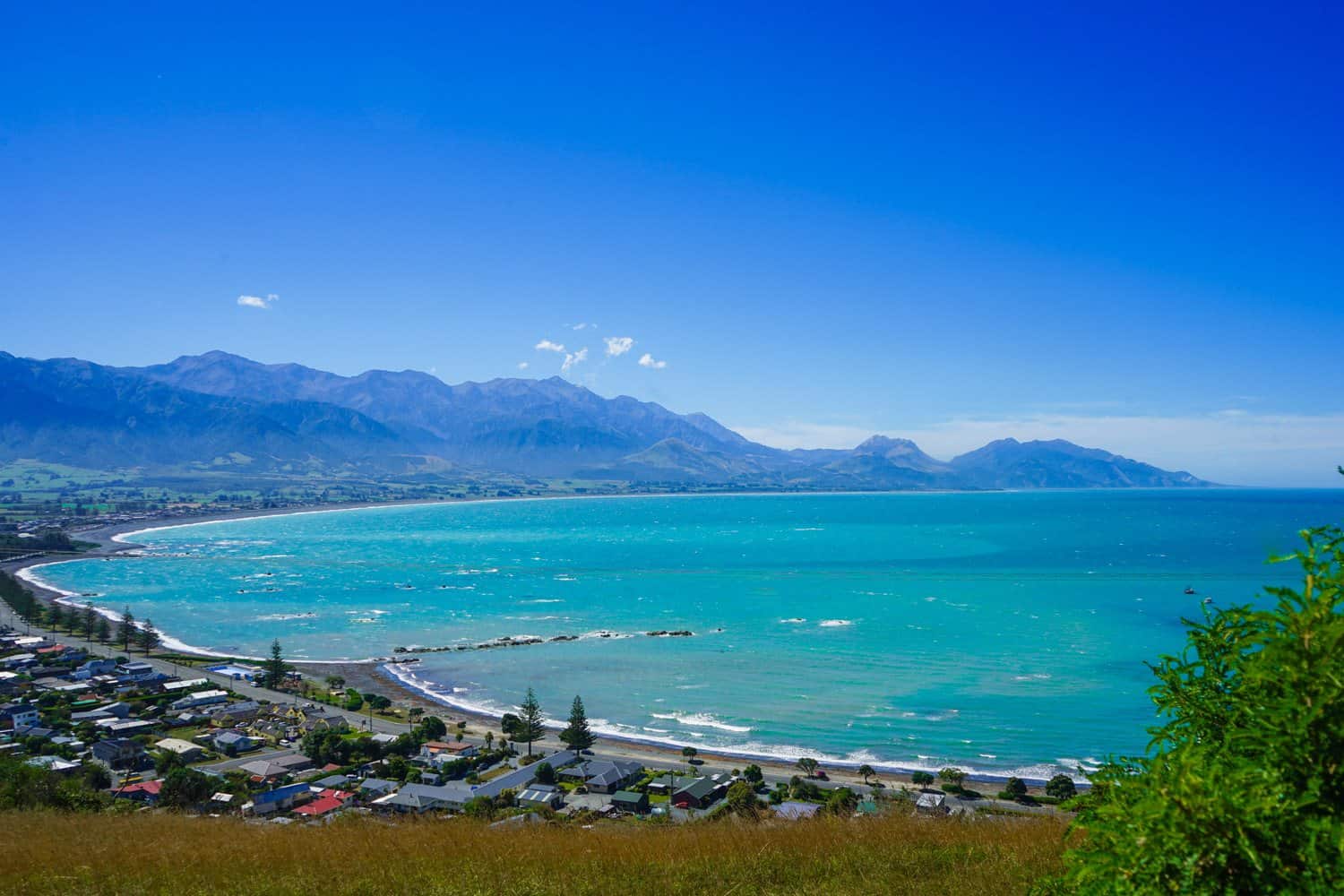
Don’t Forget Travel Insurance!
If you’ve read any other posts on Never Ending Footsteps, you’ll know that I’m a great believer in travelling with travel insurance. I’ve seen far too many Go Fund Me campaigns from destitute backpackers that are unexpectedly stranded in a foreign country after a scooter accident/being attacked/breaking a leg with no way of getting home or paying for their healthcare. These costs can quickly land you with a six-figure bill to pay at the end of it.
And fun fact! My partner scraped up our rental car in New Zealand while parking in a narrow driveway of an Airbnb. The total cost of the damage? $1,500! We were so glad we had travel insurance then, as it covered the full cost.
In short, if you can’t afford travel insurance, you can’t afford to travel.
Travel insurance will cover you if your flight is cancelled and you need to book a new one, if your luggage gets lost and you need to replace your belongings, if you suddenly get struck down by appendicitis and have to be hospitalised, or discover a family member has died and you need to get home immediately. If you fall seriously ill, your insurance will cover the costs to fly you home to receive medical treatment.
I use SafetyWing as my travel insurance provider, and recommend them for trips to New Zealand. Firstly, they’re one of the few companies out there who will actually cover you if you contract COVID-19. On top of that, they provide worldwide coverage, don’t require you to have a return ticket, and even allow you to buy coverage after you’ve left home. If you’re on a long-term trip, you can pay monthly instead of up-front, and can cancel at any time. Finally, they’re way cheaper than the competition, and have a clear, easy-to-understand pricing structure, which is always appreciated.
With SafetyWing, you’ll pay $1.50 a day for travel insurance.

What Not to Pack for a Trip to New Zealand
A money belt: There’s no travel item I despise more than a money belt, and I very much recommend leaving yours at home. Why? Because they don’t work! Thieves know what money belts are and they know to look for them. When a friend was mugged while travelling, the first thing the attacker did was lift up her shirt and check for a money belt.
So not are they uncomfortable and weird and make it look like you store your valuables in your underwear, but they don’t even protect you from being robbed.
Instead of travelling with a money belt, I recommend splitting up your money and credit cards before you travel. Keep an emergency $20 in your shoe, put some of your money in your wallet, keep a card in your daypack, and some extra cash in a pocket. You’ll be a lot safer by doing this.
High heels: New Zealand is a country that’s all about getting outdoors. Leave the heels behind and opt for some sandals with a good grip.
Too much make-up: I’m all about that beauty life, but I’ll hold my hands up here and confess that I always pack far too much make-up on my trips. For some reason, I always assume I’m going to want to put on a full face of primer, foundation, concealer, eyeliner, lashes… when the reality is that it’s often so hot in New Zealand that the last thing I want is products on my face. Instead, keep your products to a minimum: I like to pack some bronzer, mascara, a quad of neutral eyeshadows (I like the Flirt palette from Tarte), some highlighter, and lip gloss. I’ll throw a couple of vibrant nail polishes in there, too, and that’s about it for my beauty bag.
And that’s about it for my New Zealand packing list! I hope you found this guide useful and have a fantastic trip to the islands! :-)
Lauren juliff.
Lauren Juliff is a published author and travel expert who founded Never Ending Footsteps in 2011. She has spent over 12 years travelling the world, sharing in-depth advice from more than 100 countries across six continents. Lauren's travel advice has been featured in publications like the BBC, Wall Street Journal, USA Today, and Cosmopolitan, and her work is read by 200,000 readers each month. Her travel memoir can be found in bookstores across the planet.
Related Posts
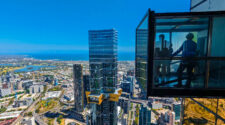
30 Incredible Things to Do in Melbourne, Australia (By a Local!)

The 9 Best Brunches in Fitzroy, Melbourne for 2024 (By a Local!)

What to Take On the Camino Primitivo: My Detailed Packing List
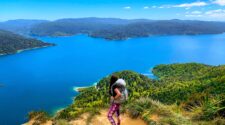
Lake Waikaremoana Great Walk: A Complete Guide
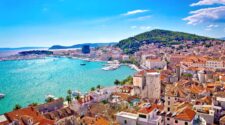
How to Pack for a Trip to Croatia

How to Pack for Spain: My 2024 Packing List
13 comments.
I was holding my breath while looking at your pictures. They’re amazingly beautiful. I want to be there now ! Oh wait, I don’t even have a hiking shoes :(
Awww, thank you Debby! Don’t worry about the hiking shoes — I saw someone walking in high heels! Yes, really. I judged her a lot.
Stark beauty. Great photos.
Thank you, Lane! :-)
Awesome shots Lauren – wish I’d had time to check out some of NZs walks, look forward to doing some on my return now though!
These are great photos, wonderful photos, and you should be proud of yourself, on several counts.
Amazing views. Really want to go to New Zealand now, it looks incredible :)
I love volcanoes and crater lakes! We have a LOT of them here in Japan. :) I guess I have to travel to New Zealand soon! *g*
Such stunning photos! So much colour!
What camera did you use for these shots?? They are amazing! I think a post on your photography, tips and what equipment you use would be very interesting! It looks like you had an amazing time in New Zealand!!
Ohhh, this hike looks so gorgeous. I love the different colours of the stones. When I did Everest Base Camp a dutch guy in my group raved about hiking in NZ. I didn’t expect it to be that pretty!
Great photos. Doesn’t look like there are a lot of trees to get out of the sun though! Hope you were wearing plenty of sunscreen.
Damn gorgeous photos Lauren. When I head to SE Asia this fall I’ll definitely have to hop back over to NZ to do this hike finally!
Leave a reply Cancel reply
Your email address will not be published. Required fields are marked *
Meet Lauren Juliff
- Meet the Team
- Work with Us
- Czech Republic
- Netherlands
- Switzerland
- Scandinavia
- Philippines
- South Korea
- New Zealand
- South Africa
- Budget Travel
- Work & Travel
- The Broke Backpacker Manifesto
- Travel Resources
- How to Travel on $10/day
Home » Oceania » New Zealand » Packing List
New Zealand Packing List • 23 Items you NEED (2024)
New Zealand has been a favourite tourism destination ever since the epic Lord of The Rings film series cast it as the “real life” Middle Earth. The tiny Kiwi nation is indeed fantastically stunning.
If you are visiting planning to New Zealand and wondering what you need to bring with you, then you’ve come to the right place.
New Zealand’s conditions vary greatly, and the country spans different climatic zones – so figuring out what your New Zealand packing essentials are can be challenging.
Once you get through this guide you’ll have this what to pack for New Zealand thing in the bag! So, take a deep breath, sit back and read on – and soon enough you’ll be on your way to adventures of a lifetime. Doesn’t get much better than that!

Unlock Our GREATEST Travel Secrets!
Sign up for our newsletter and get the best travel tips delivered right to your inbox.
The Ultimate New Zealand Packing List
What to pack for new zealand checklist: personal gear, final thoughts on what to pack for new zealand.
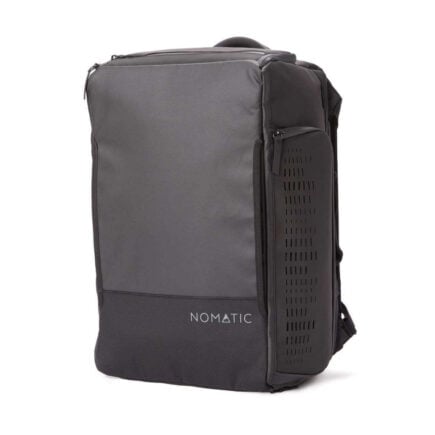
Nomatic Travel Bag
- Capacity > 30L
- Price > $299
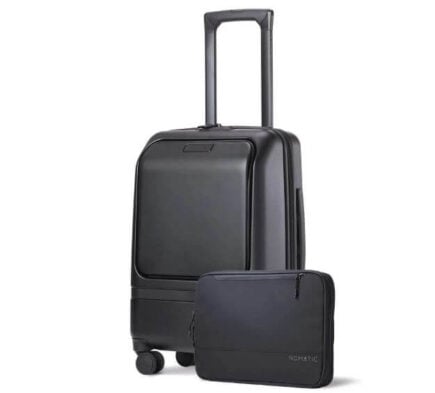
Nomatic Navigator Carry On
- Capacity > 37L
- Price > $400
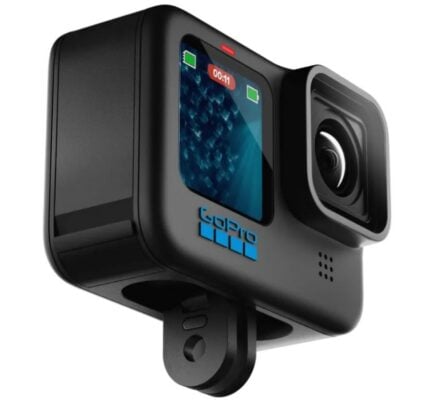
GoPro Hero 11
- Resolution > 5k
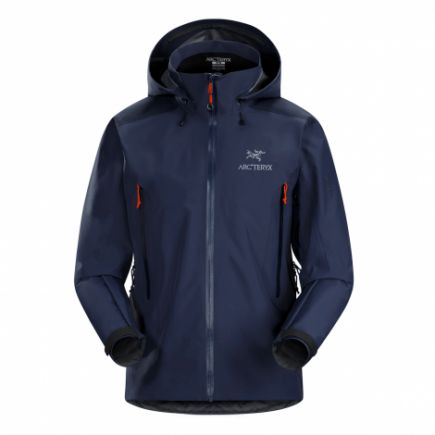
Arc’teryx Beta AR Jacket
- Price > $600

Insurance From World Nomads
- Price > Click For a Quote
Packing for New Zealand is made easier than ever thanks to our list. We’ll help you choose what to bring to New Zealand and offer up some choice picks on what to wear too,
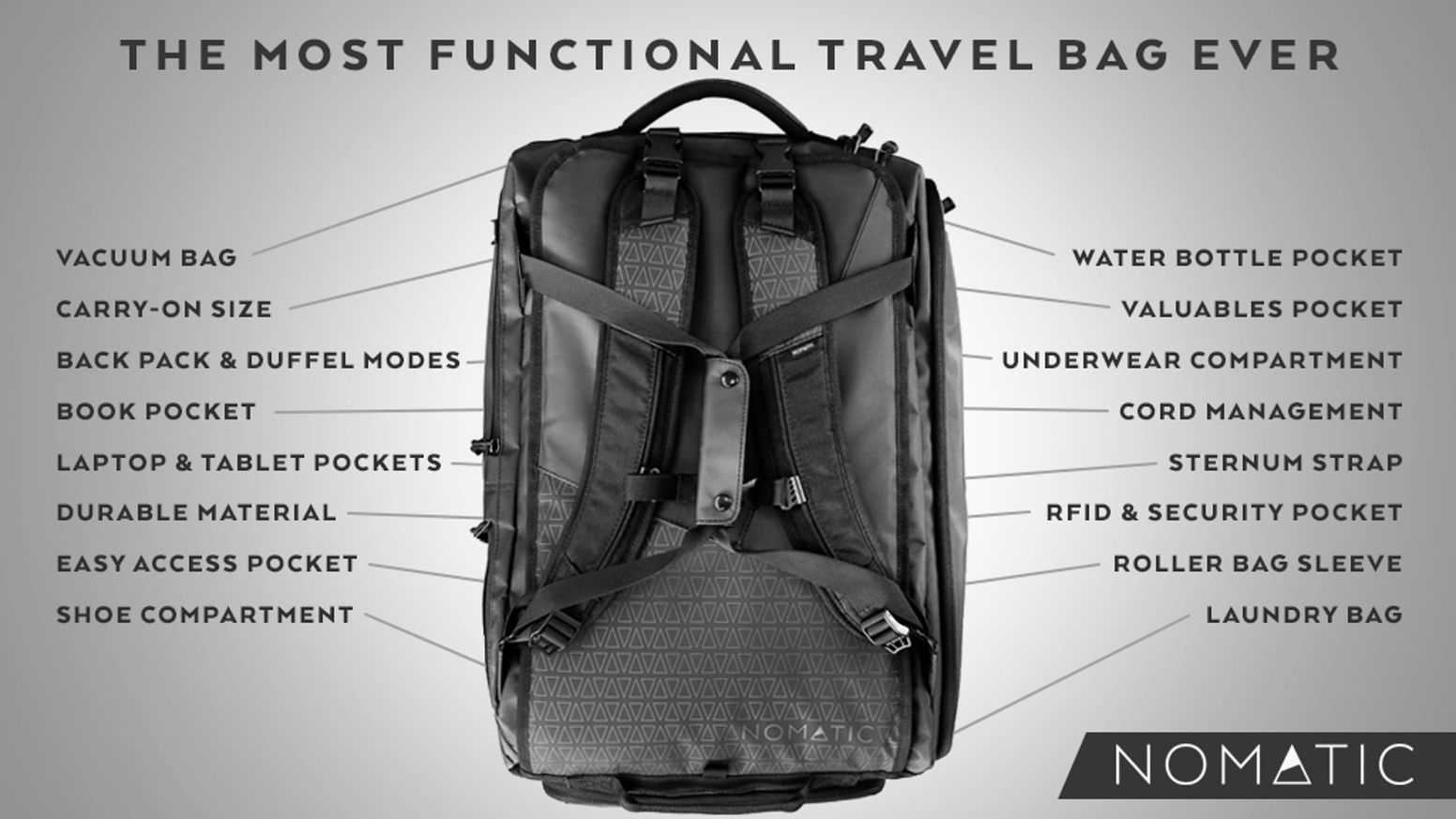
Best Backpack For New Zealand: Nomatic Travel Bag
Before you even take on the task of figuring out what to pack for New Zealand, you’ll need an amazing backpack to pack it all into. For all types of travelers and destinations, our number one recommendation is the Nomatic Travel Bag .
The Nomatic travel bag covers every detail to make backpacking travel the best experience. Because of its smart design, it manages to provide loads of packing space in a convenient, carry-on size package! Its handy built-in pockets make plenty of room for all the necessities on your what to pack for New Zealand checklist – you’ll find separate compartments for important items like shoes, water bottle, electronics, underwear and tough hiking socks . As an added bonus, there’s also an RFID-safe and cord management pocket.
You have a choice between backpack or duffel bag carry, and extra carrying comfort for your back thanks to its innovative strap system and detachable sternum strap. And its black, waterproof material is every bit sleek and modern as it is durable and tough. There is a reason why most Broke Backpacker staff swear by this backpack.
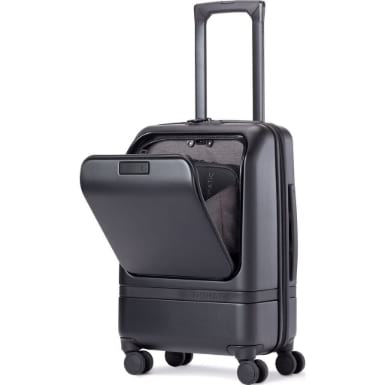
Best Suitcase For New Zealand: Nomatic Carry-On Pro
Backpacks not your thing? That’s ok. Our friends at Nomatic are back again with a great alternative to their badass Travel Bag; the Nomatic Carry-On Pro.
This suitcase is ultra-durable, sleek, and comes with a handy tech compartment for transporting your laptop and other electronic bits. Nomatic has been an industry leader when it comes to travel gear and that reputation is reflected in the quality build design and functionality of the Carry-On Pro suitcase. However, this may not be big enough to pack all you need for your New Zealand adventure so is more one for short trips to the cities.
Check out our Nomatic Carry-On Pro review to learn more about this epic suitcase.
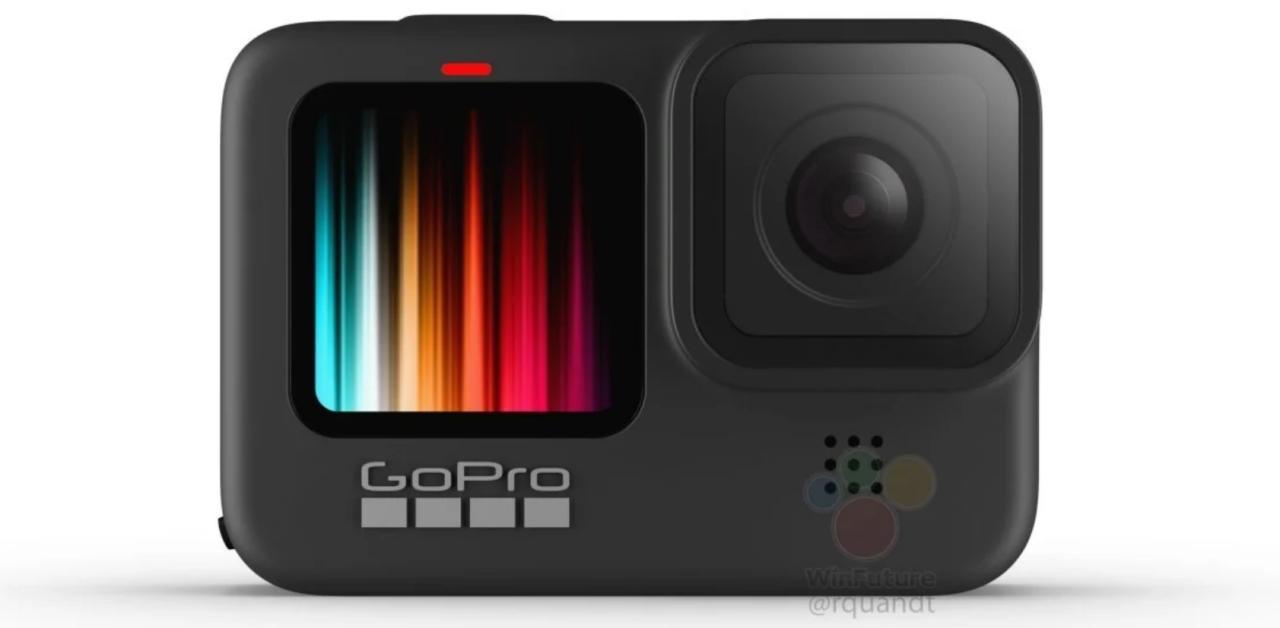
Best Camera For New Zealand: GoPro Hero9 Black
For most of us, our smartphones now feature cameras with stunning photo capabilities.
But… if you are an aspiring photographer who wants to take next-level photos and video beyond iPhone selfies, I recommend going with an action camera like the GoPro Hero9 Black . It does deliver pro-quality video and gives you a bunch of a different angle options and shooting speeds to work with for photos (including a selfie-mode).
Think of a camera purchase like this as a long term investment that will have you capturing epic shots well beyond your time exploring here. If you are looking for something cheaper for video specifically, check out these epic GoPro Alternatives .
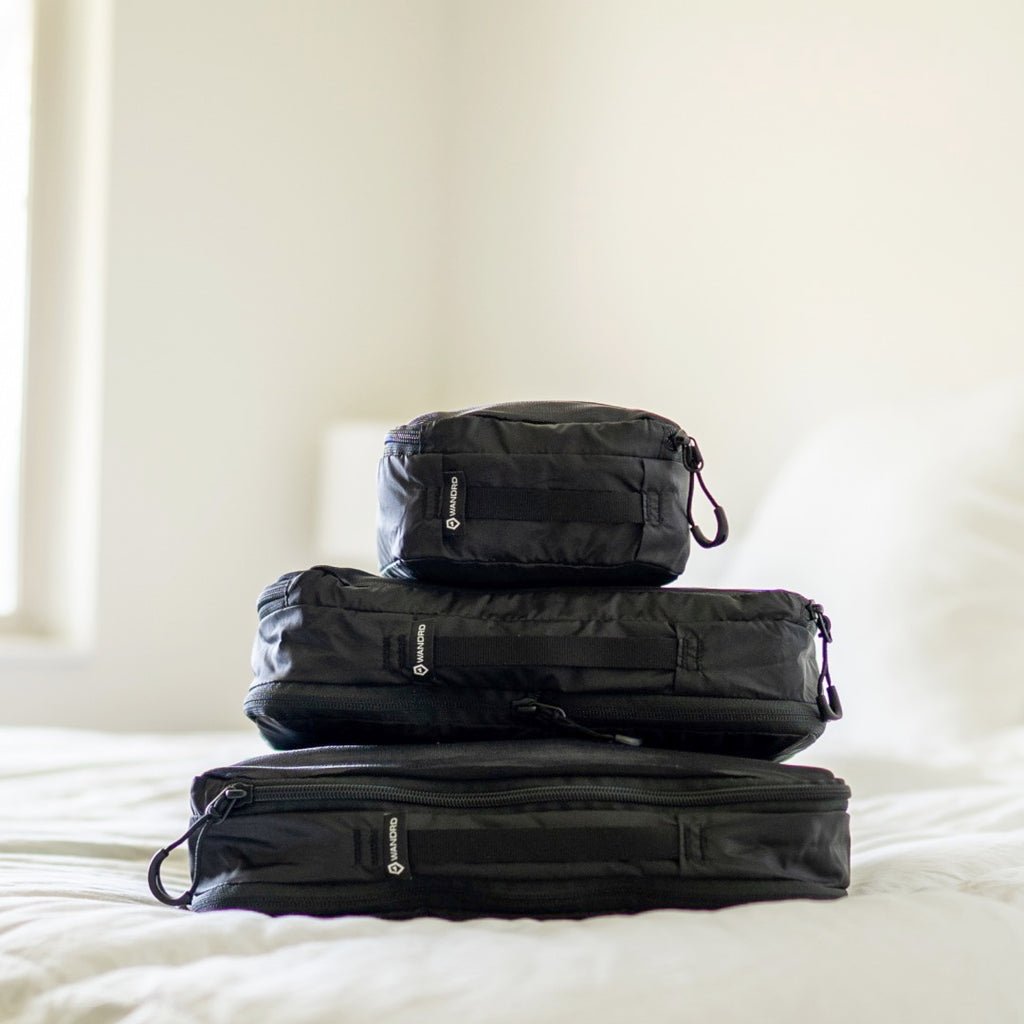
Packing Cubes For New Zealand – Wandrd Packing Cubes
In case you have never used them, packing cubes are little compression cubes that allow you to neatly pack clothes in in order to help facilitate better packing. They allow you to pack more stuff, and to keep it all better organised.
For the longest time, I thought that packing cubes were a superfluous indulgence, but boy was I wrong. Now I never travel without a few. These ones from WANDRD are great quality and excellent value for money. Get them on your Australia packing list now!

Best Sim For New Zealand – HolaFly eSim
The good news about NZ is that there is extensive 4g and 5g Internet coverage offering ready access to taxi apps and food delivery apps. The bad news is that your native SIM card will most probably not work and so you will not be able to access any of this online goodness until you rectify that particular situation.
You can waste time hanging around phone shops queuing to get a plastic sim or you can simply install a eSim onto your phone before you leave home. You just access the HolaFly site, choose the relevant package, download it and off you go – you are online the moment you land at the airport. eSims are easier to set up and better than the environment than plastic sims. The downside is that not all phones are eSim ready.
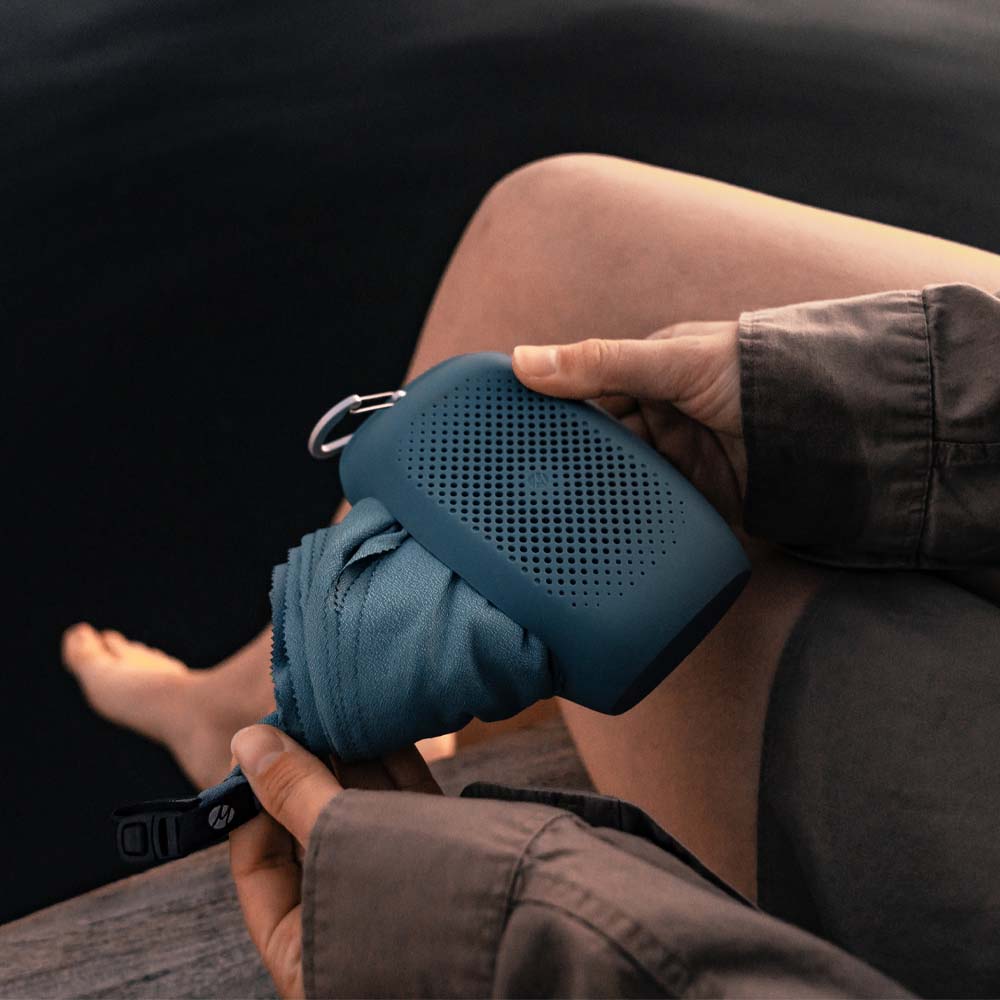
Best Travel Towel For New Zealand – Matador Packable Towel
Towels are essential backpacking gear as a lot of hostels don’t provide them or if they do, they may not really be all that clean. However don’t bring a ‘normal’ towel on your backpacking journeys, they are big and take up loads of room in your pack and they take ages to dry.
Travel pros like use micro-fibre dry towels that roll up into tiny, space saving proportions AND they dry unbelievably quick. Granted, they are not quite as comforting as a cotton towel but its a trade of that travellers need to make. A good micro-fibre travel towers is essential travel gear on any ultimate backpacking gear list.
There is a lot to think about when packing for New Zealand. Firstly, the country does get proper seasons and can be hot in the summer and snowy in the winter. Then you need to factor in what kinds of activities you will doing whether it will be trekking & camping, surfing or camper-vanning.
And of course, New Zealand is an outdoorsy kind of place so you may also need to pack in some proper terrain and camping gear too.
This checklist is not intended to micro manage your packing and we are not going to tell you exactly what to wear in New Zealand. However, we are going to make some choice suggestions about some some top notch adventure gear.
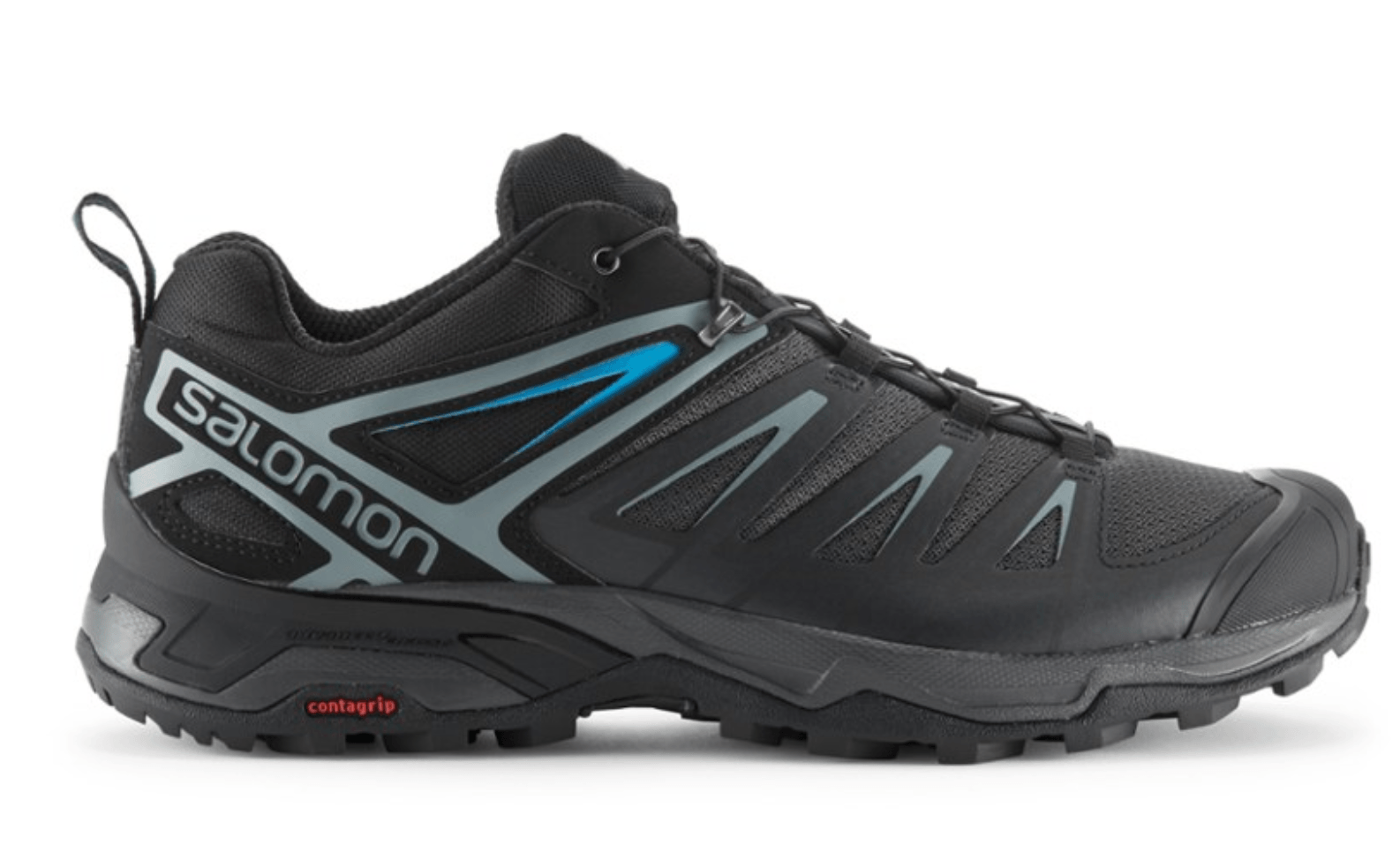
Salomon X Ultra 3 Low Aero
Your New Zealand trip will probably involve a hell of a lot of walking. Therefore it is important to make sure you have some good quality footwear.
I admit that most shoes that are also good for hiking are not the most attractive pieces of footwear. But they are some of the most comfortable and deliver good ankle support for a long day of walking about town.
If you plan to do some serious hiking in New Zealand , then you may wish to consider getting some boots instead.
Check out the women’s Salomon X Ultra 3 Low Aero .
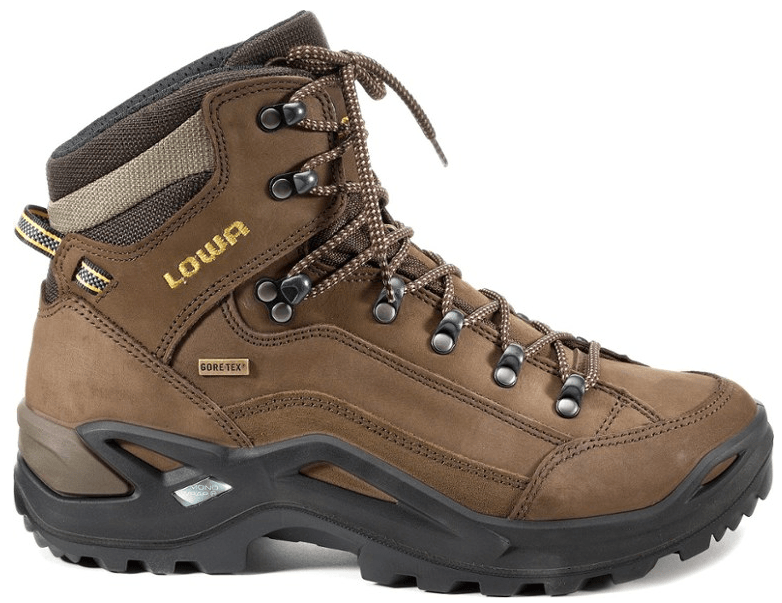
Lowa Renegade GTX Mid Hiking Boots
If you are visiting during the winter or simply doing some hardcore treks, then the above mentioned shoes may not cut it. If it snows or rains a lot, (which it probably will) then you will much better off in good quality boots.
These ones are awesome being warm, comfy, and enduring. They are suitable both for day hikes, the golden circle and for checking out the museums and bars in Wellington.
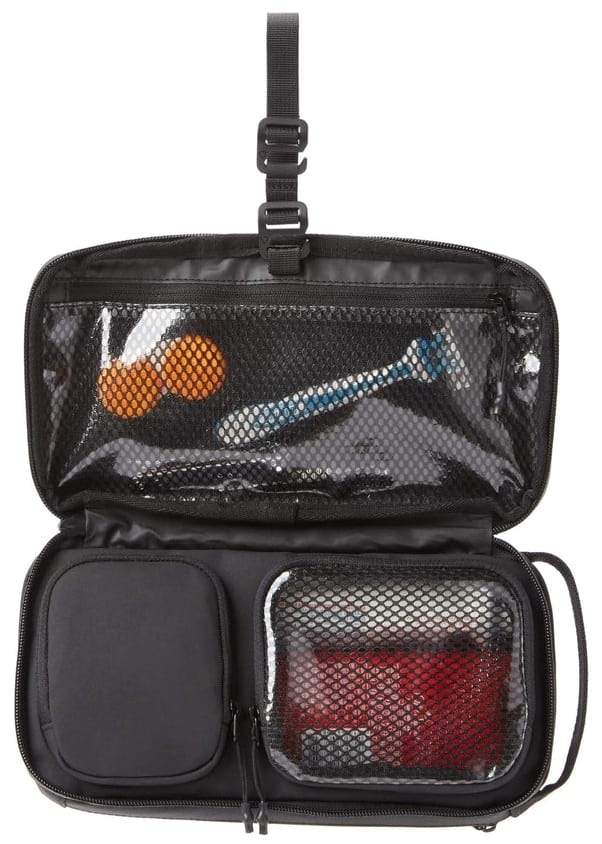
Hanging Toiletry Bag
Another backpacker/traveler favorite for staying organized is a hanging toiletry bag . It’s extremely helpful to have all of your accessories neatly gathered in one bag that you can hang for easy accessibility, especially when counter space isn’t plentiful or even available. A well-organized bag is worth having whether you’re tree whilst camping or a hook in the wall – it helps to have quick access to all your stuff.
Historically, I have been the guy who has my stuff all over the bathroom, so getting one of these things really changed the toiletry game for me. Plus they are not too expensive either. A no-brainer essential when packing for Australia.
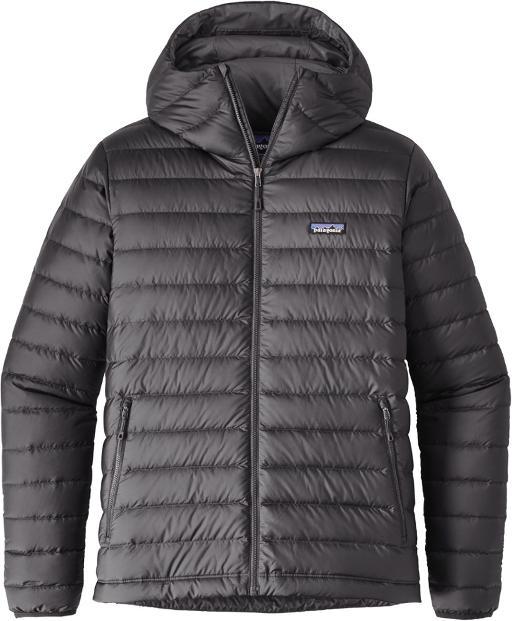
Patagonia Down Sweater Hoody
Even in summer months, New Zealand can get pretty cool especially at night It is therefore essential to bring a little something to keep you warm. This is especially true if you’re going to be camping or heading out in nature overnight.
This is our top pick for summer wear it weighs just under a pound and provides an excellent weight to warmth ratio. If you don’t go for one of the super bright colors, it is pretty stylish and city-worthy also.
If visiting New Zealand in the winter, then you should check out the next item instead.
Check out our best travel jackets article for more inspiration.
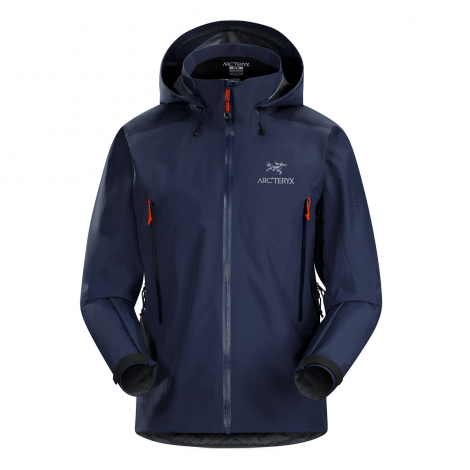
Arcteryx Beta AR
Did you know that the surface of the earth is over 70% covered in water? And you know how that water got there? Yep because it tends to here rain here on planet earth quite a lot! New Zealand can get seriously drizzly especially in autumn and winter.
There is no such thing as bad weather, only the wing gear for it. Don’t let a bit (of a lot) of rain ruin your trip and make sure you are ready with some top notch rain gear.
This is our pick of the many rain jackets we have tried. It’s reliable & stylish and looks good worn out in the mountains or in city bars.
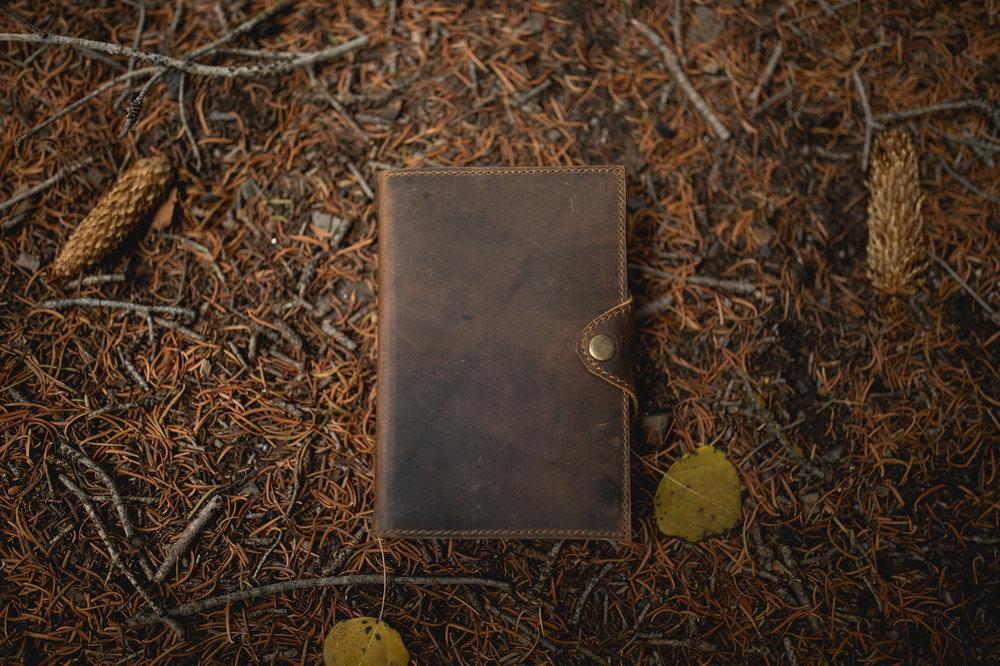
Planner/Travel Journal
Keeping a journal is one of the best things to do when traveling. The Drifter Leather Journal by Kodiak is our favorite, it works great for digital nomads and organized backpackers and can be used as planner or a dream diary – whatever you want!
Keep on track with your goals, travels and save those precious memories, especially the ones you do not want to share online. This one is bound in beautiful leather so it looks beautiful and will withstand life on the road.
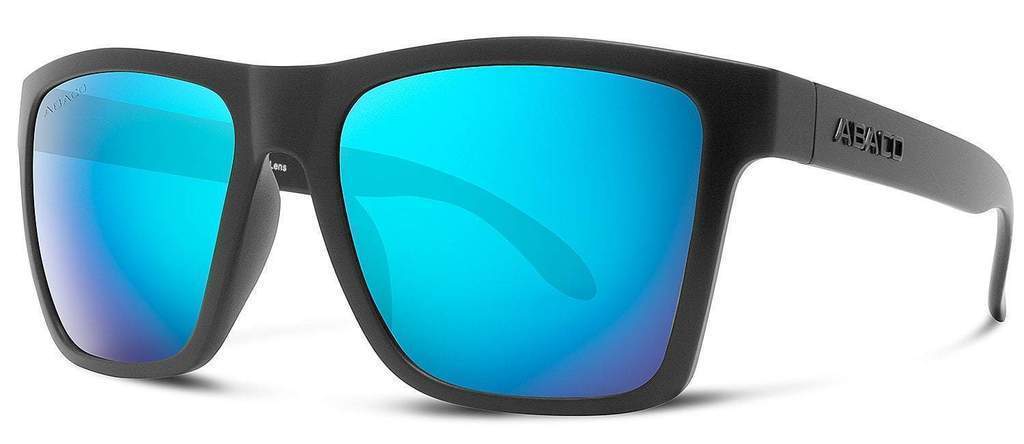
Abaco Sunglasses
A reliable pair of sunglasses is undoubtedly one of your New Zealand packing essentials. Our favorites are Abaco Polarized Sunglasses because they deliver on quality and style.
They’re built tough with triple-layer scratch-resistant lenses and trademarked Adventure-proof Frame Material. You can also customize them with your choice of lens and frame colors to reflect your own style.
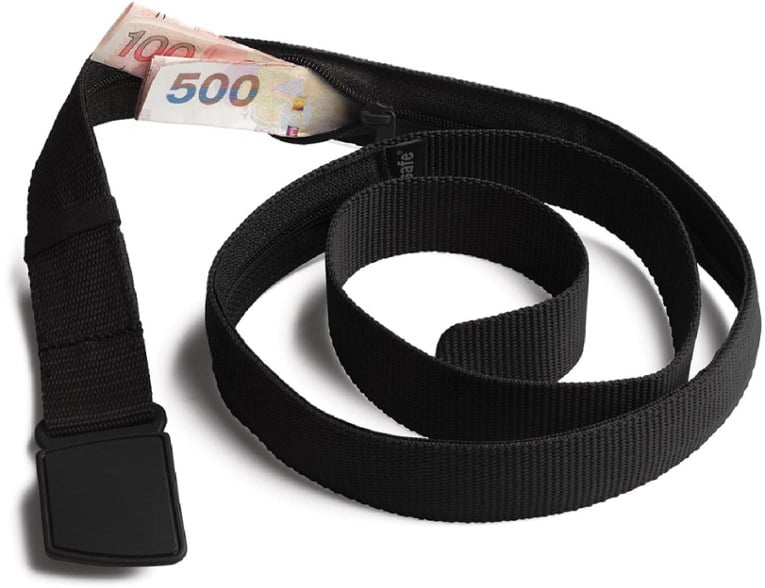
Money Belt By Pacsafe
Whilst New Zealand is not particularly dangerous, crime can still happen and tourists are sometimes targeted.
Therefore it is always a good idea to use a money belt to hide your cash just in case something does go wrong.
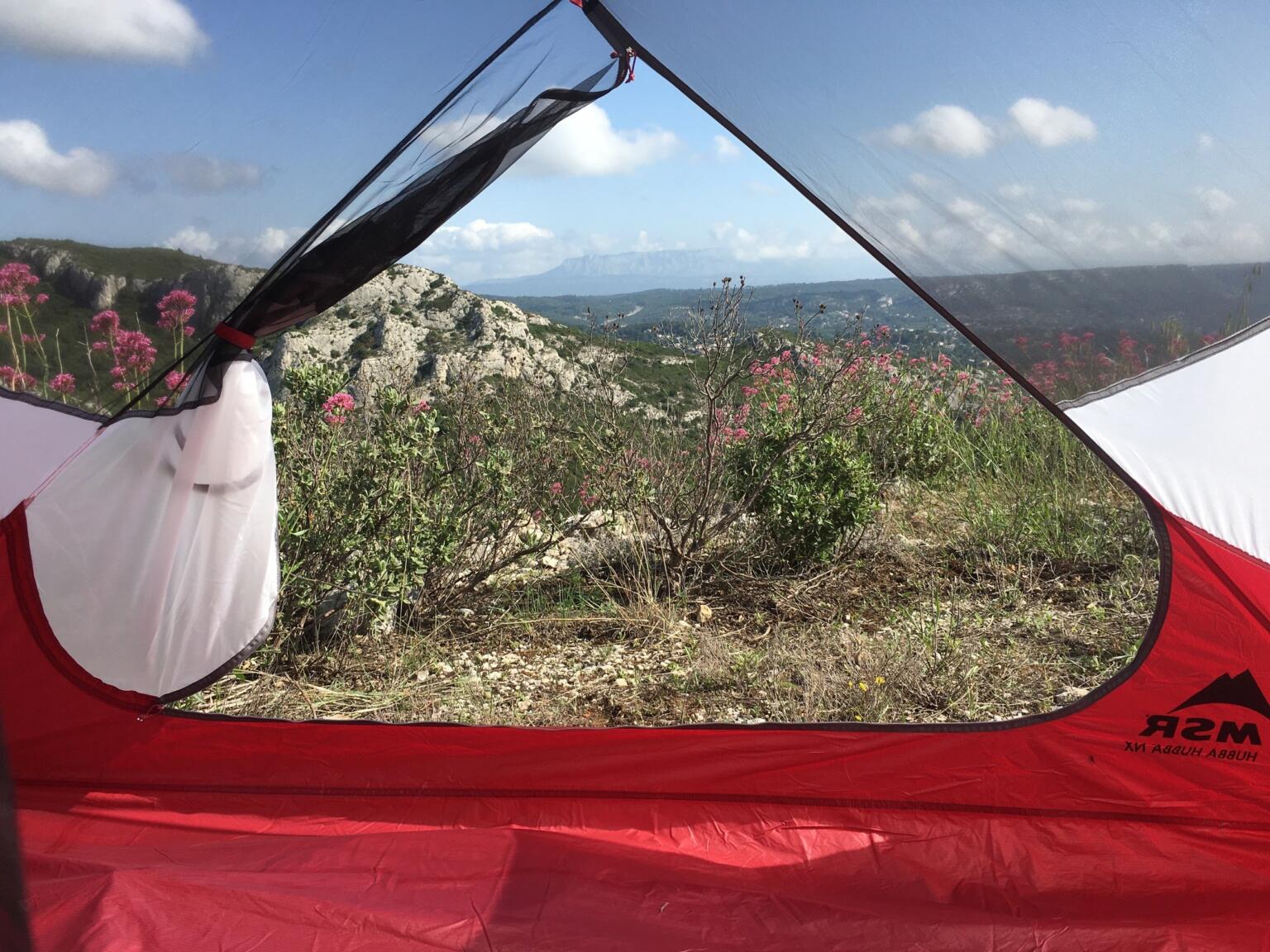
MSR Hubba Hubba 2p
New Zealand presents some of the best camping ops you will ever come across and it would be a real shame not to take full advantage. Don’t miss out and pack yourself a tent so you can get sleeping under the stars.
This is a high quality, and LIGHT tent. Granted it may not quite make the cut as ultralight backpacking gear but think of what you’re getting! The MSR Hubba Hubba 2p is mega-roomy and has multiple of pockets for keeping your self organized when settling in for the night.As far as budget backpacking tents go, this is one of the best. It’s a happy medium between the ‘prepared for anything’ mode and the ‘I wanted to go for a trek so I bought this for 2000 rupees’ afterthought.
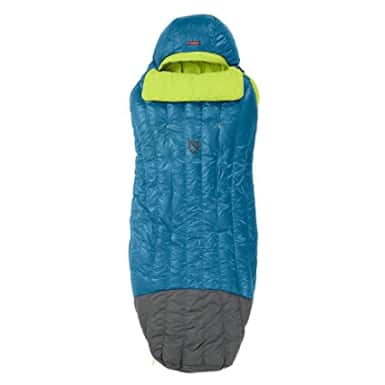
Nemo Disco 15
At some point in your trip to New Zealand, you will probably go camping. Whilst you can probably buy or rent over there, it makes more sense to invest your pennies in a good peace of gear that will serve you for many a trip to come. Therefore bringing a sleeping bag is often a great investment.
There are a LOT of sleeping bags on the market today and we have tried a lot of them. The quality and standards varies and not always in correlation with the price – pricey does not always mean better. The Nemo Disco 15 is a great all rounder sleeping bag packing in warmth, durability and a reasonable price tag.
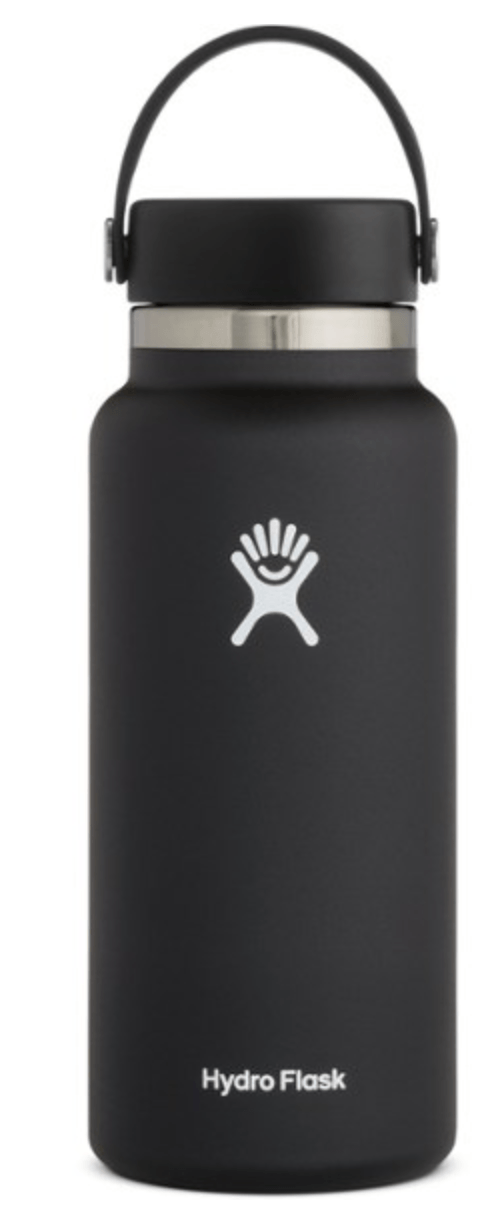
Hydroflask Vacuum Bottle 32 oz.
Packing a reusable water bottle is probably the best thing you can personally do to combat single-use plastic bottle use whilst traveling. There is simply zero need to buy plastic water bottles. The tap water in New Zealand is good to drink so you can fill it up each morning before you head out.
We love the Hydroflask Vacum Bottle for its quality and because it keeps cold water cold for many hours and vice versa for hot beverages. This bottle is the ideal water bottle to get not just for your New Zealand trip but for daily use. Please don’t be that person buying plastic water bottles. We are all judging you…especially mother earth.
If you go with the Hydroflask, you’ll probably never need to buy another waterbottle again.
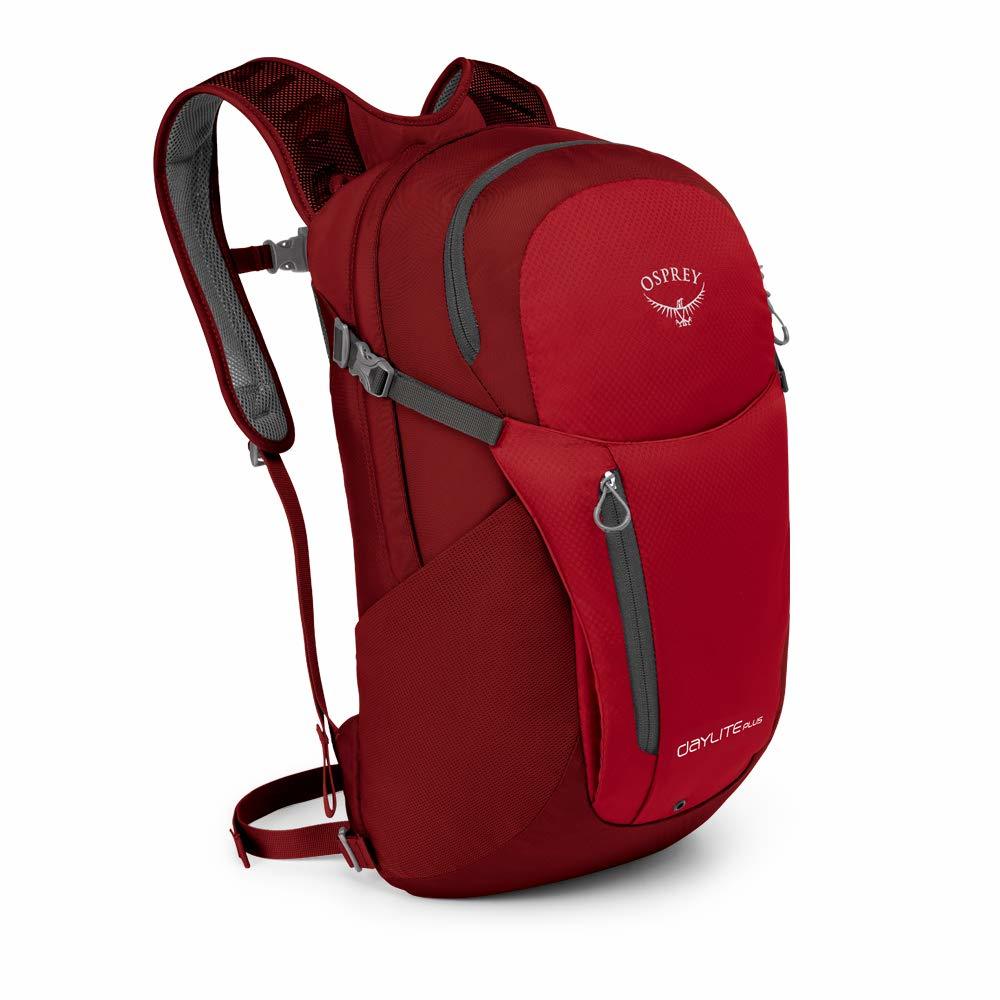
Osprey Daylite Plus
If you intend on doing any hiking then you will need a daypack. They are great for carrying water, hat’s and gloves and for packing sandwiches for lunch. We love Osprey products and this daypack is our personal pick.
The Osprey Daylite Plus has a mesh-covered panel to keep your back cool and fresh by minimizing contact with the back of the pack itself and allowing air to get between you and the pack.
Check out our full review of the Osprey Daylite plus for more details.
Additionally, you can attach it to other Osprey packs in case you want to add more capacity and carry just one piece of luggage… but the reviews on this feature are mixed.

Our GREATEST Travel Secrets…
Pop your email here & get the original Broke Backpacker Bible for FREE.
There it is, mates! You’re now equipped with all you need to know on what to pack for New Zealand with our complete New Zealand survival guide. Remember to refer back to the top-23 needs packing list, our tips on what to wear and how to dress in New Zealand, a detailed look at Kiwi seasons and how to pack accordingly for varying weather conditions. You also have our recommendations for women and men for their own packing lists – plus, what NOT to pack for New Zealand.
We hope all of this information has sparked your fire for your travels and eased your mind about the preparation part. Just think – the next phase is all the fun stuff! You’ll soon be submerged in all of New Zealand’s splendor and living it up Kiwi-style. You’re in for a magical ride!

And for transparency’s sake, please know that some of the links in our content are affiliate links . That means that if you book your accommodation, buy your gear, or sort your insurance through our link, we earn a small commission (at no extra cost to you). That said, we only link to the gear we trust and never recommend services we don’t believe are up to scratch. Again, thank you!
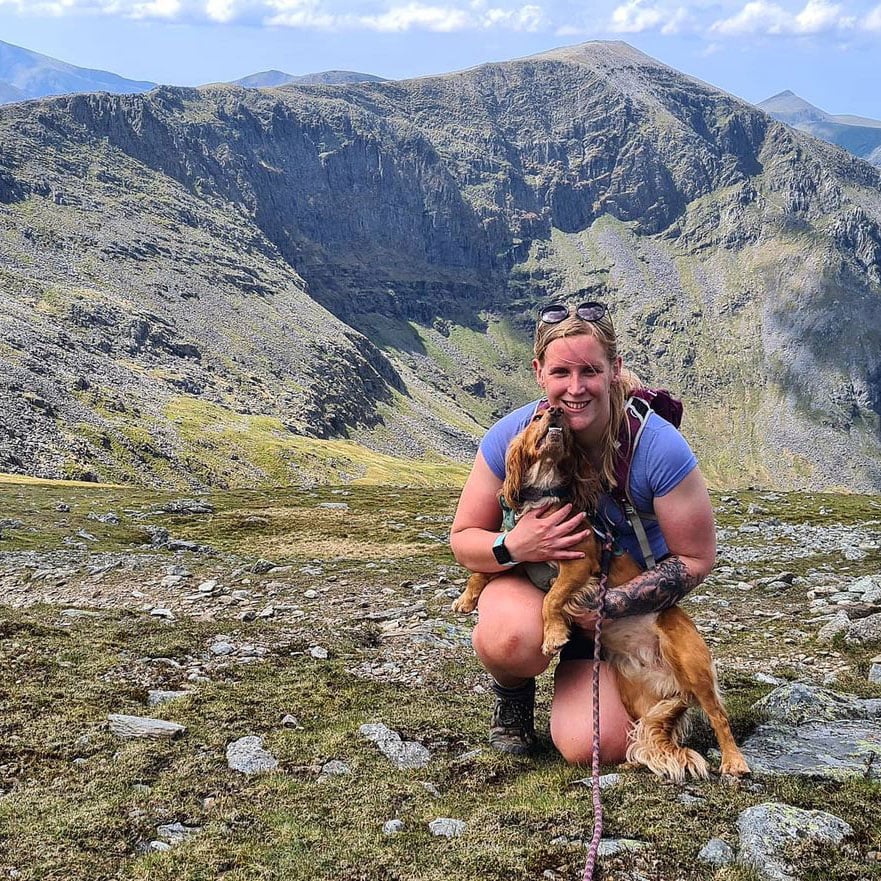
Share or save this post

Leave a Reply Cancel reply
Your email address will not be published. Required fields are marked *
Save my name, email, and website in this browser for the next time I comment.
Notify me of followup comments via e-mail.
- Skip to primary navigation
- Skip to main content
- Skip to primary sidebar
- Skip to footer
TravelAwaits
Our mission is to serve the 50+ traveler who's ready to cross a few items off their bucket list.
16 Things To Know Before Your First Trip To New Zealand

- Australia and South Pacific
- Destinations
- New Zealand
- News and Tips
- Travel Tips
I arrived in Christchurch, New Zealand, in February 2020. I had planned to stay for three to four weeks on my way around the world. Instead, I decided to wait out the pandemic and spent almost 2 years there. During that time, I learned a lot about the culture.
Here are 17 things you should know before coming to this wonderful country.

1. It’s Not ‘Down Under’
I realized while living there that I became as insulted as a Kiwi when someone suggested that I was “Down Under.” I know that New Zealand is a small country, but no, it’s not part of Australia. If you imply that this beautiful nation is part of Oz, or confuse the two, don’t be surprised to find that you’ve offended the locals.
2. There Are Only Two Types Of Kiwi
If you’re not from New Zealand, you most likely think there are three types of kiwi: a bird, a New Zealander, and a fruit. In fact, the fruit is called a kiwifruit. When you’re here, if you say, “I ate a delicious kiwi!” you’re either saying that you’re a cannibal or that you’ve eaten a protected species. Due to your accent, you’ll probably be forgiven.
3. There’s A Lot Of Cussing
Coming from America, where we’re more sensitive to cuss words, you might be surprised to find that these lovely people have the potty mouths of sailors. It takes some getting used to, and it’s not meant to offend. Kiwis (the people) are wonderful, and they also throw around expletives like nothing else. Don’t take it personally.
4. Many People Walk Barefoot
This is one of the most surprising — and delightful — things I’ve seen around the country. Traveling the globe, and growing up in New York City, I associated bare feet with poverty or beach time. In New Zealand, it’s how people connect with nature. From the time they can walk, they do so without shoes. You’ll see people walking barefoot in supermarkets and around town, but mostly, you’ll see them in nature. I don’t have the thick skin they do, but I enjoyed nature walks in my bare feet, and it felt superbly scandalous shedding my shoes to buy groceries. It’s a connection I haven’t had a lot in my life, and I am so grateful for it. When you come here, try to ditch your shoes as much as possible.

5. They Take Nature Seriously
On the subject of nature, New Zealand respects it more than most places I’ve been. Plastic bags have been gone for ages. (If you forget to bring a tote to the supermarket, you can buy paper or cloth bags only.) Almost every home has compost, recycling is essential, and most people I met have at least a small garden where they grow their own food. In fact, if you don’t treat the land with respect, you could be expelled — like these tourists were for littering, among other offenses.

6. Maori Are An Integral Part Of The Culture
I loved meeting the Maori of New Zealand. The first things you’ll notice, perhaps, are their beautiful tattoos. Women sometimes have one on their chin, and men sometimes have a full-face tattoo known as a ta moko . The designs are specific to the tribes they descend from and represent their ancestry as well as their present families.
I highly recommend speaking with the Maori to learn about their culture. Consider venturing to Waitangi to learn about how New Zealand came to be. The country is in the process of making amends to the true founders of New Zealand, and while not everything is perfect, I think New Zealand is far ahead of the world in their efforts and sensitivities.
7. Doors Lock The Opposite Way
You’re probably aware that people drive on the left side of the road in New Zealand. What you may not know is that doors lock in the opposite direction than they do in the United States. This will seem an unimportant detail until you find yourself in a public restroom, unable to get out because you can’t unlock the door. You’ll thank me, after you finish panicking, when you remember to turn the lock in the other direction to make your exit.
8. People Are Unbelievably Nice And Helpful…
All over New Zealand, I’ve found that strangers make eye contact and say hello. I’ve also found that they go out of their way to be helpful. Whether at the supermarket, the drugstore, or immigration, the staff I’ve encountered have never been dismissive. Instead, they’ve spent up to 20 minutes on the phone or in person trying to exhaust all the resources they can think of to help me. It is very endearing. If you do end up getting locked in a public restroom, I’m certain that anyone who hears your plea for help will get you out of there.

9. …Except If You’re A Pedestrian, And They’re Driving
In sharp contrast to their kindness is the driving temperament of the average Kiwi. I’ve been shocked to realize, several times, that if I hadn’t run, a driver would have hit me, because they showed no sign of slowing down. I strongly suggest that you use the marked crosswalks, and, even then, check to be sure the oncoming traffic has slowed for you.
10. The North Island Is Worth Your Attention
All the marketing will drive you to the South Island of New Zealand. It is spectacularly beautiful. And it’s also very touristy during peak season. I spent most of my time on the North Island. It’s a bit less touristy, is home to more Maori, and boasts some beautiful spots as well. If you only have a short time, you might focus on Auckland , Wellington, and Rotorua. But if you’ll be here longer , consider going to a few places less frequented by tourists .
11. The Sun Is Severe
You may know that there’s a hole in the ozone layer. I’ve never been burned so quickly by the sun in my life. In the summer, even a few minutes under the sun after 5 p.m. left me with a light sunburn. There are many cases of skin cancer here because the sun is so severe. I learned to cover myself from head to toe, even in hot weather. Definitely bring sun clothing, or plan to slather on a lot of sunscreen.

12. You’ll Need A Good Hat
Another part of your experience will be gusty breezes all year round. If your hat isn’t secured to your head, it will fly off on a boat, on a hike, or in the middle of traffic. They sell hats here that tie or strap beneath the chin. They aren’t the most glamorous, but you’ll quickly realize how sensible they are.
13. You Pay For Meals At The Counter, And You Don’t Tip
My first few weeks in New Zealand left me thinking that the waitresses didn’t like me. Every time I ate at a restaurant, no one came by to ask if I wanted more, and nobody ever asked if I wanted the bill. Eventually, I wizened up to the fact that when you’re done eating, you go to the counter and pay. Whether you order and pay up front, or whether you sit down and place your order at your table, you’ll always pay at the counter, and you’ll never get a bill. I believe part of the logic is that not printing all those bills saves a lot of paper.
The other shocking and wonderful thing about all services in New Zealand is that there’s no tipping. Instead, people are paid a decent wage, so they don’t depend on tips to make up for the lack of a decent paycheck.
14. You Might Experience An Earthquake
There are earthquakes every day, so chances are you’ll experience one. You might feel your bed shake for a few seconds. I was in Napier for the recent big one with tsunami warnings. It was quite a moving experience.

15. You’ll See A Lot Of Cows
There are a lot of cows in New Zealand. In fact, there are more cows than people. Everyone talks about the sheep, but the cows are worthy of your attention. There are beautiful crossbreeds that I’ve never seen before. A few vacation rentals will let you stay on a working farm and milk the cows — a great experience. Also, the beef is grass fed and tastes very different from the hamburgers and steak back in America. It’s better for you, but you’ll have to get used to the taste.

16. Birds Will Be A Big Part Of Your Trip
The native birds of New Zealand are beautiful — and likely to wake you up each morning, unless you’re only staying in large cities. I got familiar with the call of the tui; enjoyed the chattering visits of fantails who, several times, nearly landed on my hand; and was amused by the kereru, or wood pigeon, who prefers landing in bushes and on branches much too small for its size.
My favorite bird experience, however, was seeing kiwi in nature, at night. Instead of going to a bird sanctuary and seeing them in a glass box, get out to a reserve, bring a red light (they’ll run away from bright white flashlights), and treat yourself to the sight of this amazing bird walking free. Their gait and body seem prehistoric, and I felt that I had been transported back in time.
New Zealand is one of the most beautiful countries in the world. Landscapes that will take your breath away await at every turn. Smiling people who love their homeland will proudly show you around. Whether you come for adventure, touring, camping, or culture, you will love your time in New Zealand.

Heather is a full-time travel coach who is passionate about helping professionals seeking more freedom and flexibility to ditch their desk and discover their destiny through full-time travel. She provides her clients with the path to the mindset, money, and mastery to make a full-time travel lifestyle possible. Since quitting, she's become an international best-selling author and is about to do her first TEDx talk! Learn more about Heather's travel adventures on her website, Heather Begins.
- Today's news
- Reviews and deals
- Climate change
- 2024 election
- Fall allergies
- Health news
- Mental health
- Sexual health
- Family health
- So mini ways
- Unapologetically
- Buying guides
Entertainment
- How to Watch
- My Portfolio
- Latest News
- Stock Market
- Premium News
- Biden Economy
- EV Deep Dive
- Stocks: Most Actives
- Stocks: Gainers
- Stocks: Losers
- Trending Tickers
- World Indices
- US Treasury Bonds
- Top Mutual Funds
- Highest Open Interest
- Highest Implied Volatility
- Stock Comparison
- Advanced Charts
- Currency Converter
- Basic Materials
- Communication Services
- Consumer Cyclical
- Consumer Defensive
- Financial Services
- Industrials
- Real Estate
- Mutual Funds
- Credit cards
- Balance Transfer Cards
- Cash-back Cards
- Rewards Cards
- Travel Cards
- Personal Loans
- Student Loans
- Car Insurance
- Morning Brief
- Market Domination
- Market Domination Overtime
- Opening Bid
- Stocks in Translation
- Lead This Way
- Good Buy or Goodbye?
- Fantasy football
- Pro Pick 'Em
- College Pick 'Em
- Fantasy baseball
- Fantasy hockey
- Fantasy basketball
- Download the app
- Daily fantasy
- Scores and schedules
- GameChannel
- World Baseball Classic
- Premier League
- CONCACAF League
- Champions League
- Motorsports
- Horse racing
- Newsletters
New on Yahoo
- Privacy Dashboard
Yahoo Finance
5 summer must-haves under $100 you can buy at costco.
Some shoppers invest in a warehouse club membership to keep more money in the bank . They use their membership perks to access exclusive deals and stock up on essentials. A Costco membership card may be handy if you're preparing for the summer months and plan to shop for essentials soon. Check out these summer finds that you can buy from Costco for less than $100.
1. Tommy Bahama Beach Chair, two-pack: $79.99
Investing in high-quality beach chairs can be worthwhile if you'll be spending time at the beach this summer. A two-pack of Tommy Bahama beach chairs is available for $79.99. The chairs are available in several designs and can be positioned in multiple ways. This is an online-only buy, so you won't find these chairs at your local club.
2. Feit Electric 48' LED Filament String Light Set: $69.99
If you're ready to spruce up your patio or porch area so you're motivated to spend more time outdoors during the warmer months, a nice set of patio lights can help! Costco sells the Feit Electric 48' LED Filament String Light Set. You can get a two-pack for $69.99 through May 5, 2024. Once this additional sale ends, you'll spend $89.99 for a two-pack of lights. Each string of lights features a heavy-duty cord for added durability.
3. OFF! Deep Woods Dry Insect Repellent Set: $19.99
Many families spend more time outdoors in the summer, exposing them to more bugs. If your family likes to hang out outside, you may want to add bug spray to your summer shopping list. If you're a Costco member, you can score a three-pack of OFF! Deep Woods Dry Insect Repellent products for $19.99 at Costco. You'll get two six-ounce and one four-ounce container of dry spray. This spray can help you deter mosquitoes, ticks, and other bugs. Thanks to this affordable price, you won't have to worry about a spendy credit card bill after shopping.
4. Harbor Bay 2-pack Beach Towel: $28.99
Another essential to have on hand this summer is beach towels. Costco is offering Harbor Bay beach towels for $28.99 for two . Each towel is made from 100% cotton and is a larger 40-inch by 72-inch size. Multiple designs are available. This is a solid deal if you want to stock up on extra beach towels for pool or beach days without draining your checking account.
5. Cascade Mountain Tech 2-person Travel Hammock: $24.99
Summer is ideal for relaxing in a hammock and reading a good book. The Cascade Mountain Tech 2-person Travel Hammock is available at Costco for $24.99. Typically priced at $29.99, it's available for an additional $5 off through May 11, 2024. It's made with durable, breathable nylon fabric and includes a storage bag, two carabiners, and two straps. Up to two people can comfortably lounge in this hammock . This deal is only available online.
Every dollar you save adds up
Now may be an excellent time to become a Costco member. Consider whether you're planning to buy any big-ticket items and whether you can get a better discount by shopping at Costco. You'll need to pay a yearly membership fee of $60 or $120, but the savings may be worth it if you live near a club. Every dollar you save when shopping can benefit your personal finances.
Top credit card to use at Costco (and everywhere else!)
If you’re shopping with a debit card, you could be missing out on hundreds or even thousands of dollars each year. These versatile credit cards offer huge rewards everywhere, including Costco, and are rated the best cards of 2024 by our experts because they offer hefty sign-up bonuses and outstanding cash rewards. Plus, you’ll save on credit card interest because all of these recommendations include a competitive 0% interest period.
Click here to read our expert recommendations for free!
We're firm believers in the Golden Rule, which is why editorial opinions are ours alone and have not been previously reviewed, approved, or endorsed by included advertisers. The Ascent does not cover all offers on the market. Editorial content from The Ascent is separate from The Motley Fool editorial content and is created by a different analyst team. Natasha Gabrielle has no position in any of the stocks mentioned. The Motley Fool has positions in and recommends Costco Wholesale. The Motley Fool has a disclosure policy .
5 Summer Must-Haves Under $100 You Can Buy at Costco was originally published by The Motley Fool
Recommended Stories
Walmart is the nation’s largest grocer. why it added a new private label food brand..
The owned brand is a way to further cultivate shopper loyalty, and exclusive flavors set it apart from more basic brand offerings.
Is Costco (COST) a Buy as Wall Street Analysts Look Optimistic?
The average brokerage recommendation (ABR) for Costco (COST) is equivalent to a Buy. The overly optimistic recommendations of Wall Street analysts make the effectiveness of this highly sought-after metric questionable. So, is it worth buying the stock?
Walmart adds new grocery line to private brands portfolio
The retailer said its new bettergoods line includes 300 items and marks its largest private brand food launch in 20 years.
Are Retail-Wholesale Stocks Lagging Costco Wholesale (COST) This Year?
Here is how Costco (COST) and Jumia Technologies (JMIA) have performed compared to their sector so far this year.
St. James’s Place hires director of investment products
St. James' Place expands its workforce with the appointment of director of investment products.
Warwick Acoustics expands manufacturing operations at Europe’s largest automotive R&D site
New facilities will be established at the MIRA Technology Park (MTP) in Warwickshire, UK.
Costco vs. Sam's Club: Which Is Better for Furniture?
Finding good furniture is hard. Read on to find out which discount membership club has the best furniture deals.
5 Things Costco Only Sells Online
If you limit your Costco shopping to stores only, you might miss out on a world of inventory. Here are some of the items you can only find at Costco.com.

The perfect New Zealand packing list
Having travelled all around New Zealand (and the world) with a 40L pack and day bag each, we’ve learnt exactly what’s essential and what’s better left at home. This no-fuss guide will help you to pack for your travels in New Zealand too – whether you want to travel light or be prepared for every eventuality.
Table of contents
Pack for New Zealand Year-Round
Packing light for different seasons in Aotearoa is one of the biggest challenges you’ll face. There is some gear you’ll need regardless of the season though. We just suggest you amend this list slightly depending on your own requirements.
If you’re only travelling over the course of summer, for example, you’ll probably have a little more room in your bag. Try to resist the temptation to ft extras in just because you have the room though as it will make your travels much easier. Changes are, you really don’t need as much as you think you do.

Travel Light
The truth is, in my day-to-day life, I’m a bit of a hoarder. Get me out on the road though, and I’ll gladly preach the benefits of packing and travelling light.
With less gear to cart around, you’ll have much more freedom in your travels (and you’ll save on pesky baggage fees if your gear falls within carry-on limits).
Whilst travelling in New Zealand, we’d recommend travelling light – it just makes life easier.
If there’s anything you forget at home, or that you desperately need on the road, we’re equipped with lots of wonderful shops. Second-hand stores can also be a great place to pick up items that you need at affordable prices.
Pro Tip: If travelling light doesn’t interest you, this packing list can easily be adapted – just throw a few more of each item in and won’t worry about leaving your bulkier items at home.
Consider the Season
If you’re travelling outside of the summer season we suggest you include at least some items from the ‘winter’ packing list we’ve included in this article.
The weather here can be very changeable so it’s always a good idea to have a jumper or raincoat handy.
Choose Easy-Wear Clothes That You Can Layer
If you’re aiming to keep your bag light, packing multi-purpose, easy-wear clothing is essential.
Choose clothing that doesn’t easily crease (and definitely doesn’t need ironing). Ensure that all of your colours and items work together, creating a capsule wardrobe. If there’s one item of clothing that will only work with one other, leave it at home – you want to be able to mix and match all of your gear.
By packing clothes that can be worn in layers, it’s easy to add another layer or remove one as the weather changes. This is the perfect way to dress in New Zealand, particularly during spring, autumn and winter .

Planning your first visit to New Zealand? 🇳🇿 Start here or check out these must-read articles:
Your New Zealand Packing List
Year-around packing, essentials: clothing and shoes.
We use this list for our core pack. We’ll then add in items from the ‘summer’ and/or ‘winter’ list depending on the weather we’re expecting.
Keep in mind that New Zealand is known for its changeable weather, so it’s best to have a range of items regardless of the season. For example, even in the summertime, I would have a pair of jeans and a hoodie/jersey to hand for evenings and rainy days.
- 4-6 pairs of socks .
- 4-6 pairs of underwear (+ 1 bra and 1 sports bra for women)
- (For women), a pair of exercise tights .
- 1 zip-up hoodie .
- A pair of jeans .
- A pair of light-weight running shoes . I love Nike Freeruns as they squash down small when not being worn.
- A pair of jandals/flip-flops . Particularly if you’re staying in hostels, to wear in the shower.
- A cotton neck buff . These beauties take up no space in your packs but help keep you warm in winter and the sun off your neck in the summer.
- Sunglasses .
Essentials: Bathroom/Laundry
- A lightweight towel . Some prefer sports towels but they’ve only ever shifted water around on us! We prefer Turkish cotton towels .
- Mini bottles of shampoo/conditioner/body wash and any other shower products you use (eg. moisturiser, cleanser). I love hair oil as it’s a lifesaver if I’m in and out of the ocean.
- (For women), hair ties , tampons etc.
- A bar of clothes-washing soap for handwashing in the shower/sink.
- Ziplock bags to keep everything dry and organised.
- First-aid gear . Painkillers, plasters, sleeping pills, cotton buds etc.
- Insect repellant .

Essentials: Electronics and Entertainment
- A smartphone . You can set your phone to roam, or pick up a local sim card. Even if you just use your phone for the apps though (currency conversion, translation, maps and more) it’s a great help.
- Your Netflix subscription . With the ability to download series and movies onto your phone/iPad, it’s a subscription that really does pay for itself on long bus/plane rides.
- Travel power adaptors . Find out about the power plugs we use in New Zealand .
- Headphones .
Essentials: Packing
- An amazing pack to put everything in! We love our Osprey Farpoint 40L packs – they’re hands-down the best bags out there if you ask us (and also come in a women’s fit if you prefer). Some may even prefer a slightly larger carry-on bag like the Osprey Porter 46L – we wouldn’t suggest going any larger though, unless you’re really giving up on the pack-light mentality. We love the hand’s free nature of a pack, but wheeled suitcases work well too.
- Packing cubes . These are invaluable if you’re planning to be in New Zealand for a longer period or for multi-season travel. #1, they allow you to fit more into your pack by compacting your gear down and #2, you can pack anything you don’t need for a while into specific cubes and hide them down the bottom of your pack.
- A day bag so you’re not left carting everything around on day trips. Again we love Osprey for this; we have a Tempest 20 and a Talon 22 .
Essentials: Travel Gear
- Your passport and an understanding of visa requirements .
- A small wallet .
- Two different credit cards or travel cards . Most shops in New Zealand will happily accept cards, but we also suggest you get some cash out of the ATM when you arrive.
Optional Extras
- An eReader or old-fashioned book.
- Better quality camera gear . Your average traveller might be happy with a cell phone camera but unsurprisingly, we wanted more. We took our Fuji X-T20 (which we adore) and also our DJI Mavic drone (which we sent home about three months in).
- A laptop . For us, these were essential (as we were working and blogging on the road) but probably wouldn’t be for many.
- Cutlery and a drink bottle .
- Snacks for the plane. Be mindful of what is and isn’t allowed when it comes to food though.
- If you’re planning on lots of hiking, hiking poles .
- Hiking boots .
Summer Add-Ons
Summer really is the best season to test out your carry-on only skills. With warm weather, light clothing and the ability to get things dried quickly, challenge yourself to leave excess clothing behind. As long as you can wash your clothes in the shower or basin as you go, you really won’t need as much as you’d think.
- 2-3 t-shirts . We prefer the quick-dry sports tops as they tend to stay looking nice for longer, are easy to wash, quick to dry and take up very little space.
- 1 pair of cotton shorts .
- 1 pair of quick-dry nylon shorts . Great for aquatic activities and to wear on washing days.
- Swimming togs .
- A cap or hat.
- Sunscreen .
- A long-sleeve rash top . Ones that zip open at the front are ideal, as they offer more flexibility in different temperatures.
- Keens or water shoes/sandals. These are great for rafting , canyoning and general water adventures.

Winter Packing for New Zealand
With cold weather comes a few more pack-light challenges. There’s no doubt, winter gear takes up more room and quality items are often expensive to replace (so you probably won’t want to buy them as you go).
With a few quality pieces though, it is possible to keep your weight down and your winter clothing to a minimum. Layers are key so don’t be afraid to put your summer gear to use to help keep yourself warm.
- 1-2 merino /thermal long-sleeve tops .
- 1-2 pairs of merino /thermal long-johns .
- 1 pair of track pants or hiking pants.
- A packable jacket that is both waterproof and warm. We love the Kathmandu XT driFILL down jacket .
- A snuggly beanie .
- 2 pairs of merino hiking socks .
- Gloves . If you feel the cold, lightweight gloves can be a great addition to your pack.
- A thick scarf . If you’ve got room, a square one will double as an extra blanket in a squeeze.

How Easy is it to Travel Light?
All in all, you’ll probably be surprised by how easy it is it pack a capsule wardrobe and cut down on the amount you pack.
It’s really important that packing light works for you, not against .
If you fall in love with something, don’t be afraid to buy it. If it doesn’t fit into our pack, it’s easy enough to pick up a cheap duffle bag.
Is that ideal? No.
Would we do it anyway? Absolutely!
As we look around our home, we have all sorts of awesome reminders of our travels that just wouldn’t have been possible had we held firm to our ‘pack light’ ideals.
After all, travel’s meant to be a pleasure, not a chore.
Happy packing!
Do you have more questions about packing for New Zealand? Join the conversation and get feedback from our members today!
Founder of one of Aotearoa's most popular and helpful Facebook travel planning groups, Sarah shares reliable information and discounts around New Zealand. As an experienced tour guide, travel writer and airline reservations consultant, she enjoys bringing you the best of New Zealand.
Similar Posts

“I’m struggling to find suitable accommodation in New Zealand – help!”

Your guide to the FIFA Women’s World Cup 2023 in New Zealand

Grab Your Kiwi Experience Discount – Hop-on Hop-Off Bus Passes and Guided-Tours

How to hire a personal locator beacon in NZ

Te Reo Māori words: A guide for travellers

Keen to visit Aotearoa New Zealand? We’ve got 13 reasons why you shouldn’t
- facebook-official
- youtube-play
- pinterest-circled
30 Tips for Travelling in New Zealand 🗺️ [2024]
Nz pocket guide is 10 years old. thank you for trusting us with your trip for over a decade, the ultimate list of new zealand travel tips.
Ah, New Zealand ! Known to the local Māori as “Aotearoa”, New Zealand is a remote country in the South Pacific famous for its dramatic scenery. At about 1,600 km (1,000 mi) long and 450 km (280 mi) at its widest point, the country is easy to explore. And explore you will, with a range of landscapes to entice you, adventure activities to excite you, and friendly locals to guide you. But as is the case with exploring any new country, there are common first-timer pitfalls that may get between you and an idyllic Kiwi getaway. As New Zealand’s largest travel guide, we at NZ Pocket Guide are delighted to make your travels much more seamless with this list of tips for travelling in New Zealand.
1. Plan a Realistic Itinerary
Our first tip for travelling in New Zealand is don’t try to do everything. New Zealand might be a small country but there’s a lot to see, a lot of ground to cover, and a lot of tours and activities. Plan a realistic itinerary that fits your timeframe. If you only have a week in New Zealand , just explore one of the two main islands. We say two weeks is the absolute minimum to enjoy a trip to both the North Island and South Island, but we highly recommend stretching it to three or even four weeks . With New Zealand being far from pretty much everywhere on the planet, it’s a once-in-the-lifetime destination for many. Try to save your New Zealand trip until you have enough time to make the most of it.
For advice on planning your itinerary, see How to Create the Perfect New Zealand Road Trip Itinerary and How to Plan a Trip to New Zealand .
2. Remember to Pay the NZeTA and IVL or Choose a Different Visa
If you’re visiting New Zealand on a Visitor Visa and you come from a Visa-Waiver Country , you are required to have an NZeTA (New Zealand Electronic Travel Authority) as well as pay the IVL (International Visitor Conservation and Tourism Levy) before arriving in New Zealand. You may not have to pay these arrival fees if you are on another type of visa, such as a Work Visa or Student Visa . While we’re on the subject, you might want to look into different visa types if you want to be able to work and stay longer in the country, such as the popular working holiday visa .
For more tips on the arrival fees, check out the 10 Things You Need to Know About the NZETA .
3. Pack Lightly with Versatility in Mind
There is a bit of a misconception that New Zealand isn’t a developed country, but it’s not that bad! You can get a lot of goods and services very easily. With that in mind, you don’t have to pack a ton of food (or any, for that matter), months’ worth of toiletries, nor your whole wardrobe; you can get all that and more in New Zealand. Plus, with New Zealand being a destination where you’re encouraged to explore the country rather than staying in one place, you’ll find that a lighter bag is easier to move between accommodations. On a note about clothing, choose versatile outfits, preferably those to explore the outdoors comfortably. New Zealand tends to have a casual dress code, so there’s no need to pack a ton of different outfits.
For more packing advice, head over to our New Zealand Packing List: What to Pack for New Zealand .
4. Declare!
On the subject of packing, you need to be aware of what not to pack and what to “declare” when arriving in New Zealand . This is because New Zealand has strict biosecurity rules in order to protect its ecosystem. In short, you will be given a New Zealand Traveller Declaration (NZTD) to fill out either online before your flight or on paper during your flight or cruise to New Zealand. Tick the boxes if you have, for instance, any food, sports gear, animal products or plant products packed in your luggage. If you are unsure, just tick the relevant box anyway. You’ll be asked more questions about the answers you give on arrival. Be honest, declare anything you’re unsure of. Otherwise, if you don’t declare something you should have, you could face a NZ$400 fine. Eek!
Get more details using our guide on What Do You Need to Declare When Arriving in New Zealand? and Arriving in New Zealand: Airport Customs, Biosecurity & Arrival Process .
5. Be Aware of All of the Transport Options
Everyone seems to have an opinion on the “best way to travel New Zealand” but choosing the right transport is an extremely personal choice. Travelling by car , campervan , the bus network or a bus tour are the main ways to explore the country, but there are flights , trains and ferries that might be incorporated into your trip too. Start doing your research by checking out our New Zealand transport guides:
- Renting a car/campervan
- Buying a car/campervan
- Buses and bus tours
- Plane, train and ferry .
And if you don’t know where to start, check out our article, What is the Best Way to Get Around New Zealand?
Featured Bus Tour: Backyard Roadies
You can’t get more local than Backyard Roadies who formed out of the pandemic showing locals their awesome New Zealand “backyard”. Well, it’s time to show international travellers the highlights too on their variety of New Zealand tours ranging from 10 to 21 days! To add to the “Kiwi” vibe, Backyard Roadies is not only 100% New Zealand-owned and operated, but they go the extra mile to make their guests feel like locals, spending more time at each destination than most other tours. With small groups and a mix of male and female guides, Backyard Roadies offers fun, safe and great-value tours for all.
Learn more about their tours and become part of the Backyard Roadies family over at backyardroadies.com .
6. Travel in the Shoulder and Low Season
Summer in New Zealand is from December to February , but expect things to get busy from November to March . During this time, flights are more expensive, car rentals are costlier, accommodation books up quickly, attractions are more crowded… With those in mind, we recommend travelling in the low season , from June to August , or better yet, the shoulder seasons from April to May and September to October . The weather is not that bad, just check it out in The New Zealand Seasons and Climate .
For more tips on the best months to travel, see our article on The Best Time to Visit New Zealand .
7. Book Well in Advance if Travelling in Summer
Ok, so for those of you who can’t resist visiting New Zealand when the weather is at its warmest, be sure to do your bookings well in advance. The country goes crazy between the months of December and February so we recommend booking accommodation and vehicle rentals as soon as possible in order to get your first choice. Activities don’t tend to need booking too far in advance, but it doesn’t hurt to be prepared.
For more advice on how to book your trip around New Zealand, head to What You Need to Know About Booking Transport in New Zealand and The Essential Guide to Booking Activities in New Zealand .
8. Travel from South to North
Due to most international flights landing in Auckland , the majority of tourists travel from the North Island to the South Island . The best tip to break away from the crowds and get better deals on transport is to simply travel from south to north! Take a quick flight from Auckland to Queenstown or Christchurch and travel your way back up to Auckland.
Another bonus is for those wanting to rent a vehicle . Car and campervan rental companies have an influx of vehicles being dropped off at their South Island depots, so tend to charge less or even provide more car relocation opportunities with pick-ups in the south and drop-offs in the north.
9. You Can’t Camp Just “Anywhere”
If you plan to stay in a tent or a campervan in New Zealand, be sure to know where you are allowed to camp. Most of the time, you will need to be driving a certified self-contained campervan if you want to park up and stay the night somewhere for free. Otherwise, you will need to stay in campsites and holiday parks . Oh, and you can’t really stay “anywhere” for free, as different regional councils have different laws – see the Freedom Camping Rules in New Zealand: Region by Region . In short, you’ll need to plan where to camp for the night.
For more information, see What it’s Really Like to Freedom Camp in New Zealand .
10. Always Carry an Extra Layer!
New Zealand has a famous phrase to describe the weather: “four seasons in one day.” In other words, the weather changes so rapidly and unexpectedly that you’ll be glad to have an extra layer with you in case it gets cold. We even suggest carrying a rain jacket in your day pack in the likely case that you experience one of New Zealand’s frequent showers. For hikes, you’ll need to take the preparation to the next level, so check out How to Prepare for a Great Walk in New Zealand for tips.
11. There are Only Three Types of ID You Can Use to Prove Your Age
With the legal drinking age being 18 years old, you may need to show your ID to prove your age when buying alcohol. The only forms of ID that are accepted are your passport , a New Zealand driver license and the Hospitality New Zealand 18+ Card . So if you are on a short trip to New Zealand, keep your passport with you for the bar or for buying a bottle of wine from the supermarket. Even if you are actually 30, your ID still might be checked. If you are in New Zealand for a while, keep your passport safe and get yourself an 18+ Card instead.
For more information, see our guide on What ID is Valid for Buying Alcohol in New Zealand?
12. Choose the Right Type of Accommodation for You
Accommodation comes in many forms in New Zealand, which might be different from what you’re used to when travelling. Motels typically consist of self-contained units, while holiday parks are similar but also have campsites and powered sites for campervans. Hostels have private and shared rooms with communal facilities, while hotels offer more premium rooms with facilities such as a restaurant. There are also homestays and holiday homes available. Browse our Accommodation category to see which type of accommodation appeals to you and your budget.
13. Pay in New Zealand Dollars (+ Know About Swedish Rounding)
The currency used in New Zealand is the New Zealand Dollar . You’ll find cheaper currency exchange bureaus in New Zealand’s cities compared to its airports. While cash is accepted everywhere, most vendors also accept Visa and MasterCard . Bonus tip: New Zealanders know “paying with card” as “paying with EFTPOS”. Note that when paying with cash, New Zealand follows Swedish rounding, i.e. rounding prices up or down to the nearest multiple of 10 due to the currency not having any 1, 2 or 5 cent coins.
Get more payment tips in The Best Way to Pay in New Zealand .
14. Know the New Zealand Road Rules
To keep yourself and others on the roads safe, check out the New Zealand road rules before heading out. The obvious thing to remember is that traffic flows on the left in New Zealand, but there are some rules about intersections and one-way bridges that are essential to know. If you are not used to roundabouts, you should also learn how they work. Wise up by checking out our guide on How to Drive in New Zealand .
For more tips on driving in New Zealand, take a look at the 12 Safe Driving Tips for New Zealand .
15. Cyclists, Stick to the Bike Trails
For safety reasons, it’s not recommended for cyclists to travel via the highways in New Zealand. New Zealand drivers are not used to cyclists on the road, so often don’t give enough room when overtaking. On the other hand, the country has a myriad of off-road bike trails of various grades to enjoy car-free cycling. Learn more in our article, Mountain Biking in New Zealand: A Complete Guide .
For cycling rules on the roads, however, check out the City Cycling Rules in New Zealand .
16. New Zealand Might Be More Expensive Than What You’re Used To
Everyday items, such as food and drink, are likely to be more expensive than what you might be used to at home. That’s the downside of being in an isolated country with very little competition. Take a look at the typical prices listed in How Expensive is New Zealand? and plan your budget accordingly.
Check out our tips on how to budget for New Zealand in the 11 Ways to Save Money in New Zealand , as well as How Much Does it Cost to Travel New Zealand?
17. Plan More Travel Time Than What Your GPS Suggests (+ A Warning About Google Maps)
New Zealand’s highways are not multi-lane straight roads (or, at least very few are). Most are single-lane winding roads and some are even gravel, so you’ll unlikely be travelling at 100 kph for the entire journey. For this reason, it usually takes a little longer to cover the same distance in New Zealand than in other countries. Plus, considering that you’re probably going to New Zealand to soak up the scenery and do amazing things, you’ll want to plan some extra time to allow for photo stops. On a similar note, Google Maps is notorious in New Zealand for taking drivers on the shortest route to a destination but not necessarily the easiest. If travelling to a more remote destination, double-check that Google isn’t taking you onto some obscure farm track or logging road.
For more driving tips like this, take a look at our Road Trip Tips category .
18. Come for Nature; Not for Cities
New Zealand does nature so damn well. It’s the home of two UNESCO World Heritage Areas , five International Dark Sky Reserves , 13 National Parks which are free to visit, by the way, and countless other conservation areas. On the other hand, cities in New Zealand don’t offer quite as much and to the same majesty as in other countries, such as Australia. Cities are where people live and work in New Zealand; the wilderness is where people play. The latter is far more interesting.
Add some of New Zealand’s natural attractions to your bucket list using our guide to the Natural Wonders of New Zealand .
19. Protect Yourself from the Sun and the Sandflies
The UV levels in New Zealand are about 40% higher than the same latitudes in North America and Europe. Just seven minutes of sun exposure can leave you with sunburn, while dehydration can come on quickly too. Lather up with at least SPF factor 30 before spending time outside, even when it’s cloudy in summer and even when it’s sunny in winter . Also in summer, sandflies are prolific. Learn how to protect yourself from these insects that leave an itchy bite in the 10 Ways to Stop Sandfly Bites .
For more health tips, check out Health Tips For Travelling in New Zealand .
20. Don’t Underestimate the Amount to Do in New Zealand
Just scroll our 101 Things to Do in New Zealand: The Ultimate List and you’ll get an understanding of the staggering number of things to do. And that list just scratches the surface! Many travellers make the mistake of coming to New Zealand after doing little research and then finding themselves doing impulsive tours and activities in fear of missing out. Stick to your budget and timeframe by doing your research – our Activities category is a good place to start – and being choosy. Make a list of your must-dos!
21. Hiking Will Be Your Best Friend
Don’t be put off by the word “hiking” in New Zealand. The Department of Conservation (DOC) of New Zealand has made it easy with hundreds of easy-to-follow walking trails across the country, ranging from 10 minutes to 10 days! Some trails are stroller and wheelchair-friendly , while others are short and easy for beginners, while more still offer a challenge. Hiking trails are a fun and free way to see many of New Zealand’s top natural attractions and landscapes.
Check out some of the Top 50 Hikes in New Zealand to get an idea of the types of walks available.
22. Know the Difference Between the North Island and the South Island
If it hasn’t been obvious by the time you’ve hit point #22 on this list of tips for travelling in New Zealand, the country is split into two main islands; the North Island and the South Island . Some travellers have to make the tough decision to travel either the North Island or South Island when they are on limited time.
In short, the North Island is where you’ll find the most volcanic activity, Māori culture and cities, while the South Island is where you’ll find snow-capped mountains, glaciers, and, well, scenery, scenery, scenery. Contrary to popular belief, there are some things that you can find on both islands though, like ski fields, glowworms and wineries. Therefore, it’s always worth checking if an activity is available on your chosen island, even if it’s not famous for it.
See our full comparison of New Zealand’s two main islands in Should You Travel the North Island or South Island?
23. Try the Local Cuisine But Also Cook Your Own Meals to Save Money
Of course, you’re travelling in a new country with a new culture and flavours, so you’ll want to eat out in New Zealand to try staples like fish and chips, a Māori hāngī, savoury pies and more . But as discussed earlier in this list of tips for travelling in New Zealand, everyday items like food are expensive, especially in restaurants, cafes and even takeaways. If you’re on a budget , we highly recommend you make at least one meal for yourself per day. Many accommodations have self-catering facilities, as do campervans, so there’s no excuse! Get the lowdown on grocery shopping in New Zealand by following the tips in our guide, Food Shopping in New Zealand .
24. Luxury, Budget, Family, Working Holiday… New Zealand Suits a Range of Travel Styles
There’s room for everyone to enjoy a holiday in New Zealand. Make a luxury getaway by enjoying once-in-a-lifetime bespoke experiences or explore the country extensively by simply doing all of the free things to do ! New Zealand is also extremely family-friendly , while couples on a honeymoon can find many places to get secluded together. Backpacking and doing a gap year on a working holiday are also a top reason to come to New Zealand.
25. Don’t Expect a Good WiFi Connection
New Zealand is a little behind on the times when it comes to accessible WiFi. On the odd occasion when a cafe offers “free WiFi”, it’s usually slow or only for a small amount of data. Accommodations are getting better with offering WiFi, but don’t be surprised if an accommodation advertises free WiFi then gives you a coupon for 20 Mb, i.e. barely enough to email your granny! There are solutions to the WiFi problem, which we offer in How to Get Internet and WiFi in New Zealand , but disconnecting from the world to reconnect with yourself and those around you is not a bad way to experience New Zealand.
26. Tipping is Not Mandatory
Tipping is not common practice in New Zealand, bearing in mind that the minimum wage is quite high so workers’ livelihoods don’t depend on it. If you feel like the service has been exceptional, however, then a tip will always be welcomed.
Need more of an explanation on tipping? See our guide to Tipping in New Zealand .
27. Make Sure You Have the Right Travel Adapter
Ok, so this is a pretty basic travel tip for New Zealand but essential nonetheless. New Zealand’s power outlets use Type 1 three-pin connectors, so get yourself an adapter so you can plug in your electronics from overseas. See our recommendations in the 5 Best Travel Adapters for New Zealand .
28. The Tap Water is Drinkable
Yes, tap water in New Zealand is safe to drink. Many towns even get their tap water fresh from the spring! With that in mind, there’s no need to contribute to the world’s plastic problem by buying bottled water; just refill your reusable water bottle as you go.
29. Don’t Be a D*ck to the Environment
On the same note as the point above, be aware of the extra environmental customs in New Zealand. Otherwise, it just gives tourists a bad name! For instance, clean your shoes properly at cleaning stations to prevent Kauri dieback , keep your distance from seals and penguins , don’t feed kea , etc. Obviously littering is pretty insulting to the environment and the locals so try to avoid that! See the 30 Ways to Travel More Sustainably in New Zealand for more tips for the eco-conscious traveller.
30. Use NZ Pocket Guide
Finally, as New Zealand’s largest travel guide on the web, we’re here for you every step of the way for free! Have a look at our Destinations category for every single city, region and national park to discover.
Our Travel Tips section gives you answers to all those questions you may have about visiting New Zealand, from arrival to departure.
When it comes to filling up your days with exciting experiences, our Activities section is sure to inspire you.
When looking for places to stay, head to our Accommodation section covering all types of stays in New Zealand.
See full sample itineraries completed for you in our Trip Ideas section.
And those staying in New Zealand longer to work or study will find plenty of tips in our Work in NZ category, including job listings .
For a more personal touch, join us for our live Q&A session on YouTube where you can ask us your New Zealand travel questions.
More Tips for Travelling in New Zealand
That’s it for our tips for travelling in New Zealand. For more New Zealand travel tips, check out the following links:
- 30 Tips for Backpacking in New Zealand
- New Zealand Travel Advice: How to Plan a Trip to New Zealand
- The Complete Travel Guide to New Zealand
Happy travels!
The information in this guide has been compiled from our extensive research, travel and experiences across New Zealand and the South Pacific, accumulated over more than a decade of numerous visits to each destination. Additional sources for this guide include the following:
- Tourism New Zealand (General travel advice - Updated [2024])
- Immigration New Zealand (Visa and immigration advice - Updated [2024])
- New Zealand Customs Service (Customs and Biosecurity - Updated [2024])
- New Zealand Traveller Declaration (NZTD online platform - Updated [2024])
- Tiaki Promise (Care for people place and culture - Updated [2024])
- Safe Travel (NZ travel advisories - Updated [2024])
- Stats NZ (Statistics and travel data - Updated [2024])
- Waka Kotahi NZ Transport Agency (Road and transport tips - Updated [2024])
- DriveSafe (Road safety - Updated [2024])
- Council websites and freedom camping maps (Local travel advice region by region - Updated [2024])
- AdventureSmart (Know before you go - Update [2024])
Our editorial standards : At NZ Pocket Guide, we uphold strict editorial standards to ensure accurate and quality content.
About The Author
This article has been reviewed and published by Laura, the editor-in-chief and co-founder of NZ Pocket Guide. Laura is a first-class honours journalism graduate and a travel journalist with expertise in New Zealand and South Pacific tourism for over 10 years. She also runs travel guides for five of the top destinations in the South Pacific and is the co-host of over 250 episodes of the NZ Travel Show on YouTube.
Was this article useful?
Related posts, new zealand laws that may affect your trip, what you need to know about flying drones in new zealand, 10 mistakes & faux pas to avoid in new zealand, 10 ways to meet people when travelling alone in new zealand, 10 ways to not look like a tourist in new zealand, the essential guide to booking activities in new zealand, recommended for you, new zealand working holiday visa: everything you need to know, the top new zealand events & festivals 🙌 [2024], 15 best backpacker hostels in tongariro national park 🎒 [2024], destinations, travel tips, connect with us, accommodation.
Welcome/Kia Ora By using this website you agree to our Privacy Policy and terms of use within it which includes sponsored posts and affiliate links.
Connect with us
Welcome/Kia Ora! By using this website you agree to our Privacy Policy and the terms of use within it.
© 2024 NZ Pocket Guide. Contact – Disclaimer – About Us – Our Standards
Newzealandwithlove.com
Must Have Travel Items For New Zealand

Must Have Travel Items for New Zealand
When traveling to New Zealand, there are several items that you don’t want to be without. Essential items like documented proof of ID, high-quality hiking shoes and essential clothing items are just the beginning. Below is a comprehensive list of must-have travel items for New Zealand travel.

Proof of Identification
The first essential item for any traveler to New Zealand is a passport with a valid visa. New Zealand states that a visa must be valid for three months beyond the planned date of departure, and any traveler without a passport is subject to immigration clearance upon arrival. Additionally, travelers should bring paper copies of their passport information, including a printed copy of their travel itinerary and proof of a return ticket.
Weather Appropriate Clothing
The best advice for travelers heading to New Zealand is to pack layers. Weather in New Zealand can be unpredictable and change quickly, which can leave travelers scrambling to find appropriate clothing. Sturdy shoes are also essential for New Zealand travel, and travelers should plan for any winter weather with waterproof winter boots. A last-minute trip to a store for clothing and shoes may result in higher prices and poor quality items that won’t last long.
Personal Comfort Items

In preparing for New Zealand travel, bring a few personal comfort items to enhance your visit. Travelers who know they’ll be in distant areas should pack their own pillows; hotel pillows will vary in quality. A power converter for navigating any foreign outlets is also a must-have item to make sure your electronics are charged throughout the trip. A small amount of first-aid items, like Band-Aids and tweezers, may come in handy as well.
Travel Insurance
Travel insurance is an important item to bring on any trip, and for New Zealand travel, UK-based visitors should especially consider travel insurance. Without insurance, travelers may be liable for all medical debts accrued during their stay. With travel insurance, those bills will be taken care of by the insurer. Policy coverage will also include expenses for cancellations, lost luggage and any personal items stolen during the trip.
Essential Items for Outdoor Activities
New Zealand is an outdoor adventure mecca. With mountains, glaciers and active volcanoes, there is plenty of choices for adrenaline-based activities. Hiking is the most popular of these activities, and travelers should consider stocking up on essentials like a good pair of hiking shoes, a good sun hat, and sunblock. Additionally, those thinking about camping should add a first aid kit, an insect repellent, and a camping cook stove to the list of must-haves.
Additional Items for Visiting New Zealand
- Tissues and Hand Sanitizer
- A Flashlight with Extra Batteries
- A Good Water Bottle
- A Money Belt
- An Eye Mask and Ear Plugs
- Prescription Medication
- Travel Guides, Maps, and an Atlas
Exploring Nature and Cultural Opportunities
One of the best things about visiting New Zealand is the opportunity for discovering the native culture and exploring the natural wonders that make this area so unique. New Zealand is renowned for its mixture of indigenous and settler cultures and visitors to this region can explore the story of Maori culture. They might also stumble across breathtaking natural sites like Mount Cook or the Milford Sound, or take a trip to Rotorua for a glimpse of geothermal activity. For adventure lovers, jet boating and sky diving are also popular activities, and travelers should be sure to come prepared.
Gaining New Perspectives through People
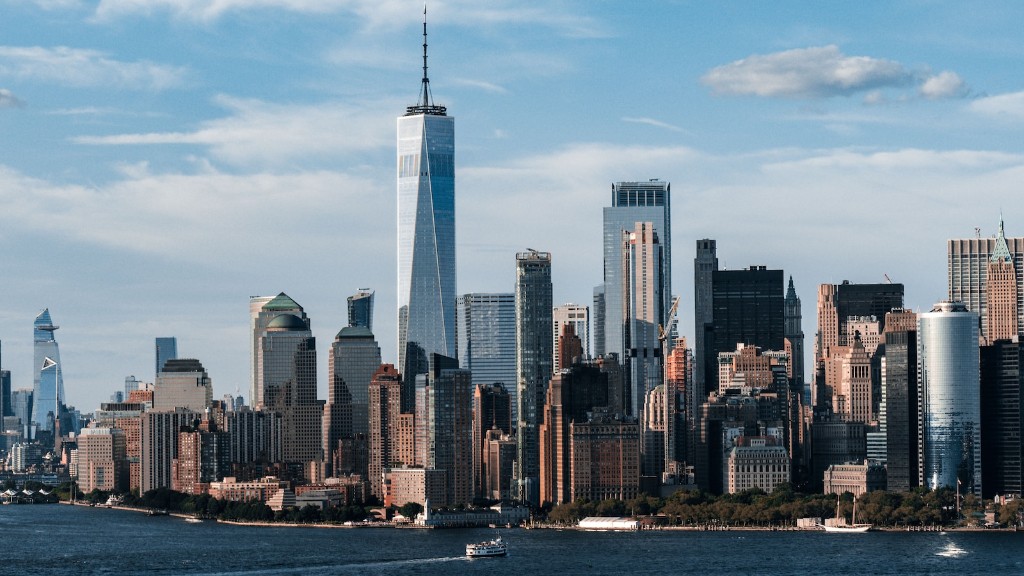
Exploring the people and cultures of New Zealand is a rewarding experience. Locals tend to be friendly and open to conversation, so grabbing a coffee or a beer and talking with the locals is a great way to get a better appreciation for the country. Small towns, such as Polynesian Taumarunui, are wonderful places to get to know the authentic New Zealand culture.
Advance Planning and Booking
In order to make the most of your time while exploring New Zealand, it is important to plan in advance and book activities. An itinerary is essential for getting the most out of your experience in New Zealand. Many awe-inspiring sites, like the majestic Tasman Glacier, require advance bookings to enjoy. For memorable experiences, planning ahead is essential.
Geological Wonders
From canyon-like ravines and snow-capped mountains to active volcanoes and boiling mud pools, geological wonders abound in New Zealand. To make the most out of your geological visits, it is essential to plan in advance. Making a list of desired sites, such as the Cathedral Rocks or Waiotapu Thermal Valley, and researching how to access them is crucial. Additionally, figuring out how much time one has to spend at the site will ensure an enjoyable, stress-free visit.
Accommodation and Travel Conveniences
Its important to book early when choosing accommodation and transportation in New Zealand. Plane, train, and ferry tickets should be booked about eight weeks in advance. Hotels, Airbnbs, and camper vans can also book up quickly, so its essential to make arrangements as soon as possible. Car rentals are another option; however, car rental in New Zealand can be expensive, and many come with certain insurance or toll fees. Researching thoroughly before booking is key.
Maximizing Your New Zealand Travel Experience

With its stunning landscapes, vibrant culture and native charm, New Zealand is the ideal place for an adventure. Its important for travelers heading to New Zealand to come prepared with essential items and an open mind. Planning ahead and doing plenty of research will ensure a memorable New Zealand experience.

Valarie Bristol
Valarie B. Bristol is a passionate writer and researcher from New Zealand. She is committed to sharing her knowledge and love of New Zealand with the world. In her free time, Valarie enjoys exploring the countryside and taking pictures of the beautiful landscapes that make up the country. She also loves spending time with her family and friends, cooking, and reading.
Leave a Comment Cancel reply
10 of the best things to do in New Zealand
Oct 4, 2023 • 8 min read
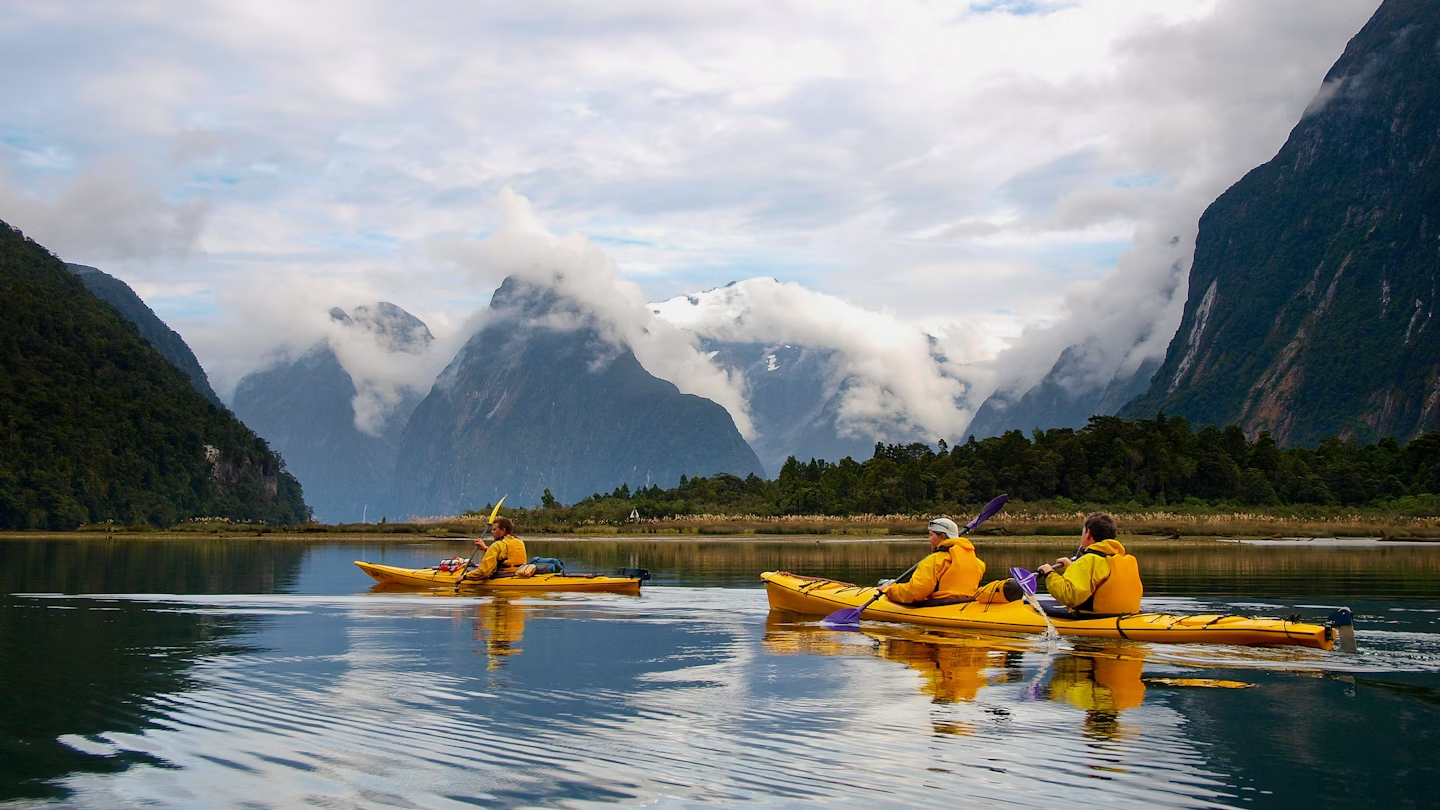
These are New Zealand's unmissable activities © Nicram Sabod / Shutterstock
Spectacular and diverse, New Zealand (also known as Aotearoa) is one of the world's most memorable destinations.
From its inspirational Indigenous Māori cultural experiences to its epic and otherworldly national parks , it can be hard to narrow down what to do. You can spend your days soaking in the urban energy of Auckland and Wellington, challenging yourself on outdoor adventures around Queenstown, cycling through Central Otago’s historic towns and big-sky landscapes or trying to spot the country’s iconic kiwi bird on Stewart Island/Rakiura.
Craft your own southern hemisphere adventure from this list of the best things to do in New Zealand.

1. Experience vibrant Māori culture
There are countless ways to engage with New Zealand’s Indigenous Māori culture while exploring the country. You can expect to hear greetings in te reo Māori (the Māori language) frequently, but for a deeper dive, the Auckland Museum and Waikato Museum both have displays of centuries-old Māori taonga (treasures). Around Rotorua , families from the local Te Arawa iwi (tribe) entertain and energize visitors with cultural performances and experiences, including the opportunity to take part in a haka (a ceremonial war dance made famous by the country’s All Blacks rugby team) or experience a hāngī (a Māori feast cooked in the ground).
Detour: From Rotorua, travel 61km (38 miles) southeast to the isolated logging town of Murupara. Stays at the family-owned Kohutapu Lodge include excursions to catch tuna (endemic longfin eels), visits to historic Māori rock art sites and hiking through the Whirinaki Te Pua-a-Tāne Conservation Park, a spiritually significant site said to be one of the world’s last prehistoric forests.
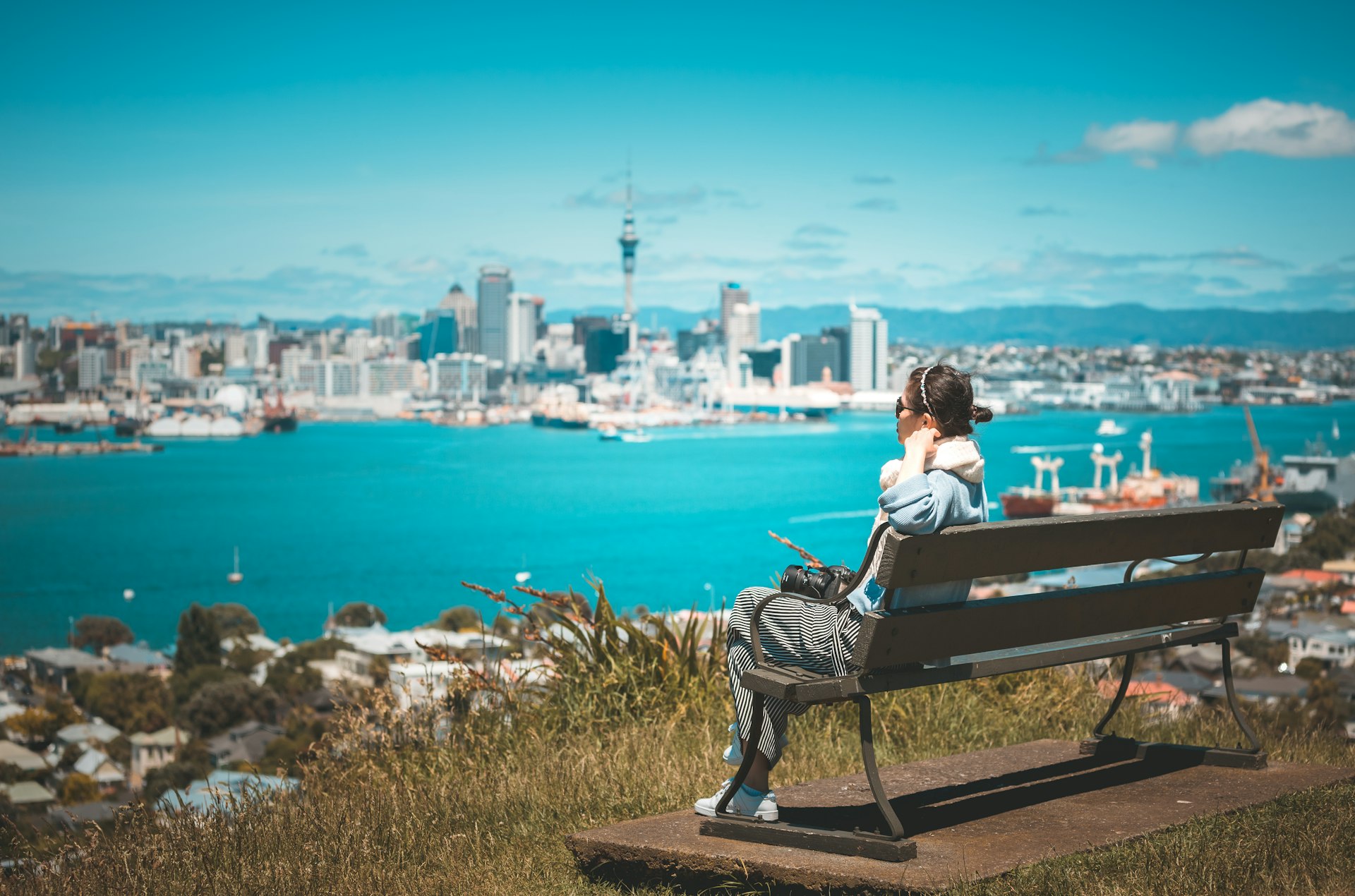
2. Be immersed in Auckland’s diversity
Framed by two harbors and built on the sprawling remnants of more than 50 long-inactive volcanoes, Auckland is New Zealand's most diverse and cosmopolitan city. Visit the weekly Otara and Avondale markets to taste Pacific and Asian cuisine from communities drawn to Tāmaki Makaurau (the Māori name for Auckland). Or time your visit to experience popular cultural events including Pasifika , Diwali and the Lantern Festival. Good beaches, nearby wine regions, and a dynamic dining scene are other reasons why Auckland is consistently rated one of the world's most liveable cities.
Planning tip: Join Auckland’s most passionate fans while taking in a match featuring the New Zealand Warriors (a rugby league team) or the Auckland Blues (a rugby union team).

3. Hike one of New Zealand’s Great Walks
Hiking (known as “tramping”) is one of New Zealand’s most popular pastimes, with well-established wilderness tracks, shelters (called “huts”) and campsites throughout the country. Highlights include the meandering forest trails of the Rakiura Track on compact Stewart Island/Rakiura and the beach-fringed Abel Tasman Coast Track in the Nelson/Tasman region. Anchoring the rugged geothermal heart of the North Island, Tongariro National Park's most popular trail is the Tongariro Alpine Crossing , a single-day wilderness experience skirting two volcanoes and taking in views of craters, iridescent lakes and the sprawling Central Plateau.
Planning tip: All of New Zealand's 10 (soon to be 11) Great Walks are very popular, and New Zealand's Department of Conservation (DOC) caps visitor numbers at a safe and sustainable level. To secure your spot, you’ll need to book in advance when the Great Walks booking system opens , usually from around May. The Great Walks season runs from late October to April, and the most popular experiences like the Milford and Routeburn Tracks often sell out in minutes. If you miss out; don’t worry. There are hundreds of other trails throughout the country to explore.
4. Negotiate a two-wheeled adventure in Central Otago
New Zealand's first – and arguably best – multi-day cycling experience is the Otago Central Rail Trail . An undulating ride through sunbaked southern landscapes and the heritage streetscapes of former gold-mining towns, it takes four to six days to complete. Along the way, you can feast on locally grown summer stonefruit, visit contemporary vineyards known for world-class pinot noir, and toast the end of each day with a well-earned beer at historic pubs. E-bikes are a convenient option to maximize your enjoyment of this classic South Island experience, with operators throughout the region offering rentals and guided tours.
Detour: Linking the towns of Cromwell and Clyde, the 55km (34-mile) Lake Dunstan Cycle Trail traverses the spectacular Cromwell Gorge via an 85m-long (279ft) suspension bridge and a spectacular cantilevered wooden biking track.

5. Seek out kiwis on Stewart Island/Rakiura
At the southern tip of the South Island, Stewart Island/Rakiura is New Zealand's third-largest island, home to a rugged community of around 400 hardy souls, where 85% of the land is protected by Rakiura National Park . Birdlife around Stewart Island/Raikura and the adjacent islet of Ulva Island includes rare hoiho (yellow-eyed penguins), raucous kākā (a type of parrot) and mellifluous bellbirds. However, the undoubted avian highlight is viewing tokoeka (Southern brown kiwi) in the wild. Join a twilight expedition with local operators including Beaks & Feathers and Ruggedy Range Wilderness Experiences to see Aotearoa's beloved national bird snuffling about on beaches and in the forest. Visit from March to September to also potentially glimpse the aurora australis (southern lights), the inspiration for Stewart Island's Māori name: Rakiura, which means “glowing skies.”
Planning tip: Ferries take one hour to cross the Foveaux Strait from Bluff on the mainland to Stewart Island/Rakiura. The crossing can sometimes be rough, so an alternative is a 20-minute flight from Invercargill.
6. Commune with marine mammals around Kaikōura
Attracted by the nutrient-rich waters of the Kaikōura Canyon – a submarine valley just 800m (2624ft) off the east coast of New Zealand’s South Island – the coastal town of Kaikōura is visited by various whale species throughout the year. Join a boat trip with Whale Watch Kaikōura , owned and operated by the local Ngāti Kuri iwi (Māori tribe), to see visiting humpback, orca, southern right and pilot whales. Resident marine mammals include sperm whales, dolphins and kekeno (New Zealand fur seals). The pelagic birdwatching here is also some of the best on the planet.
Planning tip: Kaikōura translates from te reo Māori as "eat crayfish". The spiny crustacean is a popular item on pub menus and roadside food caravans around the region. Try one at Nin’s Bin or Kaikōura Seafood BBQ .

7. Have a capital time in Wellington
Compact and walkable, New Zealand’s harbor capital of Wellington is the ideal urban destination to balance and complement adventures in Aotearoa’s great outdoors. Explore the city’s pioneering craft beer heritage at local breweries including Garage Project, Heyday and Parrotdog, before learning about the movie-making magic of The Hobbit and Lord of the Rings franchises at Wētā Workshop . The nation’s capital also boasts a vibrant arts and live music scene, with free events hosted throughout the year.
Planning tip: Visit (and book accommodation well ahead) for the Beervana craft beer festival in August. Also popular is Wellington on a Plate (WOAP), an annual celebration of the city’s dynamic culinary scene.
8. Explore architectural history in Hawke’s Bay
Rocked by an earthquake in 1931, the Hawke’s Bay cities of Napier and Hastings were rebuilt in the popular architectural styles of the day, and now the region boasts some of the world’s best-preserved art deco and Spanish Mission architectural precincts. From Napier’s Norfolk pine-trimmed Marine Parade, join a walking tour of the city’s cavalcade of art deco buildings, some also decorated with the cross-cultural influence of traditional Māori design motifs.
Detour: New Zealand winemaking began in Hawke’s Bay in the 1850s, and the region’s well-established vineyards and excellent winery restaurants are best explored on two wheels. See On Yer Bike online for details of bike hire and recommended wine trails.
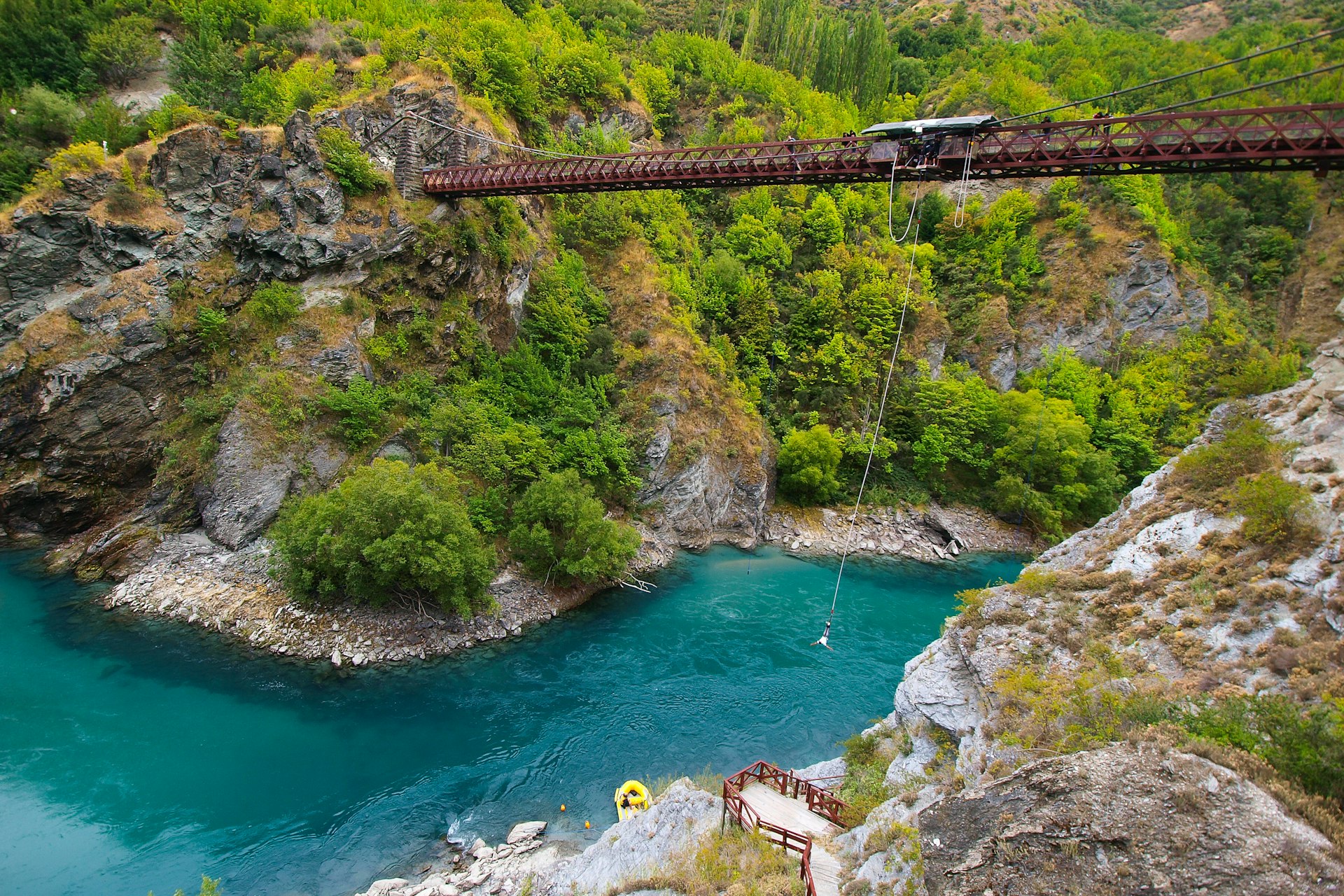
9. Get active around Queenstown
Nowhere else in New Zealand reinforces the country’s reputation for adrenaline-fuelled adventure activities like Queenstown . Amid beautiful lake and sub-alpine scenery, definitely sign up for a bungy jump . (It’s almost mandatory – the breathtaking leap of faith was invented in New Zealand, after all.) You can also consider other thrill rides like Oxbow Adventures ’ exciting combo of jet sprint boats (which can reach up to 100km/h, or 62mph, in just 2.5 seconds) and extreme 4WD offroading. After all the action, adjourn to Altitude Brewing ’s lakeside location for great beers and tasty visits from local food trucks.
Detour: Reached via a scenic road over the Crown Range, Wānaka is Queenstown’s less manic Southern Lakes sibling. Catch a boat on Lake Wānaka to explore the island bird sanctuary of Mou Waho .
10. Kayak in pristine Fiordland
Cruising through Milford Sound /Piopiotahi on a day trip is popular, but a better strategy for experiencing the scale, spectacle and stillness of Fiordland ’s most famous sheltered anchorage is to explore it by kayak. Hook up with Roscoe’s Milford Kayaks for the ultimate on-the-water views of the fiord’s cascading quicksilver waterfalls and massive forest-covered cliffs. Sunriser classic tours loop for 10km (6 miles) around Milford Sound and depart well before the inevitable arrival of daytrippers visiting from Te Anau or Queenstown.
Detour: Fiordland’s Doubtful Sound/Patea (meaning "place of silence" in te reo Māori ) is even quieter and less visited than Milford Sound/Piopiotahi. Join a guided kayak tour with Te Anau-based Doubtful Sound Kayak or stay overnight on the MV Fiordland Jewel with Fiordland Discovery .
This article was first published Apr 22, 2021 and updated Oct 4, 2023.
Explore related stories
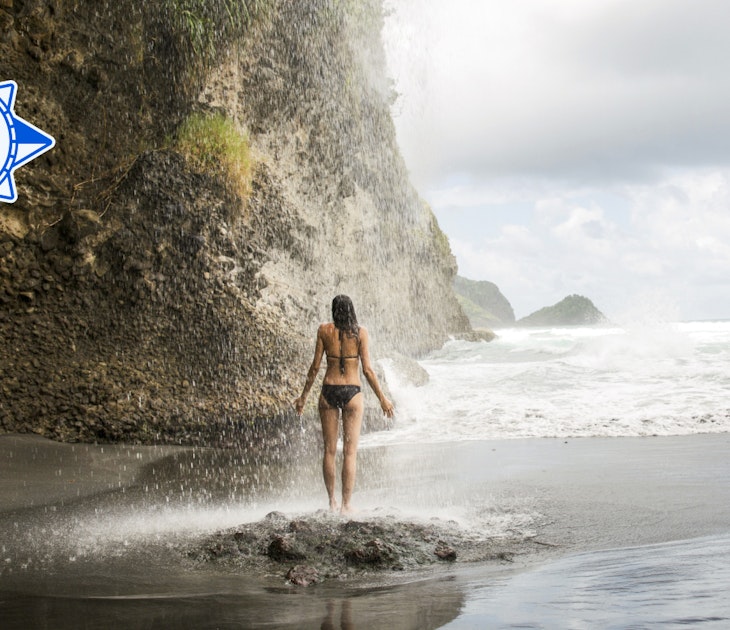
Wildlife & Nature
Feb 27, 2024 • 6 min read
April is the ideal time of year for mild-weather hikes, cherry blossom festivals, fresh produce and more.
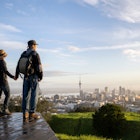
Oct 8, 2023 • 8 min read

Jul 14, 2023 • 4 min read
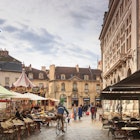
Jul 3, 2023 • 8 min read
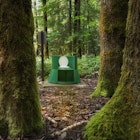
Apr 6, 2020 • 6 min read
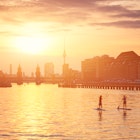
Oct 4, 2019 • 6 min read
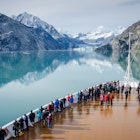
Jan 2, 2019 • 7 min read
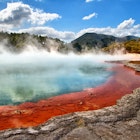
Oct 26, 2018 • 4 min read

Dec 21, 2016 • 5 min read

Apr 7, 2016 • 5 min read

I Just Spent 10 Days in New Zealand, and These Are the 17 Items I Couldn’t Have Traveled Without
From the perfect hiking backpack to comfy trail shoes, these are my must-haves.
The North Island of New Zealand, which is on the Māori lands of Aotearoa, is a wonderfully diverse place. As a travel writer, I’m in awe of its many offerings: On one hand, you can get your fill of city life with amazing restaurants and shopping in Auckland but on the other, there are also quieter landscapes like Waiheke Island and Rotorua for relaxing or mountain biking among gorgeous scenery.
Before my recent assignment there, this half-relaxing, half-energizing spirit inspired me to plan what my friend Wendy calls an “Adrena-Zen” trip. It's when you spend part of the day doing an activity that will get the adrenaline up like ziplining or bungee jumping and then another part of the day taking it all back down by soaking in a hot tub or geothermal pool. Fortunately in New Zealand, there's no shortage of opportunities to do it all.
Packing for a trip that includes time in the big city as well as the picturesque countryside like this takes a good amount of planning. I knew I would need a great suitcase , hiking shoes , a phone with enough battery life to document all of my adventures, and a packable puffer for when the sun goes down, but I'm glad my years of travel writing afforded me the experiential wherewithal to pack some other less obvious essentials. Without further ado, here's everything I vetted and would recommend packing for your “Adrena-Zen” trip to the North Island.
Travel Pants
These ABC joggers by Lululemon are my go-to, and I pretty much take them on every trip because they are so versatile. They look smart enough to be paired with a dark blazer for dinner at Ahi in Auckland or for an evening outside at the Redwoods Treewalk in Rotorua. They were even comfortable enough for my 18-hour direct flight from JFK to Auckland on Air New Zealand .
Insider tip: Air New Zealand will be launching Skynest for economy passengers, flat sleeping pods that you can reserve in increments of 4 hours, in September 2024 — but regardless, you’re still going to want some comfy pants to get you through that long journey.
To buy: lululemon.com , $128
Cycling Shorts
During the trip, I went into the Whakarewarewa forest with Mountain Bike Rotorua — and it was a thrilling time. It’s here I learned that if you're going mountain biking, whether you're riding a traditional full-suspension bike or an e-bike, you're going to want shorts with some padding. These Essence cycling shorts by Craft are exactly what I needed. (For women, here’s a similar best-selling padded pair from Amazon.) They just make the riding experience more comfortable and help you last longer out on the trails. We got into some bumpy terrain, and I was grateful for shorts with added cushioning. They're also moisture-wicking for folks like myself that need it when approaching those big hills and sweating about my choices in life. P.S. I survived and am actually glad I got out of my comfort zone.
To buy: amazon.com , $68 (originally $80
Packable Puffer
A lightweight, packable puffer jacket is always a good idea. As soon as the sun sets on the North Island, it'll be a lifesaver when you're out and about. I love this Pinion down sweater from Stio, and they have a women’s version , too. It's called a sweater because you can layer it underneath a shell jacket, but this is a good year-round zip-up insulated jacket. I wore mine while watching the Slopestyle mountain biking competition at Crankworx which lasted long after the sun went down, so I was grateful to have this with me. If you're looking for a more budget-friendly option that still offers warmth and durability, check out this lightweight Eddie Bauer packable puffer for a fraction of the price.
To buy: amazon.com , $50 (originally $99)
Comfy Sneakers
Need a pair of sneakers that will take you from ziplining to a wine tasting? I know just the shoes. The new Eliot runner by New England-based running brand Tracksmith has an elegant retro vibe. For my New Zealand trip, I found this style perfect for ziplining with award-winning Rotorua Canopy Tours and a leisurely lunch and wine tasting at Batch Winery on Waiheke Island. Not convinced? The brand is so popular these days that actress Cynthia Erivo wore their gear while running the London Marathon, and Tracksmith will be presenting at the biannual fashion tradeshow Pitti Uomo in Florence this summer — as the first running brand to do so. If you like the style but not the price tag, budget-minded travelers can opt for these similarly sleek Adidas Run Swift shoes at Amazon.
To buy: amazon.com , $65 for Adidas (originally $95)
Swim Trunks
Some of my favorite spots for relaxing in Taupō and Rotorua were the geothermal pools at Wairakei Terraces , the cedar hot tubs at the Secret Spot at the edge of Whakarewarewa Forest and overlooking Puarenga Stream, and the world-renown mineral pools at the Polynesian Spa , where legend has it that in 1878 the Priest Spring cured a priest from his arthritis after resting in its healing waters.
For all of these water activities, a nice pair of swim trunks was essential. I recommend these Charles swim trunks from Onia. Or, for a more cost-conscious option, these are a good alternative from Trunks Surf & Swim Co. at Amazon. Both options look tailored enough to grab a casual lunch in between visits to the spa. Trust me, their 28 pools and cold plunge were enough to make me want to move there and get an annual pass. And while I don't have arthritis, I did notice that the minerals in the water helped relieve some eczema on my hands and soothed my muscles from a morning of Zorbing .
To buy: amazon.com , $30
When you're outside, even in cloudy weather, it's important to wear sunscreen. My friend Irene introduced me to EltaMD 's UV Clear Broad-Spectrum SPF 46, a dermatologist-approved sunscreen that I soon learned has a massive following. With a 4.7-star rating at Amazon and more than 36,000 reviews, plus celebrity fans such as Zac Efron and Ashley Graham to boot, this no.1 best-seller is a no-brainer. It also comes in portable sizes that are perfect for traveling.
To buy: amazon.com , $39
I've been a fan of Naot for years, and I prefer their Santa Barbara sandals over the leading competitor. I love them so much, I've taken them with me on five continents and now have them in three colors. Once they break in, they are the most comfortable things you can slip on your feet, especially after a long day on the Great Lake Trails or thrill-seeking at the adrenaline-packed adventure park Velocity Valley .
To buy: zappos.com , $140
Rain Jacket
No one wants it to rain while on vacation — and that goes double time if you're hiking on Rangitoto Island or taking a walk around Lake Taupō , which was formed by the Taupō Volcano. But just like anywhere, the weather in New Zealand can be unpredictable, so it's good to pack a rain jacket for those just-in-case moments when showers unexpectedly pop up on your Apple Watch . This Active Ocean Bound jacket from Helly Hansen is weatherproof for all of your wilderness adventures. It's made with Ocean Bound recycled materials which helps to keep plastic out of our oceans. It also has a clean design — and that means you can wear it even to a nice dinner at Mekong Buffalo in Rotorua. (My group enjoyed this spot so much that we went there two nights in a row.)
To buy: hellyhansen.com and amazon.com , from $132 (originally $180)
Hiking Backpack
From mountain biking in Rotorua to a sailing excursion to see the Māori Rock Carvings with Taupō Sailing Adventures , the Arc'teryx Aerios 15 pack was a trusty sidekick. It has a 15-liter capacity, is made from lightweight Cordura nylon for ultimate durability, and it features a suspended mesh back to keep your back from overheating like mine does. It's perfect to hold a day's worth of gear and at 1 pound, 4 ounces, it's adding minimal weight to whatever you need to carry.
To buy: rei.com , $130
Hiking Shoes
It can be a challenge to find a good hiking shoe that also looks appropriate for a wine and tapas dinner at the likes of Poco . But Danner ’s Trail 2650 Hiking Shoes manage to pull it off with ease. You can wear them as you step up your pace on the Tongariro River Trail . Paired with dark denim Levi's , the 2650 trail hiker makes for a sharp look that feels pulled together, but not like you're trying too hard.
To buy: backcountry.com , $170
Hiking Pants
For the varied terrain on the North Island, it's helpful to pack durable and water-repellent hiking pants. Patagonia's Point Peak trail pants are great for all-day or multiday excursions; they’re even rough and tough enough for a hike on the Tongariro Alpine Crossing . The Point Peak is designed for mobility. I also love that the body is made from 90 percent recycled nylon and that it's Fair Trade Certified, so you know the people who put it together are earning good wages for their work.
To buy: patagonia.com , $139
Check-in Suitcase
I've tested out a lot of different suitcases over the years, and for me the gold standard is Rimowa. Fun fact: they were the first in the world to make a polycarbonate suitcase. For longer trips such as this one to New Zealand, I use the Essential Check-In . Personally, I love that it's super lightweight and yet very durable. If you have luggage from other brands you'll notice how the Rimowa just glides across the airport floor in Auckland. You'll also get excellent customer service from them should anything happen to your suitcase. Not everyone can invest in a Rimowa, so if you're on a tighter budget, this one from Samsonite provides you with a more affordable option but still offers spinner wheels.
To buy: amazon.com , $196 (originally $270)
Mesh Packing Cubes
Any seasoned traveler will tell you that packing cubes are a great way not only to organize your suitcase but also to help you gain back precious space. This set of Pack-It Reveal packing cubes from Eagle Creek is great; they hold way more than you'd expect and if you use the rolling method since you can squeeze in a lot more. This especially comes in handy when you're flying back with extra gifts and crafts from places like the Māori art gallery Te Puia because there were too many treasures you couldn't leave behind, but now you need to make room to fit them all in. If you're like me, you might want to get two sets just to be safe.
To buy: amazon.com , $36 (originally $44)
Apple AirTags
I use the four-pack of Apple AirTags to keep track of my suitcase, backpack, Filson carry-on bag, and my keys. I love that the Bluetooth-enabled tracking discs work seamlessly with the Find My app on my iPhone. It's comforting to know exactly where your bags are, whether they're just arriving on the luggage carousel or sitting safely in the room at the well-appointed Hotel Britomart in Auckland.
To buy: amazon.com , $90 (originally $99)
iPhone 14 Plus
I had to get a new phone before my trip because I was still using my old iPhone 8 Plus … gasp, I know. I was still trapped in the world of the home button. It was more than time for an upgrade and I wanted to capture the beautiful sights of Aotearoa with a better camera and that sweet OLED technology. So I went for the iPhone 14 Plus in the new yellow color, a bold choice that I love as a pop of color. On this model, my photos and videos are much clearer and sharper. It also features a ceramic shield front cover that is stronger than any other smartphone glass. The 14 Plus also has the longest battery life of any iPhone ever.
In New Zealand, I even dropped my phone briefly, fully submerged, in one of the thermal springs at the Polynesia Spa in Rotorua — did I mention that I love that place? — and I freaked out, but my friend Iona calmed me down. After a little nap in some rice, my iPhone was totally fine. As with all of Apple's products, the iPhone integrates flawlessly with Apple’s entire suite of products, from the noise-canceling AirPods Pro to the Apple Watch .
To buy: apple.com , from $899
Laptop Case
When you're on a trip filled with adventure, you're going to want to make sure your valuable electronics are protected. For my MacBook Air , I used this Phoozy laptop case. It's great because the insulated case uses NASA spacesuit technology which protects from the cold and the heat, plus it offers military-grade shock protection up to four feet, even in inclement weather such as rain, snow, and sleet. I didn't have to deal with much of that on my trip. The closest experience I had was riding the Hukafalls Jet boat, but I decided to leave the laptop in the car.
To buy: amazon.com , $75
Wall Charger and Cable
Right before this trip, a friend gave me some good advice: “You're going to want to update your power chargers.” I never really thought to upgrade them, but moving from activity to activity on the North Island offers limited time to charge your devices. This Otterbox Premium Pro Fast Charge wall charger and USB-C to Lightning cable turned out to be the unsung heroes of the trip. New Zealand is on a different voltage, so I had to pair these two with a converter , but they still helped return all of my electronics to full power fast. It's pretty amazing how much the technology has advanced. Go for the triple port wall charger that has two USB-C and one USB port.
To buy: otterbox.com , $70 wall charger and $35 for Lightning to USB-C Cable
Love a great deal? Sign up for our T+L Recommends newsletter and we’ll send you our favorite travel products each week.
For more Travel & Leisure news, make sure to sign up for our newsletter!
Read the original article on Travel & Leisure .
We independently evaluate all recommended products and services—learn more about our process .If you click on links we provide, we may receive compensation.


TRAVEL to NEW ZEALAND – Tips and Information Guide
New Zealand
Everything you need to know about travel to New Zealand in our comprehensive 2024 New Zealand travel guide.
New Zealand is truly the land of the Long White Cloud with a vast contrast between the epic coastlines of the Otago Peninsula to the summit of Aoraki Mount Cook.
Most people divide their travel in New Zealand between the North Island and South Island. South Island tends to be more popular with outdoor enthusiasts.
But regardless of which island you see, or whether you tour both, you won’t be let down.
Fancy a thermal river? Then head to the North Island’s Rotorua or if you prefer snowy mountains, Queenstown is the place to go!
If none of this fancies you then why not head to the Bay of Islands only a short drive from Auckland to take in some sunshine and fresh oysters? Follow this up with a trip you’ll not soon forget to the top of New Zealand, Cape Reinga.
New Zealand is probably the most surprising country you can visit as it is jam-packed full of adventure, landscapes and friendly locals. Do yourself a favour and get there ASAP!
Once you start planning to travel to New Zealand, you’re in for a great adventure!
Here’s our New Zealand travel guide to get you caught up on the basics of this amazing country.
TRAVELLING IN NEW ZEALAND: AT A GLANCE
Here are the basics about travel to New Zealand.
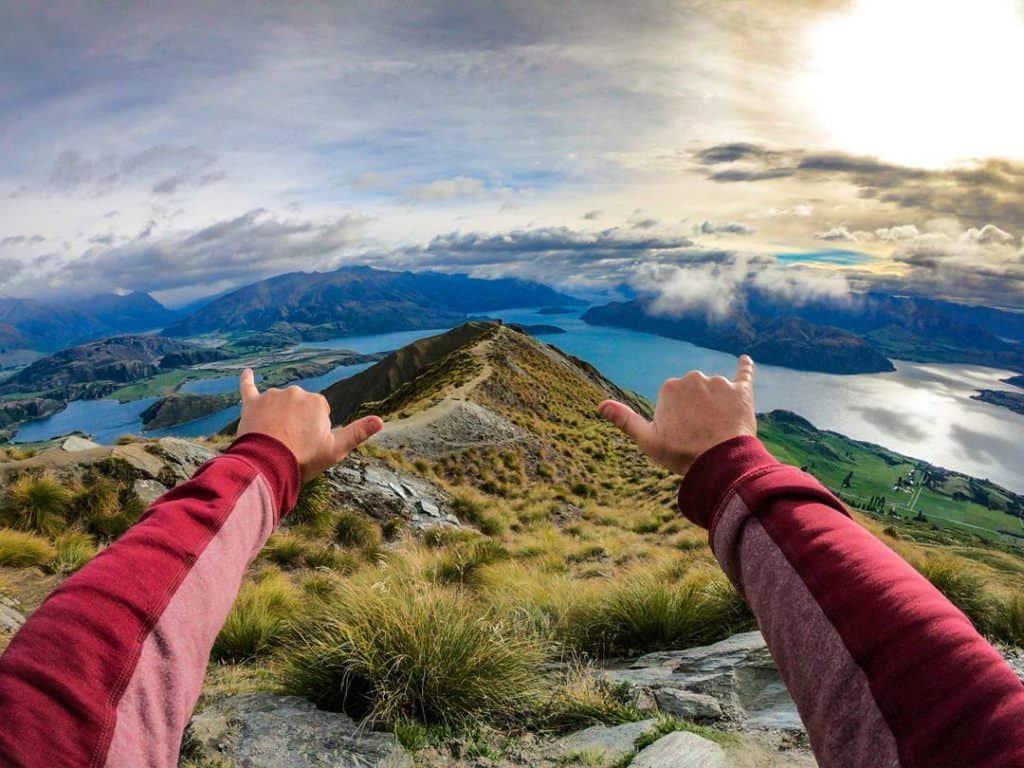
TOP 5 TRAVEL EXPERIENCES IN NEW ZEALAND
With so much to see and do in New Zealand, it really is hard to pick the top experiences.
However, we think that to truly appreciate New Zealand you need to plan to do these 5 activities during your visit.
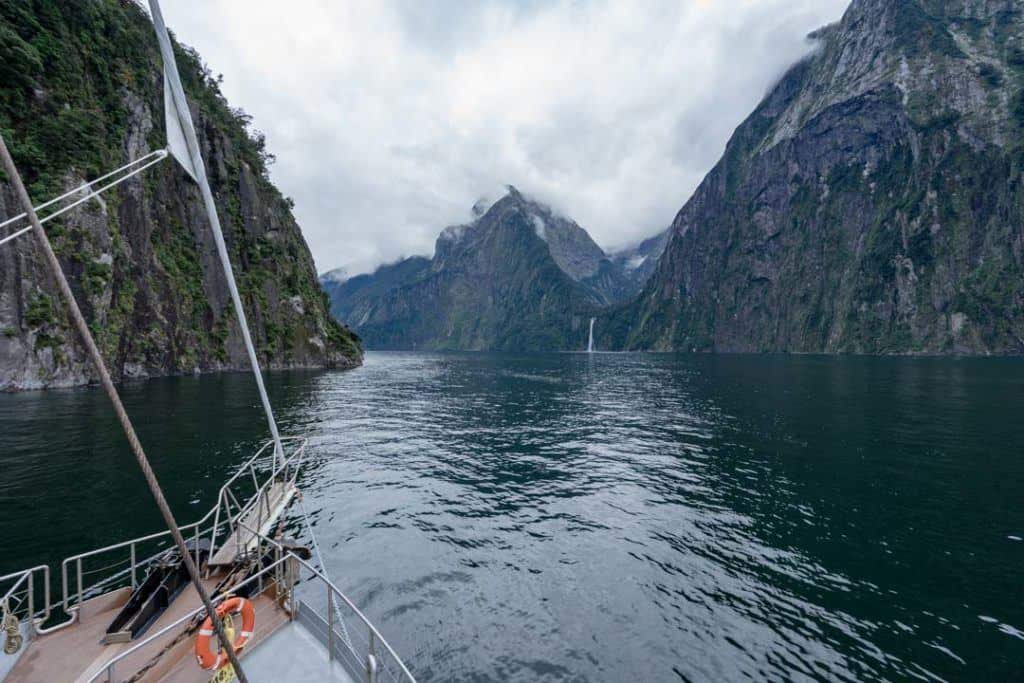
Cruising the Milford Sound
Cruising on a boat in the stunning Milford Sound is an absolute MUST! Kayak, cruise and cuisine your way through some of the most spectacular scenery in New Zealand!
Book a Milford Sound cruise and lunch today !
Walking Hooker Valley
The Hooker Valley walk at Aoraki National Park is basically like walking in a piece of paradise. To your left will be snowcapped peaks and to your left will be snowcapped peaks. At the end of the trail lays Hooker Valley Lake full of icebergs and epic views of Mount Cook.
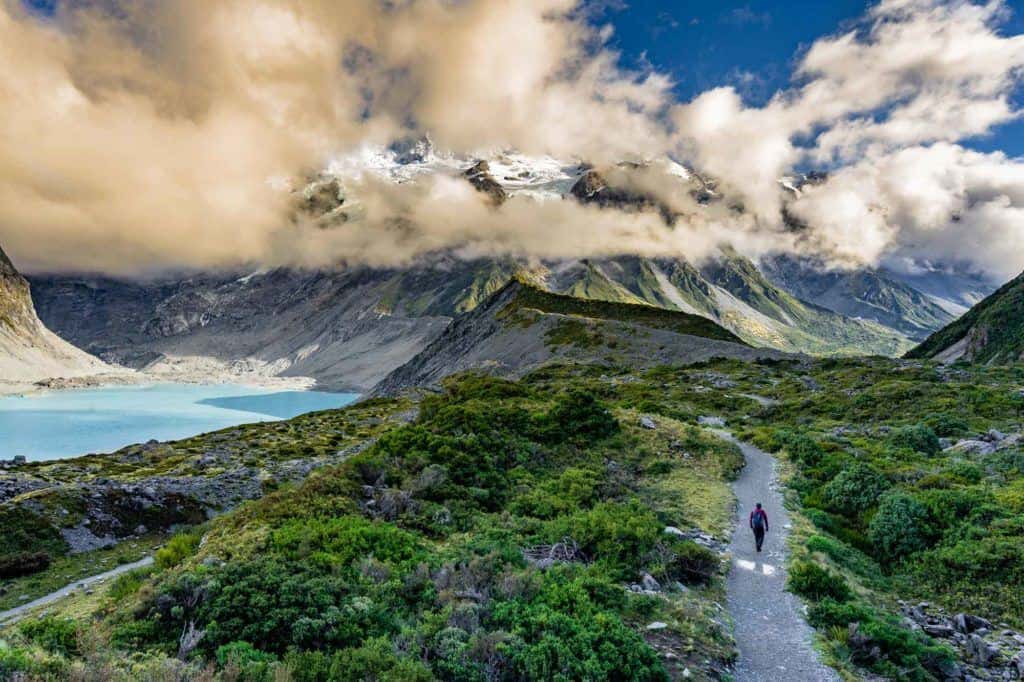
Stargazing at Lake Tekapo
Stargazing at Lake Tekapo is remarkable due to limited light pollution. Opt for a summer’s night out to enjoy the Southern Hemispheres spectacular stars!
Book a trip to Lake Tekapo here !
Snowboarding or Skiing the Remarkables
Snowboarding or skiing The Remarkables high above Queenstown is every snow enthusiasts dream! So get prepared to shred and smash some freshly fallen powder!
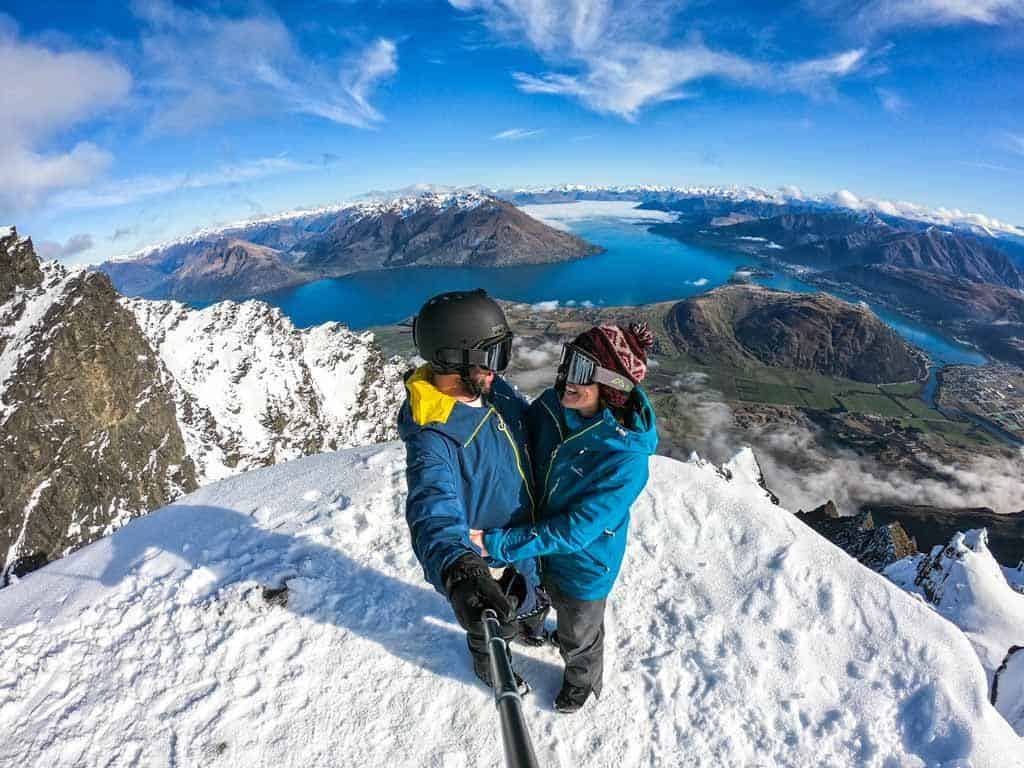
Wildlife Watching on the Otago Peninsula
Wildlife watching on the Otago Peninsula can be done at any time of the year where penguins, seals and albatrosses can be seen in their natural environment.
Other Things to do in New Zealand
There are plenty of great things to do in New Zealand. Most of them will keep you outside exploring the beautiful landscapes found throughout the country!
Splurge on a heli-skiing trip in Wanaka . See the mountainside like few people do as you shred your way through freshly fallen snow!
Go for a hike on any of the spectacular trails found throughout the country. Some favourites can be found in our guide to hiking New Zealand.
Visit Hobbiton and tour the set of Lord of the Rings . If you’re not a fan of the movies you will be once you check out where they were filmed !
Paddle a canoe on a multiday trip down the Whanganui River. Spend 3-5 days on a unique journey you are not bound to forget.
Kayak Doubtful Sound . You won’t get a more authentic and raw natural experience in New Zealand than getting out on the Doubtful Sound for a good paddle.
Take a zip-line canopy tour through Rotorua . Visit the thick forest from above and learn about its importance while getting the adrenaline moving !
Kayak Abel Tasman . Ok, so paddling Abel Tasman is pretty magical too. Be sure to add this to your list of things to do in New Zealand!
Kitesurf in Taranaki . The wind is epic and harnessing it in a kitesurfing sail is going to lead to one of the most adrenaline-pumping activities in New Zealand!
Go whitewater rafting down the Kaituna River . Paddle through 14 rapids , including a handful of epic class 5 rapids and the world’s highest rafted waterfall.
Bungee jump in Auckland or Queensland . Go weightless (momentarily) where bungee jumping first began with the most spectacular backdrop!
BEST PLACES TO VISIT IN NEW ZEALAND
There are plenty of amazing places to visit in New Zealand. Depending on your interests, trip duration and time of year you will find plenty of things to do during any length of stay.
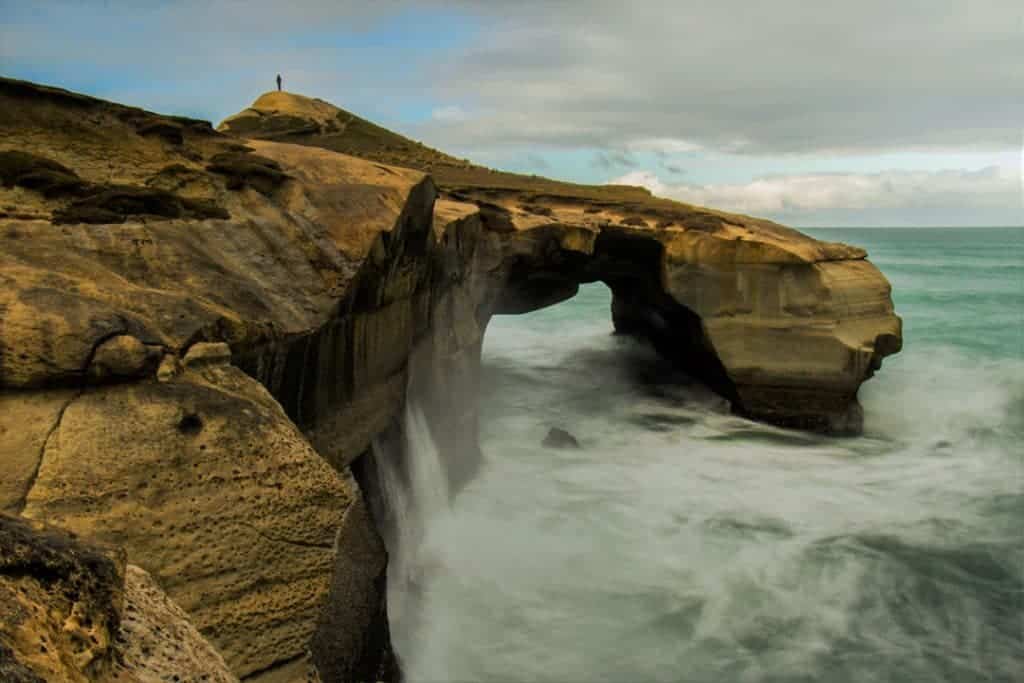
Rich in Maori history and culture, Auckland is the most populous city in New Zealand. Here you’ll find plenty of incredible things to do !
Known for its beautiful landscapes and wild outdoor activities (can you say bungee jumping?!) Queenstown will have your heart as soon as you arrive!
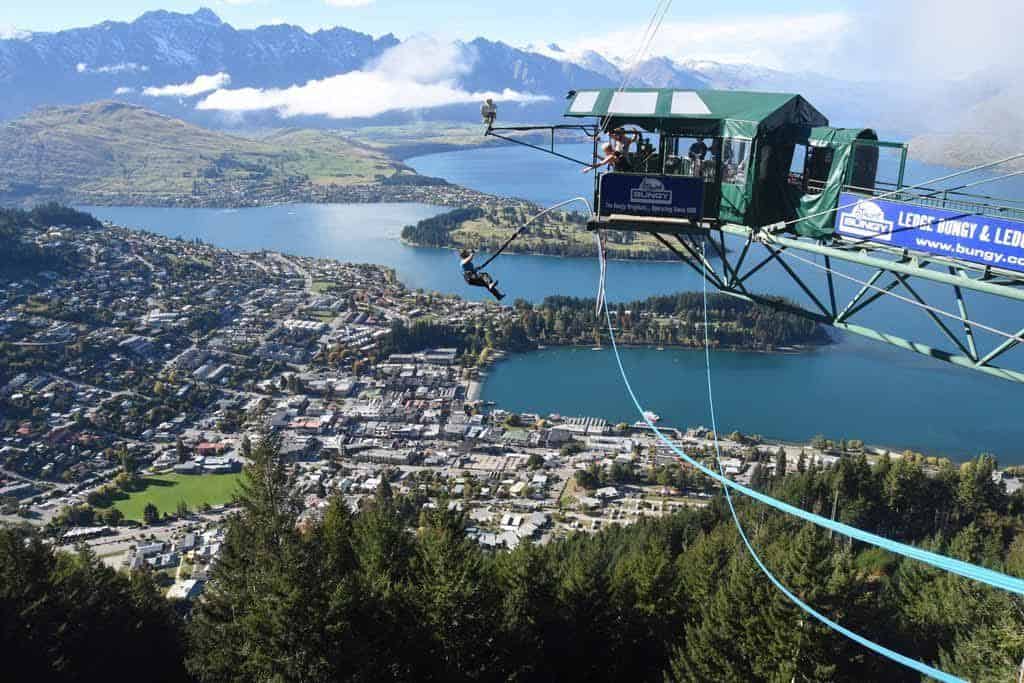
Aoraki National Park
Aoraki National Park is a place of dreams complete with New Zealand’s highest peak, Mount Cook soaring to over 3,700 metres.
Tongariro Crossing
Tongariro Crossing is one of the most popular day treks in the North Island where you see scenes from the famous Mordor and Mount Doom from the Lord of the Rings.
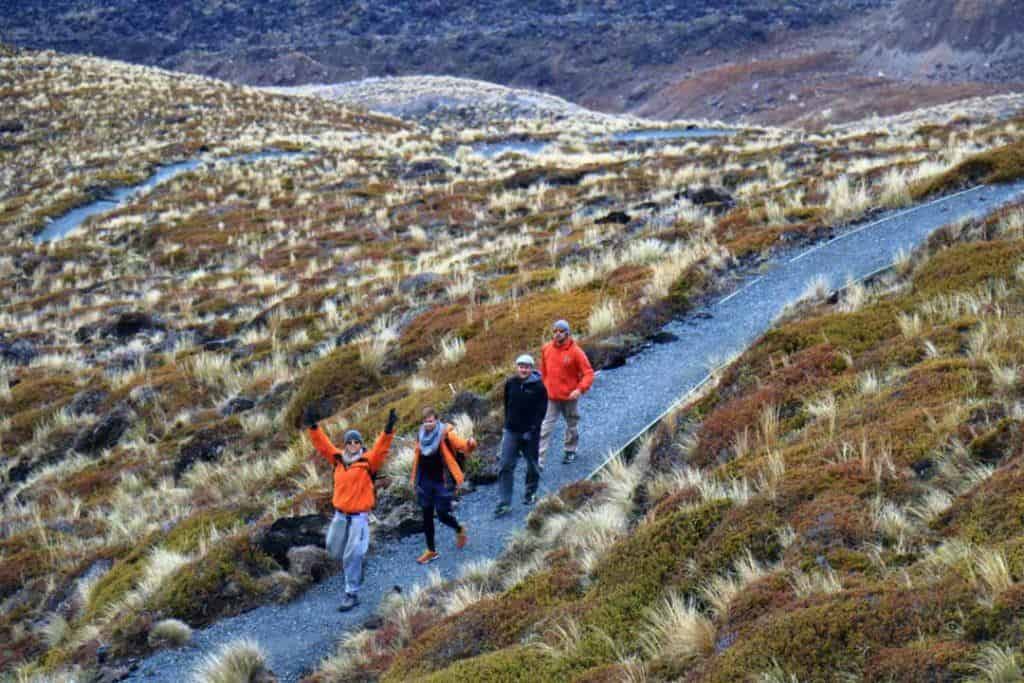
Mount Aspiring National Park
Mount Aspiring National Park is honestly the most beautiful place to sit back and just stare at mountains for hours on end. Options here include a hike to Rob Roy Glacier or further onto French’s Ridge hut for those adventurous souls.
For more information on specific things to do in the top places to visit in New Zealand, reference our following city travel guides:
BE SURE TO CHECK OUT THESE OTHER AWESOME PLACES TO VISIT IN NEW ZEALAND .
BEST NEW ZEALAND TRAVEL ITINERARY
Depending on whether you are starting from scratch or have a general idea of what kind of things you would like to see and do when travelling in New Zealand, we’ve put together a few itineraries that are sure to leave you wanting for nothing at the end of your visit.
There are so many amazing things to do in New Zealand that planning an itinerary for your travel can be a little overwhelming.
In this section, we’ll not only help you plan a 1-, 2-, or 3-week New Zealand itinerary but also give you an overview of many of the places you might want to consider visiting and things you may want to do.
Of course, no one-size-fits-all plan will suffice. But if we were to head back to New Zealand these are the top places and things that we would want to do!
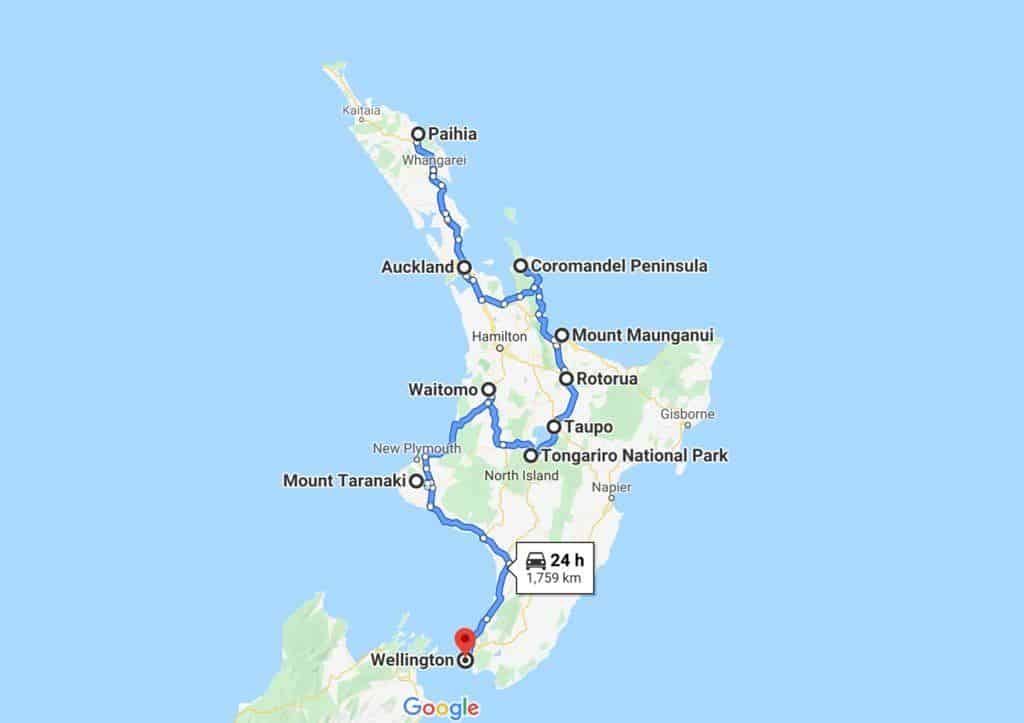
1-Week New Zealand North / South Island Travel Itinerary Highlights
If you only have 1 week to travel in New Zealand the best thing you can do is to pick either the North Island or the South Island to explore.
Here’s an overview of how we’d spend 1 week on either the North Island or South Island of New Zealand.
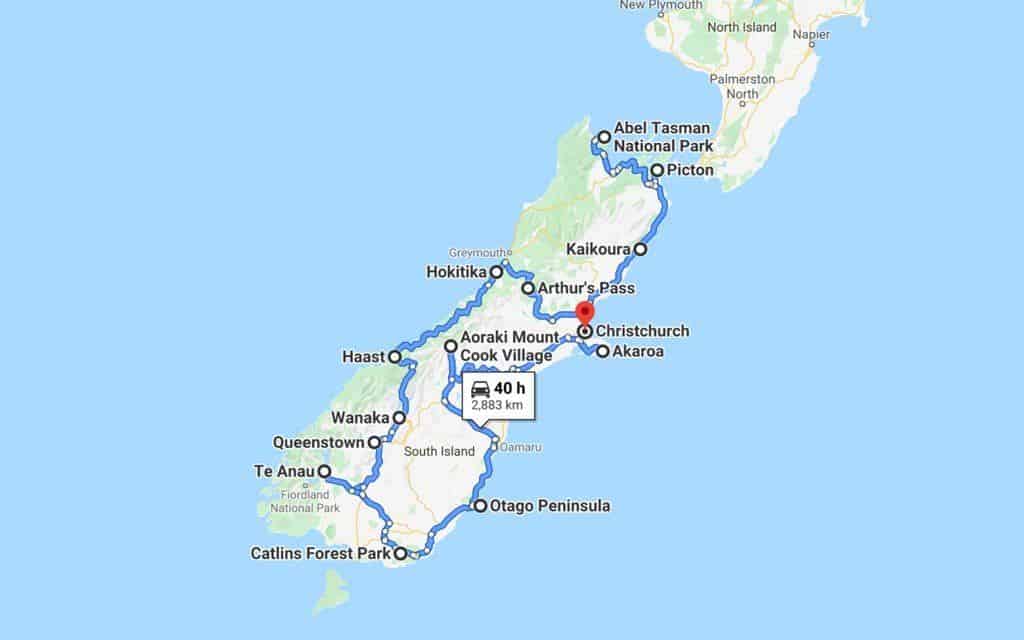
2-Week New Zealand Travel Itinerary Highlights
With 2 weeks in New Zealand, you can split your trip to cover both the North Island and the South Island. For this itinerary we recommend you fly into Auckland and out of Christchurch.
This is an idea of how we’d spend 2 weeks in New Zealand.
- Day 1 and 2 – Auckland
- Day 3 – Mount Maunganui
- Day 4 – Rotorua and drive to the Tongariro National Park
- Day 5 – Tongariro National Park
- Day 6 – Wellington
- Day 7 – Crossing the Cook Strait and driving to the Abel Tasman National Park.
- Day 8 – Hiking in the Abel Tasman National Park
- Day 9 – South Islands West Coast – Kaiteriteri to Hokitika
- Day 10 – South Island’s West Coast – Hokitika to Franz Josef or Fox Glacier and on to Wanaka
- Day 11 and 12 – Lake Wanaka
- Day 13 – Mount Cook
- Day 14 – Christchurch
3-Week New Zealand Travel Itinerary Highlights
Three weeks in New Zealand gives you a chance to see and do more. So if we had 3 weeks in New Zealand, this is how we’d spend it.
- Day 1 – Auckland
- Day 2 – Waitomo
- Day 3 – Tongariro National Park
- Day 4 – The Forgotten World Highway
- Day 5 – Wellington
- Day 6 – Crossing the Cook Strait to Picton and driving to Kaikoura
- Day 7 – Whale watching and dolphin swimming in Kaikoura
- Day 8 and 9 – Akaroa, the Banks Peninsula and driving to Mount Cook.
- Day 10 – Hiking around Mount Cook
- Day 11 and 12 – Wanaka
- Day 13 and 14 – Queenstown
- Day 15 and 16 – Doubtful Sound
- Day 17 and 18 – Caitlins National Park
- Day 19 and 20 – Dunedin and the Otago Peninsula
- Day 21 – Christchurch
READ MORE: Check out this post for more details on our New Zealand travel itinerary .
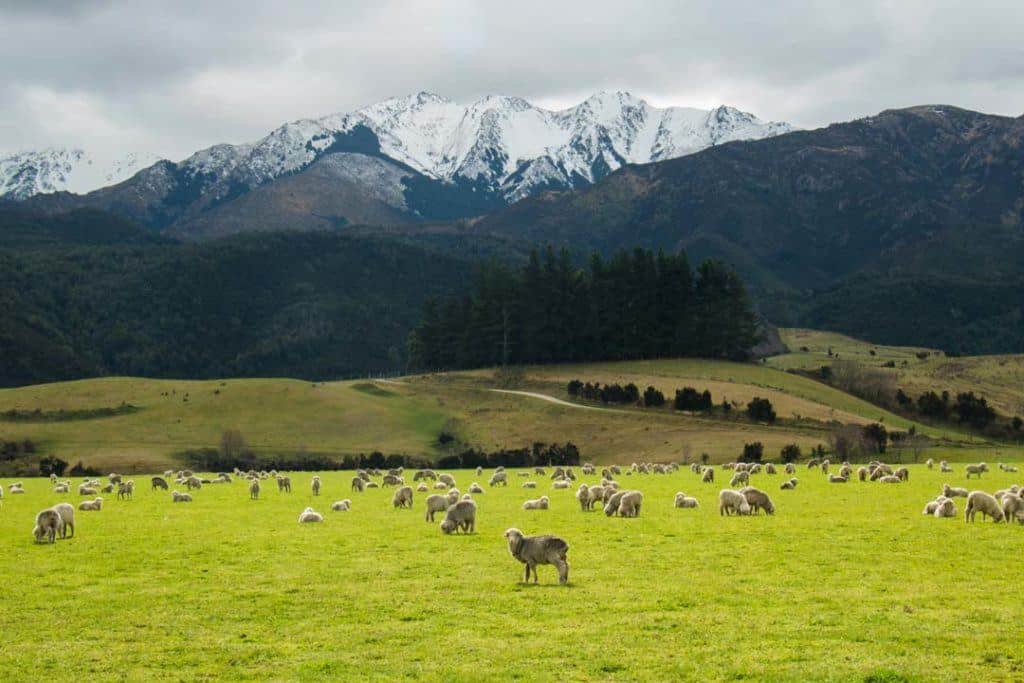
NEW ZEALAND TRIP PLANNING
Now we’re going to help you plan your ultimate trip to the Land of the Long White Cloud so you don’t make any mistakes! Here’s our best New Zealand travel tips based on almost a dozen trips!
BEST TIME TO VISIT NEW ZEALAND
These are the best times to travel to New Zealand:
- October – February for those perfect summer days.
- June – September for all things snow.
NEW ZEALAND TRAVEL BUDGET GUIDELINE
New Zealand is not the most affordable place to visit. However, you are sure to have a spectacular time well worth the expense.
You’ll find that taking a road trip is the best and most affordable way to see the country – especially if you plan to do some camping along the way.
Here’s an overview of what to expect when budgeting for travel to New Zealand:
Here are a few things you should know about the different budgets at which you can choose to travel.
Note: Budgets shown as Single Traveller / Couples per day.
Budget Traveller ($90 Single / $140 Couples)
If you’re here on a strict budget you are more likely to be getting around by car or basic camper van relying on DOC sites for your accommodation needs with the occasional splurge at a holiday park.
Basic camper vans will be small 2 berth campers that are often old Mazda vans, or people carriers converted into a home on wheels.
These budget-friendly camper vans are not self-contained, therefore you will not be allowed to freedom camp.
Make use of supermarkets and accommodation facilities to cook and limit eating out to an absolute minimum to keep the costs down.
Make sure to check the discounted aisles as quite often meat is marked down significantly if it is soon the pass its expiration date.
Adrenaline sports and other activities in New Zealand do not come cheap. If you are on a budget you will need to limit there.
So work out what you can realistically afford and do your research before you go, as the same activity may be cheaper in other parts of the country.
Mid-Range Traveller ($140 Single / $280 Couple)
If you’re on a mid-range budget then you are more likely to be travelling in a self-contained pop-top camper van and staying in a few more holiday parks than DOC sites.
Although eating out is expensive you may be able to afford the odd restaurant visit. But you will still be utilising supermarkets and holiday park facilities for the majority of your meals.
In terms of activities, you will be able to do more than if you were on a budget.
However, you will still need to watch the pennies, as the costs of these can rack up very quickly.
Luxury Traveller ($200+ Single / $300+ Couple)
If money is no object then you will be travelling in a rental car and staying in Airbnb, hotels or guesthouses, or you will be in a large multi-berth camper van.
As well a being fitted with the latest mod cons, the larger camper van will also be self-contained. If you’re taking the camper van option then you will be spending the majority of your time in holiday parks.
You will have the option to eat out more often, and whether you choose to is up to you.
In addition, you will also be able to splash out on some fancy purchases from the supermarket.
For activities, go wild! You’ve got the money so splash out and do as much as you want. New Zealand is full of great adventures and opportunities to have an amazing time!
New Zealand Budgeting Tips:
We have some great tips on how to make the most of your budget when you travel to New Zealand.
Top 10 Cards
Top 10 is the largest holiday park chain in New Zealand. They offer high-quality facilities at a reasonable price.
Purchasing a Top 10 card for $49 will save you 10% at all of their holiday parks. There are other additional discounts all over the country, including the ferry crossing from Wellington to Picton and on various activities including trips to Milford and Doubtful Sound.
Whenever you’re booking an activity, check if they have a top 10 discount. It saved us quite a lot when we were out there.
Take advantage of supermarket deals
Unless you have an almost unlimited budget you are going to be cooking a lot of your own food. New Zealand’s main supermarkets are Four Square, Pak n’Save, New World, Countdown and Fresh Choice.
Each supermarket will have various deals and multi saver options and some will have fuel discounts as well.
Early Bookings
If you’re visiting in Spring or Summer then it pays to book early to both ensure your space in a holiday park (especially around the Tongariro National Park) or on various activities.
Occasionally booking early will get you significant discounts.
Scour Travel Magazines
Any travel magazine, including ones you will pick up with your rental vehicle or at the airport, are loaded with discount coupons, for a variety of things potentially saving you quite a bit of money.
These generally can’t be combined with a top 10 discount card though.
Free BBQ’s
At various locations across New Zealand, you can expect to find free BBQs for public use. Make sure you have cleaning materials to ensure it’s clean for others to use afterward.
Plan Where You Are Going To Fill Up
Prices of petrol can vary in New Zealand. Therefore it pays to plan where to fill up.
For example, if you are taking a trip down to the tiny town of Manapouri to take a trip to Doubtful Sound, make sure you have a full tank before heading off as petrol is expensive there.
As a general rule of thumb, the smaller and more isolated a place is, the higher the petrol price is likely to be. A small difference here or there can help you to save if you’re here for a significant period of time.
Keep this in mind when travelling in New Zealand.
Check Your Fuel Consumption
When choosing which campervan you want to rent, check the fuel consumption. Often a lot of older and cheaper models consume a lot more fuel than some more expensive models.
Therefore it may be worth paying more to rent, as it could be cheaper when fuel costs are taken into account.
Limit Your Eating Out
If you are on a budget then this is one of the easiest ways to save money. Whilst being delicious, eating out in New Zealand is expensive and as such is an easy way to limit your outgoings.
Consider Travelling in New Zealand in The Winter
The cost of activities and vehicle rental is much cheaper in the winter than in the spring and summer.
Naturally, the weather won’t be as good and there will be some activities that are not running and some hiking trails that may not be accessible.
However, it has the potential to save you quite a bit of money.
Hire Returns
If you are planning on visiting New Zealand for a long time then this could be worth considering. Many camper van rental companies need vehicles moving to various places around the country.
The cost of renting campervans for these journeys is insanely cheap, sometimes as little as a few dollars a day.
The downside is that you have a limited time to get from point A to point B and it can be hard to follow a route, as you may be going here there and everywhere.
However, if time is on your side then this could be well worth it!
Buying A Vehicle
If you are going to be visiting New Zealand for an extended period of time then renting is not a sensible financial decision.
Buying your own vehicles has a number of advantages
- Your trip is a long as you want it to be.
- You could potentially sell the vehicle for the same or a similar price to what you paid for it, limiting your travel costs.
However, you won’t be able to rely on a hire company if something goes wrong.
You will need to add a few weeks on either side of your trip to buy and sell your vehicle.
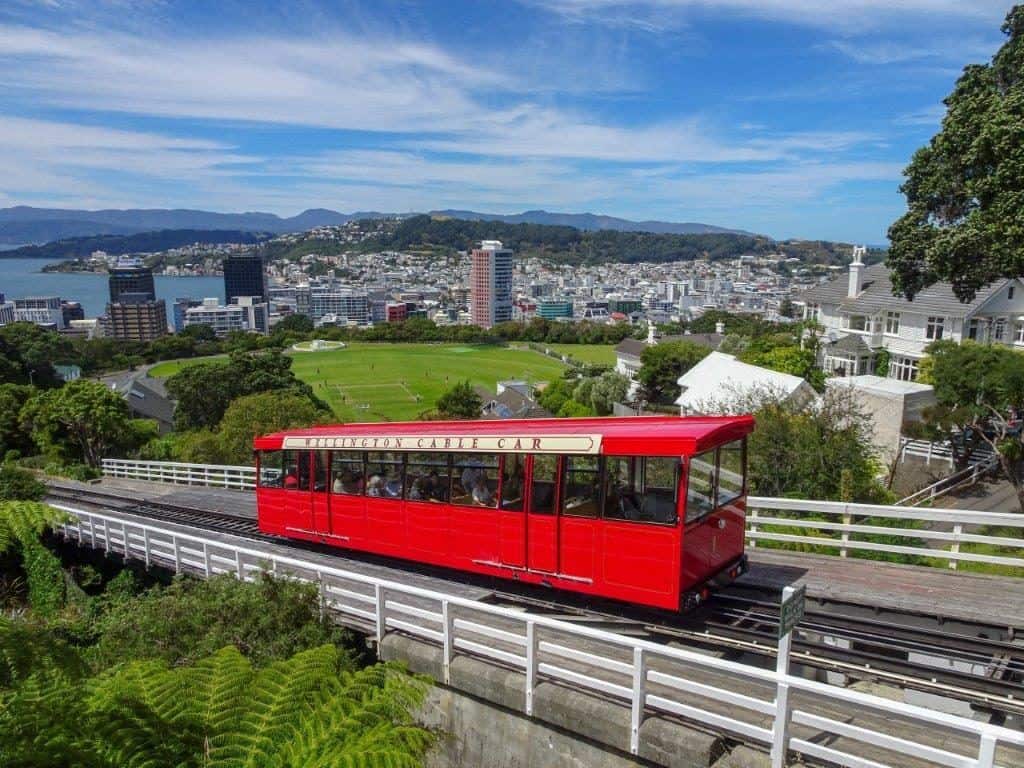
GETTING TO AND AROUND NEW ZEALAND
New Zealand is an island nation and thus the most reasonable, cost-efficient and common way to travel to New Zealand is by air.
Entry Requirements
It is relatively easy to travel to New Zealand. Australians can enter and stay visa-free.
UK citizens can enter for free with a 6-month stay.
Other nationalities may qualify for a visa waiver.
For information about which countries are granted visa-free waivers click here
Getting Around New Zealand
Hiring a vehicle is the best way to get around New Zealand and experience the stunning scenery that New Zealand has to offer.
Whilst there are public transport options available, there are natural limitations on the areas you can visit.
Travelling by Air
This is not a common option for many travellers. However if your time here for a shorter period of time then they can be an excellent option to cover larger distances.
You can then pick up a hire car at each destination and utilise short term rentals. This may be beneficial, for example, in flying between the North and South Islands to/from Auckland and Christchurch.
It’s not uncommon to find discounts, especially when booking early.
Travelling by Car
Generally much cheaper than renting a campervan, both in terms of rental fees and fuel consumption. If you’re here on a short visit then renting a car may be a better option than renting a campervan.
This can be a particularly budget-friendly option if you plan on camping as opposed to staying in Airbnb’s and guesthouses.
This is the way most travellers get around. Many have wonderful memories of pulling up in their campervans on edge of a lake, a deserted beach, or just stopping on a quiet road to admire the view.
It gives you more freedom and flexibility than a car. However it is more expensive and uses more fuel.
But if you are visiting for a longer period of time it can actually work out being quite similar, once you take the cost of accommodation into account. Holiday parks and DOC sites are much cheaper than guesthouses and Airbnb’s.
Many travellers rent large campervans, despite have little experience of driving a vehicle of such size.
When combining this lack of experience with New Zealand’s narrow and winding roads it can be a rather stressful experience. So think carefully about what you really need.
READ MORE: Check out our epic New Zealand road trip itinerary !
Travelling by Bus
If you don’t drive then this is the best option. The two most well known bus companies are the Kiwi Experience , which is aimed primarily at those aged between 18 and 25, and the intercity network .
Both companies offer flexible hop on hop off passes where you buy a certain number of hours in which you can then top up as you see fit. You can also change your plans if necessary.
Additionally you can purchase pre-arranged passes which can work out to be good value for money.
Although bus networks in New Zealand are well connected, it is harder to get away from the towns and into the middle of nowhere – which is one of the highlights of any visit.
Additionally, it will be harder to access hiking trails since you will not have a car and thusly will be reliant on public transport.
Travelling by Boat/Ferry
The countries major ferry route is between Picton and Wellington connecting the North and South Islands.
In high season it is recommended to book ahead.
Travelling by Train
The most famous train journey in New Zealand is the Trans-Alpine route that crosses the South Island between Christchurch and Greymouth via the Arthus Pass National Park.
Aside from this there a number of other train routes offering stunning scenery.
That being said, this isn’t the most convenient way to travel and you will have to combine it with bus travel or vehicle hire to be able to get around the country.
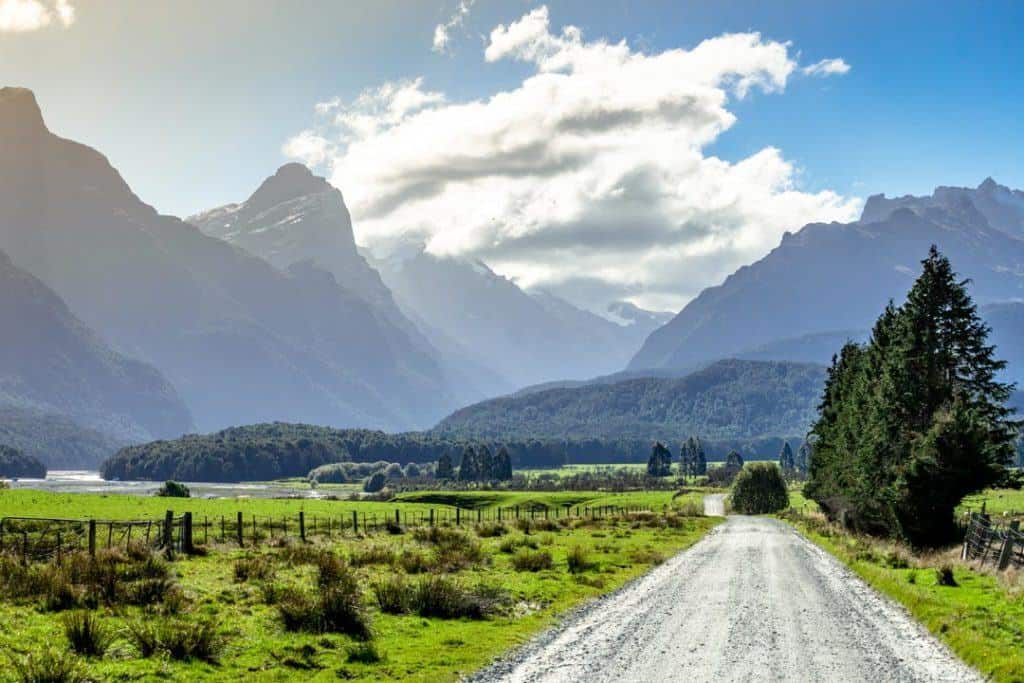
APPS AND TECHNOLOGY
Mobile apps and technology will make your trip safer, more affordable and overall more enjoyable.
Here are a few we think you should definitely acquaint yourself with prior to your travels:
- Google Maps – The tried and true navigation app that will help you find virtually any place in New Zealand and help you with directions on how to get there
- XE Currency – Transfer, monitor and calculate currency as the need arises. This app may not be totally necessary as you are typically tied into rates the banks charge for services. But it is handy to have around.
- Express VPN – This will protect your sensitive information wherever you travel – not just in New Zealand. Be sure to have this to keep your online information secure as you travel.
- CamperMate – Since you will most likely find yourself camping at some, if not all, of your travel to New Zealand, use this app to find camping spots all around the country
BEST THINGS TO EAT IN NEW ZEALAND
New Zealand has some pretty tasty food. You should definitely give the following foods a try when visiting!
- Lamb – A staple in Kiwi meals and found at almost every restaurant. Lamb is traditionally prepared with rosemary and garlic.
- Spaghetti on toast – Yes, as simple as it sounds this is a delicious New Zealand staple
- Marmite – The equivalent of Australian Vegemite, made from yeast extract and herbs. Spread it thin over crackers or bread.
- L&P – Lemon and Paeroa is mineral water tinted with lemon that could easily be the countries national drink
- Hangi – A traditional Maori method of steaming meats and vegetables where the food is wrapped in leaves and buried to cook on heated stones in holes in the ground.
- Kumara – A form of sweet potato that is prepared a variety of ways such as chips and wedges
- Fish And Chips – A classic dish with deep-fried battered fish and potato fries served with tomato sauce
- Pavlova – A meringue dessert that has caused much dispute over whether it was originally created in Australia or New Zealand.
- Hokey Pokey Ice Cream – Vanilla ice cream with caramelized sugar. Enough said!
- Manuka Honey – Produced by bees that collect the pollen of Manuka trees, this honey is thick and uniquely sweetened in flavor

PLACES TO STAY IN NEW ZEALAND
New Zealand is chock full of great accommodation options. Whether you’re on a budget and need to stay at a hostel or have enough room in your budget to splurge on a hotel or unique Airbnb you’ll be pleased with your stay.
Of course, if you are looking to camp in beautiful landscapes then your options become even more wide open.
Holiday Parks and Campsites
Probably one of the most popular accommodation options for travellers visiting New Zealand. The predominantly cater to campervans and campers. However, some do have small chalets on site.
The vast majority will come with large kitchens and communal bathrooms. However, not all kitchens are equipped, meaning they do not have cooking utensils and cutlery.
In addition, holiday parks will offer both powered and non-powered sites. Naturally, non-powered sites are cheaper, so this could be a good way to save a few pennies here and there.
Rankers and Campermate are two useful apps that can help you locate holiday parks and campsites, see what facilities they have and check out reviews from other travellers.
Campmate allows you to book in advance and check out various things to do in the local area amongst other things.
There will be some campsites and holiday parks that only allow self-contained vehicles.
Your vehicle is self-contained if:
- You have a toilet fixed or portable that can be used even when the beds are down
- You have a fresh and wastewater tank
- An evacuation hose
- A rubbish bin with a lid
- Self-contained campervans can also be identified by a blue sticker.
DOC (Department of Conservation Sites) are generally cheaper and more rustic than holiday parks. Expect a bathroom and maybe a small unequipped kitchen.
However, they often located in stunning locations, with the White Horse Campground close to Mount Cook being a prime example.
There are 6 different categories of DOC site . They are a great budget option and are often surrounded by some stunning scenery.
Freedom Camping
There are some spots where you are allowed to freedom camp. In the past, you used to be able to freedom camp almost anywhere.
However, a large increase in tourists and the waste they left behind has put paid to that. You can now only freedom camp if you are in a self-contained vehicle.
Freedom camping is a wonderful thing. However for it to carry on working effectively, everyone needs to follow the rules and clear up after themselves.
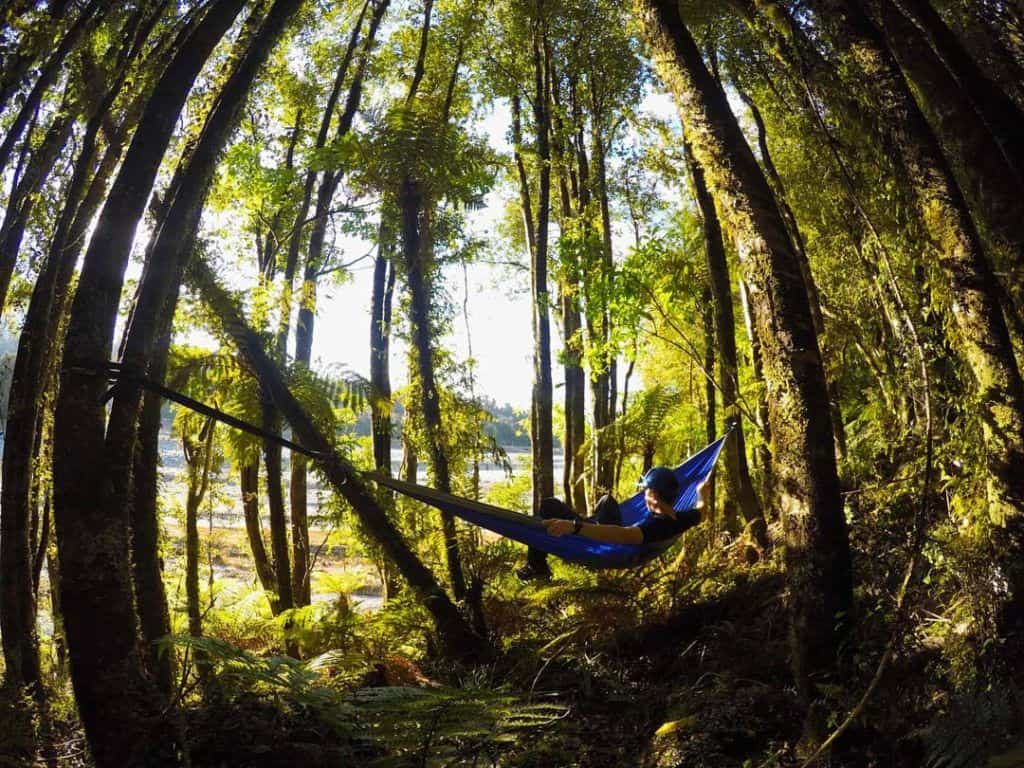
New Zealand is jam-packed with plenty of awesome hostels that connect travellers and are phenomenal resources of tips and information.
Incidentally, they are great places to buy and sell vehicles. So if you land in Christchurch or Auckland and are planning on buying camper van for your road trip, then your hostel is the perfect place to start.
Hostels predominantly focus on dorms as opposed to private rooms, which brings to cost down significantly.
If you are travelling by car, then hostels are a great alternative to camping, although they are naturally more expensive. Make sure they have parking!
Hotels in New Zealand are not cheap, so if you are on a budget this is something you may want to avoid.
However, there are spectacular hotels and guesthouses throughout the country that are a great excuse to splash some cash.
Generally, hotels rank from simple motel-style options up the swanky 5-star options with plenty in between.
Another good option in recent years for accommodation in New Zealand is AirBnB. And there are more and more amazing places popping up to stay for very affordable prices every day.
As is typical in many destinations where Airbnb accommodations are popping up, you’ll likely find great value and a little more personal space with an Airbnb stay.
NEW ZEALAND TRAVEL TIPS
Here are the best travel tips for New Zealand to help you have the safest, most affordable and enjoyable trip possible.
GENERAL NEW ZEALAND TRAVEL TIPS
While there are many basic travel tips we suggest you use when travelling to New Zealand, there are also plenty of New Zealand-specific tips that will make your visit the best it can be.
Here are a few we recommend you consider as you plan your trip to visit New Zealand:
1. Make Sure You Have a Credit Card
New Zealand is not densely populated. It’s the size of the UK with a population of around 4.5 million (for reference the UK population is over 65 million).
This means there are a rather large number of unmanned petrol stations that are pay at the pump.
When we visited we had problems with debit cards being accepted at these machines. However, we experience no issues with credit cards.
2. Avoid The Summer Holidays If Possible
Late December and January are particularly busy in New Zealand as this is the nation’s summer holiday. This means that there will be large numbers of both international and domestic tourists.
November and early December bring great weather and smaller fewer people.
3. Don’t Follow Penguins
If you are in Omaru, and you’re walking back to your accommodation and you catch sight of a penguin, stop and do not follow them.
If you don’t stop then the penguins may be too scared to return to their nests.
4. Check For Weather Warnings
The weather can change quickly in New Zealand. During the winter months, large areas of New Zealand can experience heavy snowfall which can lead to road closures amongst other things.
Make sure to check weather warnings and road closure notices to ensure you can make appropriate plans.
5. Be Prepared For 4 Seasons in a Day
New Zealand is the absolute definition of 4 seasons in a day. Therefore whenever you’re heading out on a hike make sure you bring the appropriate clothing just in case the weather changes.
6. Hayfever Issues
New Zealand has a large amount of indigenous flora and fauna, particularly on the South Island. If you have hay fever then you may have quite a serious allergic reaction.
If you experience this then you’ll need to go to a doctor and get some prescription-strength hay fever medication.
7. Always Assume Journeys Will Take Longer Than Google Maps Says
New Zealand’s roads offer breathtaking views as you wind your way across the country.
Occasionally roads can be steep, narrow and extremely twisty.
If you are not used to driving such roads then it’s a safe bet that journeys will take longer than what google maps says.
8. Book Ahead If You Can
This is especially advisable for campsites and holiday parks. In Autumn and Winter, there is a good chance you can turn up and there will be space.
However in late Spring, early Summer this is not always a guarantee. Naturally, this is more likely in busier, more popular spots.
Additionally, you are likely to be arriving somewhere after 6 pm it’s worth calling the holiday park/campsite and booking a spot as very often desks close at 6 pm.
If you are planning on taking on any of New Zealand’s great walks and are planning in staying on the huts en route, then this is another situation where it is advisable to book ahead.
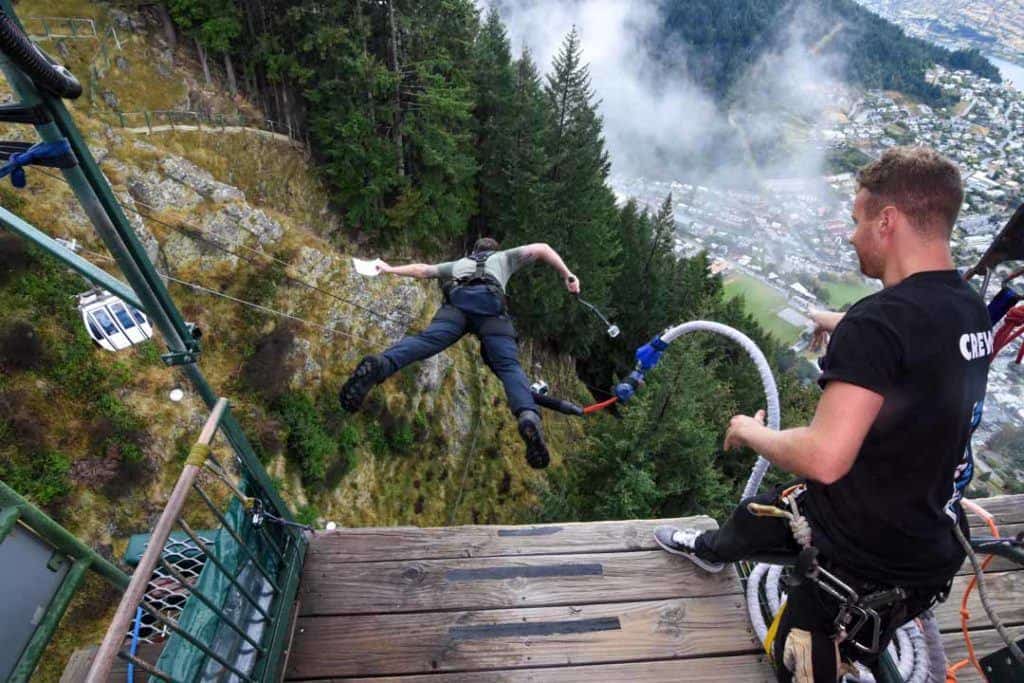
NEW ZEALAND PACKING LIST
We always travel with a core packing list wherever we go. And when it comes to New Zealand, many factors will affect what else you need to bring along with you.
Check out our travel essentials and be sure to add any of the other additional items listed below.
STAYING SAFE IN NEW ZEALAND
Generally speaking, New Zealand is very safe. That being said, you still need to take sensible precautions to keep yourself safe as you would do in your home country.
If you are heading out on multi-day hikes make sure you inform somebody. You’re best off informing you accommodation, however, they may directly ask you to register elsewhere.
This will differ depending on the hike and the region of the country you’re in.
Generally driving is very safe. The majority of road users are courteous and follow the rules of the road.
However, as mentioned earlier, New Zealand’s road criss-cross a variety of environments meaning that roads can be very narrow, steep and winding along the contours of the landscape.
Therefore make sure you are driving at a speed that you are comfortable with and follow the rules of the road.
New Zealand is blessed with many stunning beaches. However, make sure you pay attention to any beaches that are advising against swimming due to currents.
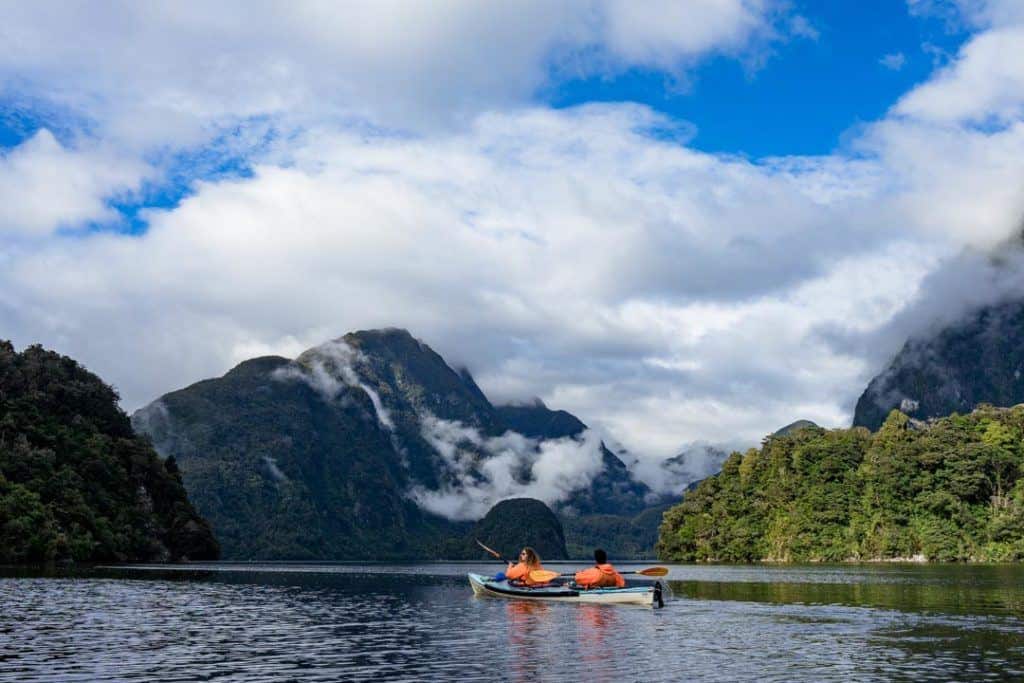
STAYING CONNECTED IN NEW ZEALAND
Staying connected in New Zealand can be challenging. But it has never easier as the country becomes more and more popular for travellers.
We feel like your money will go a lot further if you consider a few other options.
Purchase a SIM Card
Travel sims can be picked up anywhere in New Zealand. There are usually a variety of deals on offer. However, don’t expect the same kind of data packages you get in Europe, the Far East or the US.
With some companies, you can get free data when in the vicinity of one of their phone boxes.
Access Free WiFI
The vast majority of holiday parks and campsites have wifi. However, outside of major towns and cities, there is often a limit on the amount of data that you can use, as little 250 MB in some cases.
Unsurprisingly wifi connections can be patchy in more rural locations, with the South Island having a noticeable poorer wifi service in comparison to the North Island.
Hotels and guesthouses don’t suffer the same wifi issues and don’t have limits of the amount of data you can use. Generally, the speed is reasonable, much faster than what is available in holiday parks.
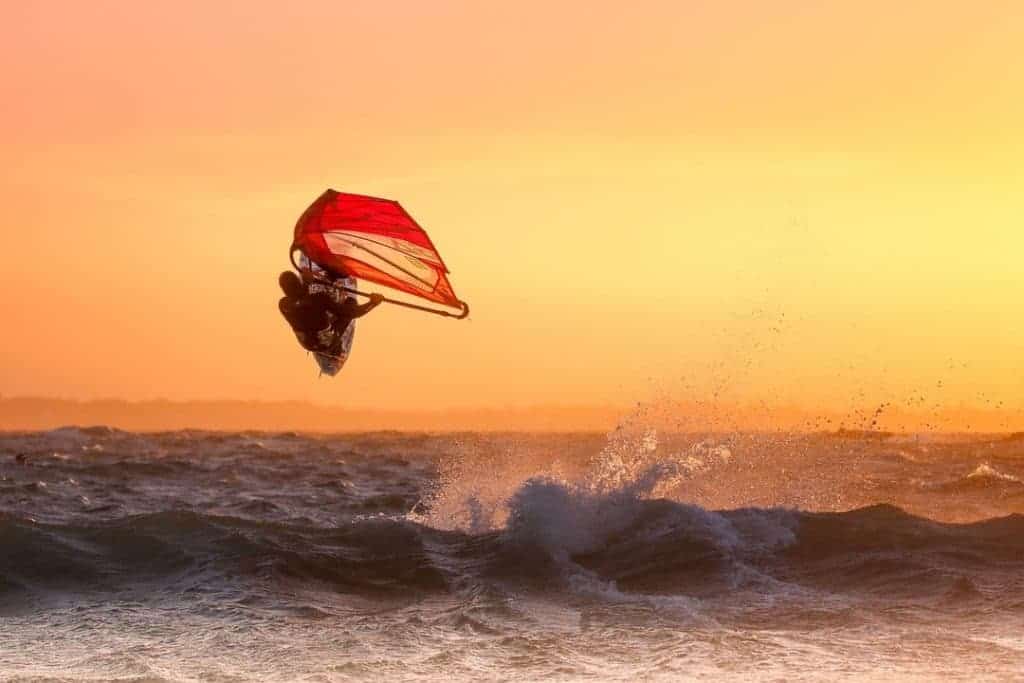
BE A RESPONSIBLE TRAVELER IN NEW ZEALAND
In recent years tourism numbers to New Zealand have surged. Whilst this has brought economic opportunity up and down the country, it has also lead to a number of challenges.
The first of these is freedom camping. In years gone by you could freedom camp almost anywhere with the expectations that people would follow basic rules such as cleaning up after yourself.
Sadly, however, these rules have been changed and you can now only freedom camp in designated spots and only if you have a self-contained vehicle in many cases.
Being a responsible traveller means following the rules with regards to freedom camping.
New Zealand is pristine. A large part of this is due to the lack of trash bins. You are expected to leave nothing but footprints.
It’s a simple and easy rule to follow. Make sure you keep New Zealand beautiful for everyone else that has the pleasure of visiting.
New Zealand is also home to a wide variety of wildlife with strict rules on interacting with them.
For example, a few of the basics are not feeding kea’s (the worlds only alpine parrot), staying a safe distance from seals whilst they are on land and not following the little blue penguins in Omaru.
Many roads in New Zealand are single lane and are particularly windy and can be challenging if you are driving a large campervan.
Be sure to observe all road rules and drive sensibly.
BOOKS TO READ ABOUT NEW ZEALAND
Maybe you already know everything about New Zealand. Chances are you don’t!
But even if you are well-read, here are a few suggestions that might be worth your time while you’re on the plane to New Zealand.
Pounamu Pounamu (Witi Ihimaera) – A look at what it is like to be a New Zealander from the Maori perspective from one of New Zealand’s first and most respected writers of Maori culture, tradition and storytelling. Buy it online here .
The Penguin History of New Zealand (Michael King) – The well-rounded historical story of the settling and advancement of New Zealand from one of New Zealand’s leading historians. You can find it here .
Squashed Possums: Off the Beaten Path in New Zealand (Jonathan Tindale) – An fun story of vagabond life in New Zealand from a man who lived in a wandering caravan and had some of the most peculiar encounters across the country. Check prices on Amazon .
Straying From the Flock: Travels in New Zealand (Alexander Elder) – The memoir of a New Zealand traveller as told through 50 chapters, each reflecting one day of adventure in the wild country. Buy it online .
CHECK OUT ALL OF OUR NEW ZEALAND BLOG POSTS
Whanganui journey in new zealand – the ultimate guide [2024], the ultimate guide to new zealand’s south island in winter, 5 best adventure activities in taranaki, new zealand, 17 awesome things to do in wanaka (epic 2024 guide), 22 cool things to do in wellington, new zealand (2024 edition), 18 awesome things to do in christchurch (2024 guide), the ultimate guide to hiking in new zealand (2024), 13 amazing things to do in franz josef (2024 guide), 3 days kayaking in abel tasman (everything you need to know), 8 amazing things to do in rotorua, new zealand, the most epic 1, 2 or 3 week new zealand itinerary (2024), the best new zealand road trip itinerary in 2024.

- Food & Drink
- Milford Sound
- Itineraries
- Work With Me
35 New Zealand Travel Tips: What to Know Before You Go
Are you’re planning your first trip to New Zealand and wondering where to start? I’ve got you covered with these New Zealand travel tips!
New Zealand is a stunningly beautiful country that offers a wide range of experiences for travelers. From the rugged mountains and glaciers of the South Island to the lush rainforests and pristine beaches of the North Island, it’s no wonder New Zealand is a must-visit destination for many.
With so much to see and do, there are a few things you should know first, so you can have an amazing time without having to spend time figuring these things out DURING your trip.
I’ve compiled the best tips for traveling in New Zealand that I learned from living here for 20 years to help you travel safely and smoothly throughout the country.
Here are 35 New Zealand travel tips to help you make the most of your adventure.
» You might be interested in Driving from Queenstown to Milford Sound: Everything You Need to Know + 18 Best Places to Stop Along the Way

Top New Zealand Travel Tips
1. don’t try to do everything.
New Zealand may be a small country but there is so much to see and do. Not to mention all the incredible landscapes to explore across two main islands. If you’re thinking you can see it all, you’re going to be disappointed or overwhelmed trying. My best tip for new visitors to New Zealand is “ don’t try to do everything” .
Even living here for many years, I still haven’t done it all.
No matter how much time you have, it’s impossible to do absolutely everything. And that’s ok! Plan a realistic itinerary so you can take the time to enjoy it. Prioritize your absolute must-dos, then build additional things around that.
Road trips are a good way to see a lot of things in between two main cities, including the small towns and beautiful landscapes around New Zealand.
2. Plan According to the Season
New Zealand is split across two main islands, and they are different in both terrain and climate. Research the areas you plan to visit including the weather to help you determine the best time to visit New Zealand .
In winter it can be quite cold in the South Island which may restrict certain activities, but it is ideal for skiing and snowboarding in the parts which have an alpine environment.
In summer it is a busier time to visit but there are more options with the good weather such as beach activities, especially in the warmer North Island.
Spring and fall can be good for hiking and experiencing popular activities with fewer crowds.
If you are planning road trips, bear in mind there can be snow and ice on roads in the alpine areas during winter. So you’ll need to keep an eye on road conditions and may need to consider a 4WD or carrying snow chains for your vehicle.
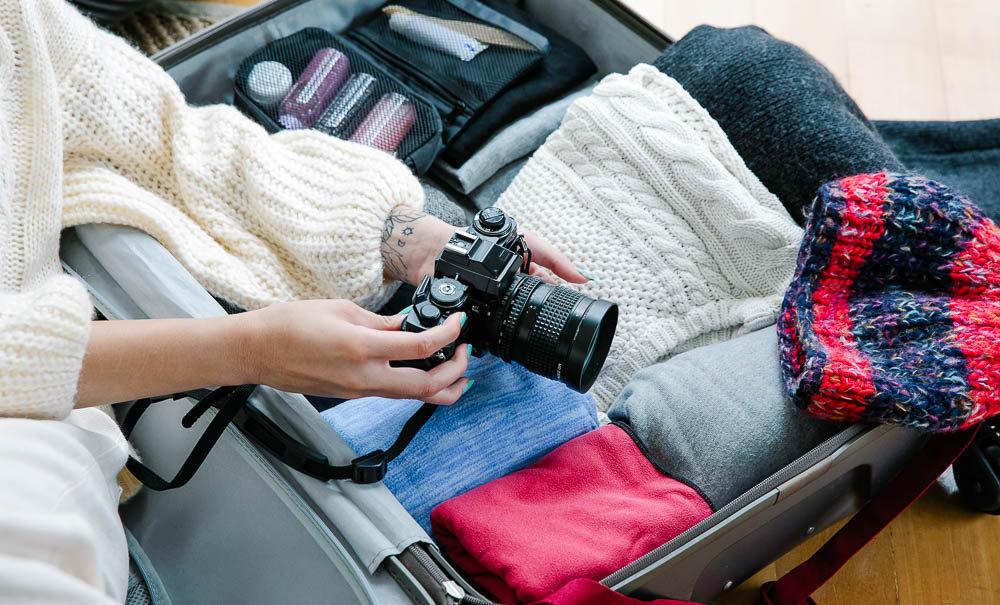
3. The Seasons are Reversed
Speaking of planning according to the season, it’s worth mentioning our seasons are opposite to the Northern Hemisphere.
Summer in New Zealand runs from December to February and winter from June to August.
This means summer school holidays are in December and January, which combined with the holiday season tends to be the busiest time of year to travel around New Zealand. Be sure to check school calendars if you want to avoid the school holiday crowds.
Spring (September to November) and fall (March to May) are considered the shoulder seasons and tend to be less busy with cheaper prices for accommodation, car rentals and some attractions than you would find in peak season.
4. Rent a Car or Campervan
Public transport outside the main cities is limited. If you plan on exploring multiple areas, I recommend renting a car or campervan. It offers the most flexibility and you can explore the country at your own pace.
Even within the cities, you may be limited to what you can see and do without your own transport. For example, the west coast beaches in Auckland are worth visiting but you’ll need a car to get there.
Hotels in the cities generally charge a fee for parking and it can be expensive. An option is to build your itinerary so that you have a few days in the city first without a car, then rent a car for the day trips you plan to take later on.
There are several car rental companies in New Zealand, including international brands and local companies. Some of the popular companies include Budget, Avis, Hertz, and Europcar. It’s important to do your research and compare prices and services before making a reservation.
We like using DiscoverCars.com to compare prices and book our rental cars. Once you enter your travel details they search the best deals you!

5. Know All Your Transport Options
Choosing the best way to travel around New Zealand is a personal choice. If renting a car is not right for you, there are several other options for getting around, each with its own advantages and disadvantages. The best option depends on your budget, travel style, and timeframe.
Here are some options to consider:
- Public transportation: New Zealand has a network of Intercity buses and trains that connect major cities and towns. This is a convenient and affordable option for getting around, especially if you’re traveling on a budget, but bear in mind it takes longer and offers less flexibility.
- Domestic flights: Air New Zealand and Jetstar are the two domestic airlines in New Zealand. Air New Zealand has the most coverage in regional airports, and Jetstar is generally cheaper. Flying between cities is good if you are short on time but it can be expensive and you’ll be limited to airport locations and flight schedules.
- Guided tours: There are bus tours covering most areas of the country from a couple of days to a couple of weeks. It’s a stress-free way to travel, with your itinerary and bookings made for you, and a great way to learn about the areas you visit from knowledgeable guides. Although they can be expensive and you may have limited time to explore on your own.
6. Know Where You Can and Cannot Camp
If you plan to explore New Zealand on a budget, staying in campsites and holiday parks along your journey, and renting a campervan is the way to go. Just be sure to know where you are allowed to camp as you can’t just park up anywhere in New Zealand.
Each region has its own by laws on freedom camping that you’ll need to adhere to. And you’ll need to be driving a certified self-contained campervan.
It’s also a good idea to book where you’ll be staying in advance, especially in peak season.

7. Learn New Zealand Road Rules
New Zealand drives on the left side of the road which may be different from what you are used to. This means the steering wheel will be on the right side of the car. A good tip to remember is the driver is always on the side of the car that is closest to the middle of the road.
Take some time to practice in a quiet place before tackling the cities or winding mountain roads.
Things like roundabouts and one-lane bridges are common in New Zealand but may be new to you. Be sure to know the New Zealand road rules and check driving conditions before heading off.
You can check the rules for driving as a visitor to New Zealand on the NZTA site , including license requirements.
8. Explore the Cities
New Zealand has several vibrant and dynamic cities that offer a range of experiences for visitors. I recommend that you don’t just stick to one during your visit. Each has its own vibe and attractions. They are also a great start and end point for exploring beyond the cities or embarking on a road trip.
- Auckland , the largest city in New Zealand, is known for its stunning harbor, world-class restaurants, and has plenty of attractions to choose from. Being a main travel hub, many visitors spend at least one day in Auckland to start their trip.
- Wellington , the capital city, is a cultural hub with a thriving arts scene, great coffee, and beautiful harbor views.
- Christchurch , located on the South Island, is known for its beautiful gardens and parks as well as cafes and restaurants.
- Queenstown , the adventure capital of New Zealand , offers a range of outdoor activities, from skiing and snowboarding to bungee jumping, skydiving and jetboating.
These cities, among others, offer a unique glimpse into New Zealand’s culture and history, as well as plenty of exciting things to do – rain or shine .
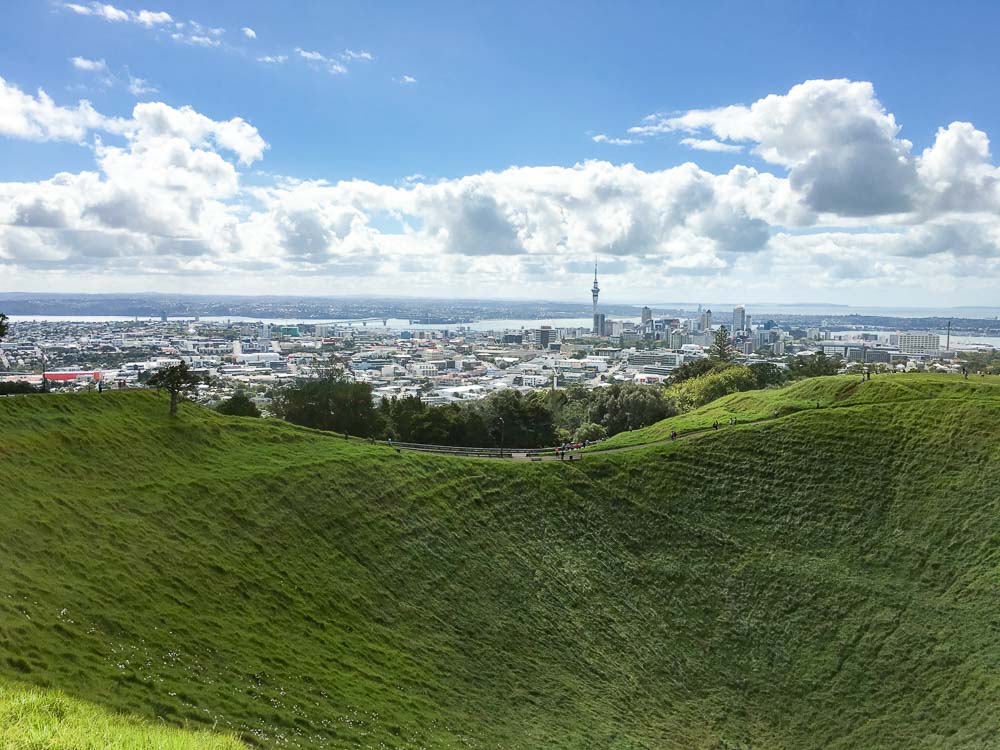
9. Explore Beyond the Cities
New Zealand is known for its natural beauty and there are many ways to experience it. From scenic drives and world-renowned hiking trails to national parks and quaint towns rich in history and culture.
In fact, New Zealand is home to two UNESCO World Heritage Areas, two International Dark Sky Reserves/Sanctuaries and 13 national parks that are free to visit.
Each area offers unique landscapes and activities, so try to visit at least a couple during your trip. Nature is what New Zealand does best!
10. Respect the Environment
New Zealand has a commitment to caring for the environment, including conservation efforts to preserve the native wildlife that is under threat due to invasive species.
Tiaki is a significant part of Māori culture that can be loosely translated to mean to care, conserve and protect. The Tiaki Promise is a commitment to care for New Zealand and everyone who lives and travels here has a responsibility to look after it. This means that while traveling in New Zealand we will:
- Care for land, sea and nature, treading lightly and leaving no trace
- Travel safely, showing care and consideration for all
- Respect culture, traveling with an open heart and mind
It’s important to stay on marked trails and practice “leave no trace” principles when hiking and camping. Always leave with anything you brought. Leaving trash or tramping on delicate vegetation is not responsible or respectful.
Be sure to clean your boots at cleaning stations when you see them. Not all trails have them, but it is an important step in containing diseases such as Kauri tree dieback, which is killing our beautiful Kauri trees. So please use them when you see them.
This is why it’s also important to only bring clean hiking gear into New Zealand. Declare your gear at the airport and they’ll even clean it for you.

11. Try Local Cuisine
New Zealand may not be the first place that comes to mind when thinking about food, but thanks to its diverse cultures and rich agricultural resources New Zealand has a range of delicious foods to try . Be sure to try local cuisine and visit farmers’ markets for fresh produce. Here are some of the best local dishes and where to try them:
- Auckland: Known for its multicultural food scene. Visit the Auckland Night Markets to try a variety of street food from all over the world. Head to Commercial Bay for a selection of restaurants and an upmarket food hall with a range of eateries. Or head to the Viaduct for Auckland’s top restaurants with a view. Try the steak and oysters at Oyster and Chop or fresh seafood at Soul Bar and Bistro.
- Rotorua: Experience a hāngī meal and learn about Māori culture at a Māori Village in Rotorua. Hāngī is a traditional method of cooking in Māori culture in which food is steamed in an underground pit, referred to as an earth oven, resulting in deliciously tender meat and root vegetable infused with smoky flavors.
- West Coast: Famous for its whitebait fitters. New Zealand whitebait are tiny fishes with a subtle flavor, most commonly served in fritters. They can be found all over New Zealand during whitebait season (September and October), but especially along the West Coast of the South Island.
- Bluff: A small town located at the very bottom of the South Island known for its fresh seafood and bluff oysters that are wild caught straight off the coast. If you can’t make it to Bluff, don’t worry, they are shipped to just about every seafood restaurant in the country from March to August.
- Kaikoura: Known for its amazing crayfish with ‘seafood caravans’ dotted along the coast. Similar in appearance to lobster but with a subtle flavor. If you’re heading to Kaikoura be sure to stop at Nins Bin to try their famously fresh crayfish.
- Queenstown: Home to the famous Fergburger, arguably New Zealand’s best burger, but also many restaurants featuring farm to table cuisine and local wines. Try Rata restaurant for fresh contemporary New Zealand cuisine. Or the signature ribs at Flame Bar & Grill, we dine here at least once or twice whenever we’re in Queenstown!

12. Enjoy Local Wine
New Zealand is known for its world-class wine, with several regions producing some of the best wines in the world. There are quite a few and I’m still working my way through trying them all!
Try to visit a couple of wineries, tour the vineyards, and sample the wine. It’s a wonderful experience sitting amongst the vineyards. Enjoy the stunning views of the surrounding landscapes, as well as a chance to meet the winemakers and learn about the wine-making process.
You may like to book a wine-tasting tour. There are plenty to choose from in each of New Zealand’s wine regions. Here are a few of our favorite wine regions to visit in New Zealand:
- Waiheke Island , located on the North Island and a short ferry ride from Auckland, is known for red wines based on Cabernet Sauvignon, Merlot, Malbec and Cabernet Franc grape varieties. The island is home to 30 boutique wineries , many with tasting rooms, swanky restaurants and breathtaking views.
- Hawke’s Bay , located on the North Island, is known for its full-bodied red wines, including Cabernet Sauvignon, Merlot, and Syrah.
- Marlborough , located on the South Island, is known for its Sauvignon Blanc, which is crisp, refreshing, and bursting with tropical fruit flavors.
- Central Otago , also located on the South Island, is known for its Pinot Noir, which is elegant, complex, and has a distinct earthy flavor.
Popular wineries include Cloudy Bay in Marlborough, Craggy Range in Hawke’s Bay, and Felton Road in Central Otago.

13. Book in Advance
New Zealand is a popular destination during the summer months (December to March). Accommodation and tours can fill up quickly. Many visitors from the Northern Hemisphere come to escape their winter plus local families are traveling for summer school holidays .
It’s worth booking your accommodation and car or campervan rental well in advance for the best rates. As appealing as it sounds to arrive with a road trip plan and wing it on where to stay each night, it’s not a good idea.
Even campsites need to be booked in most places and you may end up with nowhere to stay if you leave it to the last minute. You’re better off having a rough itinerary and booking your accommodation in advance for each area.
I also recommend booking any tours or attractions you don’t want to miss out on.
If you’re traveling between May and October you’ll have more flexibility with fewer crowds. With the exception of Queenstown, which gets busy for ski season from June to August. Even then, you’re better off having a rough plan with flexible bookings that you can change around once you’re here.

14. Don’t Miss the Scenic Roads
The South Island offers some of the most scenic drives in the country with views that have to be seen to be believed. Our 2-week South Island road trip itinerary provides a comprehensive loop around the island stopping at popular attractions and off-the-beaten-path locations.
The Southern Scenic Route follows the coastline from Dunedin to Invercargill including picturesque lighthouses and stunning waterfalls to be explored along the way.
You can continue on the Southern Scenic Route from Invercargill to Te Anau through the remote coastal communities and popular surf beaches along the southern coast.
Te Anau is a great base from which to explore the popular Milford Sound and the more remote Doubtful Sound . The drive from Te Anau to Milford Sound is an incredible journey through the lush landscapes of Fiordland with plenty of scenic stops along the way and not to be missed.
But my personal favorite is the drive from Queenstown to Mt Cook . Plan for a slow drive, with plenty of stops to see all the best views and places to discover along the way. From New Zealand’s oldest hotel to landscapes that can only be described as otherworldly, it has it all.
Here are some other scenic drives you might enjoy:
- Driving from Queenstown to Milford Sound: Everything You Need to Know + 18 Best Places to Stop Along the Way
- Driving Cromwell to Queenstown: 10 Best Places to Stop Along the Way
- 15 BEST Places to Stop on the Drive from Glenorchy to Queenstown
- Queenstown to Invercargill: 10 BEST Places to Stop Along the Way
For the North Island, our 2-week North Island road trip itinerary covers all the best places and scenic routes to take.

15. Protect Yourself from the Sun and Sandflies
The UV rays are pretty intense in New Zealand, thanks to a thin ozone layer and less airborne pollution to scatter the UV radiation. Traveling in New Zealand requires some preparation to protect yourself from the sun’s harmful rays all year round, with extra precautions during the summer months. Here are some of our top tips:
- Check the UV Index : UV levels are variable across the country and depending on the time of year. The sun’s rays are generally the strongest from months of September to April and from 10 a.m. to 4 p.m. so make sure you can seek shade during these times and plan outdoor activities in ways that prevent overexposure to the sun.
- Sunscreen: Use a broad-spectrum sunscreen with at least SPF 30 and remember to re-apply regularly, even if it’s cloudy. Consider a waterproof sunscreen if you’ll be swimming or sweating and re-apply more often.
- Clothing: Wear lightweight, long-sleeved shirts and pants to protect yourself from prolonged exposure to the sun. You can find apparel with built-in UV protection, but generally clothes with a tight weave are best at blocking UV rays.
- Hats and Sunglasses: Protect your face, neck and shoulders with a wide-brimmed hat. Sunglasses that block both UVA and UVB rays are best for protecting your eyes.
- Hydrate: Exposure to the sun can bring on dehydration quickly, especially when you’re active. Drink plenty of water, even if you don’t feel thirsty, to ensure you stay hydrated.
- Bring Bug Spray: Sandflies can be prolific in areas near running water and humid bush such as beaches, lakes and waterfalls, especially during summer. These tiny insects leave an itchy bite that can be unpleasant. Cover your arms and legs with clothing and use a high deet insect repellent if venturing to these areas. I also find they don’t bother you as much if you keep moving.

16. Don’t Skip the Hike
New Zealand is an outdoor paradise with hundreds of trails across the country from easy to advanced, and ranging from 10 minutes to 10 days! We always recommend including a few hikes in your itinerary. By the way, hiking is referred to as “tramping” in New Zealand .
The Department of Conservation (DOC) is a great resource to find trails that are available in any region across New Zealand, including any alerts or track closures.
Exploring the landscapes of New Zealand is a truly rewarding experience but it’s important to be prepared. If you plan on doing the more challenging hikes be sure to wear sturdy footwear and don’t underestimate the effort required. New Zealand’s advanced trails can be tough, technical and remote but incredibly beautiful.
The environment can also change quickly, especially in the backcountry and at higher altitudes. Dress for the conditions and always have a warm layer with you, even in summer. Wi-Fi may not be available in some locations so if you’re heading into the remote or alpine areas you should carry a personal location beacon (PLB) with you.
Here are some of our favorite hikes in New Zealand:
- 12 BEST Day Walks in Queenstown
- 10 EPIC Day Hikes in Queenstown
- 15 Must-Do Walks in Te Anau From Easy to Advanced
- Guide To Hiking Roys Peak: Everything To Know About New Zealand’s Most Photographed View
- 15 Best Hikes In Milford Sound
- Sawpit Gully Trail – A Spectacular Hiking Trail in Arrowtown, New Zealand

17. Enjoy the Beaches
New Zealand is home to some of the most stunning beaches in the world, and there are plenty of ways to enjoy them. Here are some of our top tips:
- Choose the Right Beach: New Zealand beaches can vary drastically from the wild black sand beaches on the west coast to the calm and pristine white sand beaches on the east coast. Do some research to find a beach that fits your interests – whether that’s surfing, swimming, relaxing or exploring.
- Sun Protection: Wear a broad-spectrum sunscreen with at least SPF30. Reapply regularly and don’t forget your sunglasses and hat.
- Follow Safety Guidelines: Always pay attention to beach safety signs and flags. Watch out for rip currents and only swim in designated areas when lifeguards are present.
- Pack a Picnic: Many beaches have picnic areas, some even with BBQ facilities, where you can enjoy a meal with a view. Remember to pack plenty of water and stay hydrated.
- Explore Beyond the Sand: Many beaches are near hiking trails, waterfalls, parks or towns with shops and restaurants. See what else there is to see and do in the area.
- Leave No Trace: Remember to take trash and belongings with you at the end of the day to help keep New Zealand beautiful.

18. Be Flexible
New Zealand is beautiful, wild and unpredictable and the weather can affect some activities. For example, wind or rain may cancel a skydive or a helicopter landing on a glacier. Fog may obstruct views at the top of the mountain you just spent 4 hours climbing.
I get that it’s a balancing act between planning for the time you have here and being flexible. Especially if you are traveling in the summer months when booking tours in advance is recommended.
Most tours offer the chance to re-schedule if it gets cancelled due to inclement weather. Our advice is to book your activities or tours that are weather-dependent for the beginning of your stay. This way you have the option to re-book for another day if you need to.
It’s also good to have a list of other things you want to see or do in each location so that you can adjust to the weather and conditions if you need to. Then you won’t have to spend time trying to research other things to do on the fly if plan A gets disrupted.
19. Dress for The Weather
New Zealand’s weather can be unpredictable, so be prepared for all kinds of weather, even in the summer.
The best way to pack for New Zealand is to bring layers. The time of year you’ll be visiting and the activities you’ll be doing will determine just how many layers you need. For example, hiking in the South Island in fall I wear a short sleeve or long sleeve t-shirt during the day and usually progress to a fleece and then a puffer jacket the higher we climb, and for the cooler evenings.
But even in summer, a light layer is useful for the cooler evenings and protection from the sun. And a warm layer if you’ll be heading to the mountains.
A waterproof jacket and comfortable walking shoes are essential all year round. And sturdy hiking boots if you’ll be hitting the trails.

20. Be Prepared for Earthquakes
Earthquakes can occur in certain parts of New Zealand. They aren’t very often and are usually small. In fact, I’ve lived here for many years and I still haven’t felt one in person. But that doesn’t mean one won’t happen while you’re here. It’s important to be familiar with safety procedures, just in case.
- Familiarize yourself with the “Drop, Cover, and Hold” protocol. If you feel shaking, drop down on your hands and knees. Cover your head and neck and get as much of your body under a sturdy piece of furniture. Hold on to your shelter until the shaking stops.
- Know the safe spots in your area. If inside, find an anterior wall or under large sturdy furniture and avoid doorways. If outside, move away from buildings, trees, streetlights, and power lines, then Drop, Cover and Hold.
- Know the emergency procedures at the place you’re staying. Identify safe places to take cover and establish a way to contact friends and family to let them know you’re safe.
- Consider having an emergency kit with you that includes items such as bottled water, non-perishable food, a flashlight, a first-aid kit, a portable charger for your phone and any essential medication.
Tips for Traveling in New Zealand
Here are some quick New Zealand travel tips to ensure you get here smoothly as well as some handy tips for traveling in New Zealand once you arrive.
21. Declare, Declare!
New Zealand customs are strict and you are required to declare certain items in order to protect the country’s environment.
Food as well as plant and animal products can introduce pests and diseases that could cause irreparable damage to New Zealand’s agriculture and environment. While some packaged food is okay to bring in, declare it anyway to be on the safe side.
New Zealand’s ecosystem has evolved in isolation for millions of years, with unique plants and animals that are found nowhere else in the world. The country’s isolation and geological history have created a unique and delicate balance between species. The introduction of a non-native pest or disease can have devastating consequences.
Not only can failure to declare result in fines or even criminal charges, but you may inadvertently bring in something extremely harmful to the environment.

22. Know Your Visa Requirements
Visitors to New Zealand are required to have a visa or an Electronic Travel Authority (ETA), depending on their country of origin.
Citizens from visa-waiver countries, such as the United States, Canada, and the United Kingdom, can apply for an ETA before their trip online or via the free app .
Visitors from countries that are not on the visa waiver list must apply for a visitor visa before arriving in New Zealand. This process can take several weeks, so be sure to plan accordingly.
The type of visa you have will determine how long you can stay, but generally ranges from 3 to 9 months. It’s important to check the visa requirements for your specific country before traveling to New Zealand, as they can vary depending on your country of origin and the purpose of your visit.
23. Have a Return Ticket
One of the rules for entry into New Zealand is that you must have a return ticket, unless you have a work visa. I know, it’s a great place and I don’t blame you for wanting to stay forever but you won’t even get into the country without that return ticket.
Luckily, you can stay for a long time as a tourist and there may be an option to extend your visit depending on the type of visa you entered on.
24. Currency
The local currency is the New Zealand dollar which comes in colorful notes ranging from $5 to $100.
Coins come in 10, 20 and 50-cent pieces and $1 and $2 coins. This keeps prices nice and round as does Swedish rounding. A purchase ending in 6, 7, 8, or 9 is rounded up to the nearest 10c and a price ending in 1, 2, 3, or 4 is rounded down to the nearest 10c since we don’t have any 1, 2 or 5 cent coins.
Most places in New Zealand accept credit cards, Visa and Mastercard being the most popular, but be aware some retailers may apply a surcharge for using a credit card. Also, the term EFTPOS means ‘paying with card’ in New Zealand.
The currency exchange bureaus you’ll find in New Zealand cities generally have better exchange rates compared to airports.

25. Sales Tax
In New Zealand, sales tax is called GST and it’s already built into the prices of things. This means the price you see on the sticker is the price you’ll pay at the counter for the most part.
Exceptions include if Swedish rounding or a credit card surcharge is applied.
26. Tipping is Not Expected
Tipping in New Zealand is not as common as it is in some other countries, such as the United States. In general, service charges are not added to bills, and tipping is not expected. The hospitality industry pays staff a fair wage, so tipping is not necessary to supplement their income.
However, if you receive exceptional service at a restaurant or from your tour guide, leaving a small tip is always appreciated. Generally, a 5-10% tip is considered a generous gesture. However, it’s entirely up to the individual’s discretion.
27. Emergency Number
111 is the emergency number for police, fire and ambulance in New Zealand and the number to call if anyone’s safety is at risk.
105 is the number for police non-emergencies. This includes reporting things that don’t need immediate or urgent attention such as a lost wallet or phone, and damaged or stolen property.
You should contact your embassy for issues with your passport.
New Zealand is a safe country with low crime rates, but it’s good to know these numbers and not need them, rather than need them and not have them.
28. Carry Reusable Bags
New Zealand grocery stores no longer provide free bags so I recommend carrying a couple of reusable bags with you. You can buy them from any grocery store. And if you are caught without a bag, don’t worry, you can still buy paper bags at checkout.
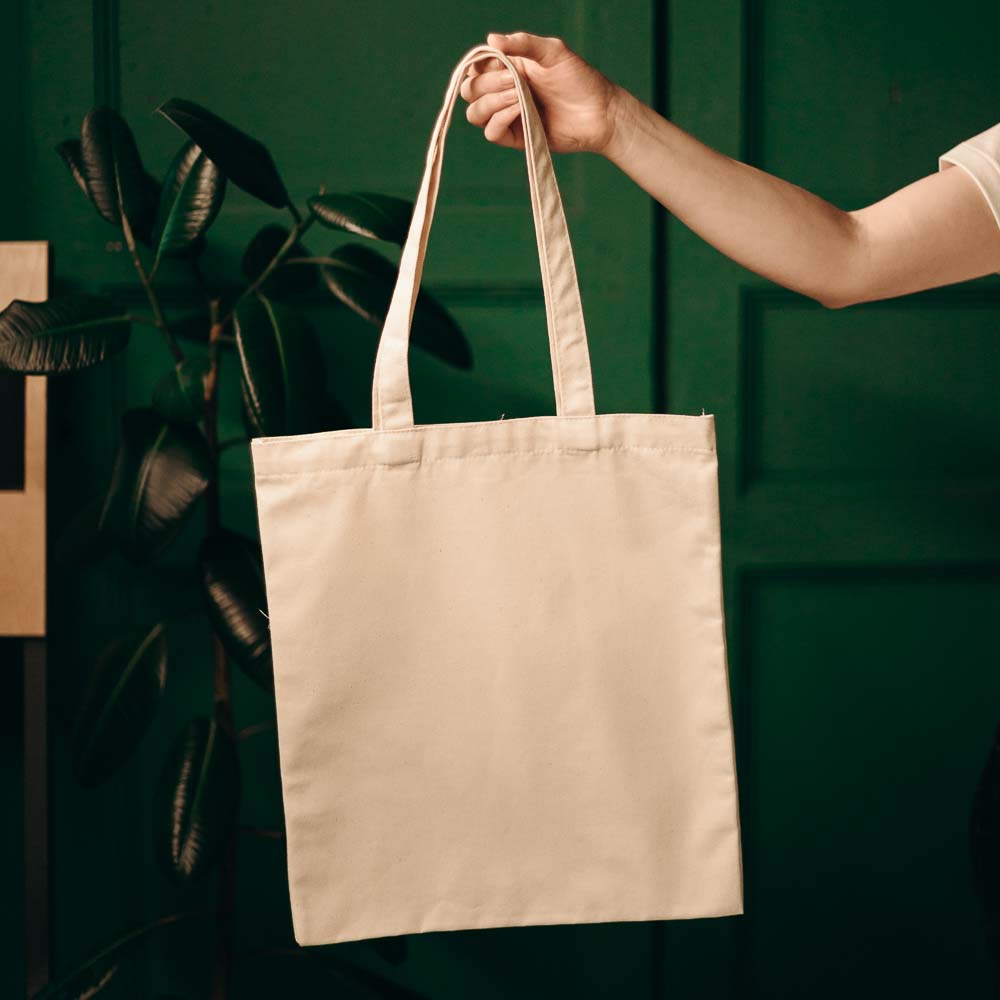
29. Acceptable ID
The legal drinking age is 18 years old in New Zealand and you may be asked to show your ID to prove your age when buying alcohol.
The only forms of ID that are accepted are your passport, a valid New Zealand driver license and the Kiwi Access Card (previously known as the 18+ Card). So, if you are heading out to buy alcohol from a store or ordering from a restaurant, you may want to have your passport with you.
If you are staying in New Zealand for a while, it may be worth getting a Kiwi Access Card instead so you can keep your passport safe.
30. Wi-Fi Can Be Mixed
Wi-Fi in New Zealand may not be as good as what you’re used to back home. Free Wi-Fi in city cafes is usually decent but cheaper accommodations can be slow and may only be for a small amount of data.
The nicer hotels generally have good Wi-Fi but don’t be surprised if it varies from place to place. Sometimes it’s worth paying a little extra for good Wi-Fi.
Some remote areas don’t have access to a network. So, if you’re heading into these areas, such as Milford Sound, be sure to download any maps before you go.
31. Consider Getting a SIM Card
If staying connected is important, you may want to consider getting a New Zealand sim card for your phone. If you plan on sharing your epic adventures on social media and relying on Google Maps to navigate, consider choosing a plan with a lot of network data. You can purchase New Zealand SIM cards at the airport.

32. Plan More Time Than What Google Says
New Zealand highways are often single-lane winding roads outside the main cities and it’s unlikely you’ll be traveling at the maximum speed limit for the entire journey. And even if you could, it may not be the speed you are comfortable doing.
It’s fair to say, it usually takes a little longer to cover the same distance compared to other countries. Plus, I always recommend leaving extra time to pull over and enjoy the scenic stops along the way.
Sometimes Google will take you on the shortest route rather than the easiest and you may end up on some gravel farm or logging road. If you’re traveling to remote areas, just double-check the directions are sticking to the main highways.
33. New Zealand is Expensive
Be prepared for sticker shock. The prices for things such as food and drink are likely to be higher than what you may be used to at home. If you’re traveling from the United States, UK or Europe you’ll at least have the exchange rate from a stronger currency on your side.
Here are some ways to save during your stay:
- Cook some of your own meals . Pak n Save, Countdown and New World are supermarkets you’ll find in the main cities and towns around New Zealand. Pak n Save being the cheapest.
- Check gas prices . Gas prices vary, gas stations at supermarkets or outside of the main cities tend to be cheaper. Just be sure to fill up before heading into remote areas such as Milford Sound. There can be long stretches of driving between gas stations.
- Take advantage of free activities : New Zealand has many free activities, such as hiking, walking tours, and visiting museums. National Parks and beaches all have free access. Take advantage of these to save money and experience local culture.

34. You Can Drink The Tap Water
New Zealand water is safe to drink and you can fill your water bottle up from the tap. I think it tastes pretty good too.
Many parks and walkways have water refill stations. So bring along your reusable water bottle. In fact, some of the rivers in Milford Sound are so pure you can fill your water bottle up straight from the source. Local tour guides will show where it’s safe to do this.
Plus, not having to buy bottled water is another great way to save money.
35. Power Points and Voltage
New Zealand uses Type I plugs for wall sockets which are the same as Australia and the Pacific Islands, and the voltage is 230/240 volts (50Hz). Some of the things you need to plug into the wall for power, such as laptops with a dual voltage power supply, you can use with a decent plug adaptor (a worthwhile investment).
If you’re bringing appliances (such as standard hair dryers) from countries where the voltage is lower, such as the USA and Canada, check that your appliance clearly states it is safe for use up to 240 volts. If not, you will need to use a voltage converter/transformer.

Wrapping Up: Travel Tips New Zealand
There you have it, our top New Zealand travel tips! Visiting New Zealand for the first time is an exciting experience. With so much to see and do, it’s a destination that will leave you with memories to last a lifetime. These top tips for traveling in New Zealand will help you prepare and enjoy your time in this beautiful country. Happy planning and safe travels!
Travel Planning Guide
🚗 Where should I book my rental car?
Renting a car is one of the best ways to get around New Zealand. Public transportation can only get you so far, even in the cities. I always rent with Discover Cars , which checks the prices of all major rental car companies, so you get the best rates.
🚐 What about a campervan?
Renting a campervan is a fantastic way to experience the more remote areas of New Zealand. I really like JUCY because they have a big range of vehicles and locations around the country, which offers more flexibility with pick-up and drop-off. I also like Motorhome Republic , which compares all the campervan options available in NZ.
🛏 What’s the best way to book my accommodations?
For hotels and vacation rentals, Booking.com or Expedia.com are the best sites. You can also book through TripAdvisor. If you’re considering renting a house instead, try VRBO which often has good deals.
🛩 What’s the best site to buy flights to New Zealand?
For finding the best deals on flights to New Zealand from around the world, I recommend Kayak.com .
Like this article? Save it on Pinterest so you can find it again.
FOLLOW US on Pinterest and Facebook for more New Zealand travel inspiration and tips!

YOU MIGHT ALSO LIKE

How to Spend a Weekend in Auckland: The Perfect 2-Day Itinerary

10 Best Cruises in Milford Sound

Top 21 Foods in New Zealand You Must Try

Queenstown 3 Day Itinerary: How to Spend 3 Days in Queenstown, New Zealand

Heather is a travel enthusiast living in New Zealand with her family. She writes about living in and enjoying travel to New Zealand.
Leave a Reply Cancel reply
Your email address will not be published. Required fields are marked *
Save my name, email, and website in this browser for the next time I comment.
See reviews Enquire now
Email: [email protected]

- What to Pack for a New Zealand Holiday

- Planning a Trip to New Zealand
We know that many of you will be coming to New Zealand for a variety of experiences, so therefore your clothing and equipment needs will vary accordingly. We have compiled a list that tries to accommodate various requirements. We hope the information provided helps you make the right decisions, ensuring you have a trouble free holiday.
Tips & Tricks when packing for your New Zealand Holiday.
Some Advice on Packing
General Guideline
Clothing should be lightweight, hard-wearing and easily washed. Almost everyone brings too many clothes, so try to travel as light as possible. If you are travelling in high summer months (January to March) we recommend that you take loose fitting clothing, preferably made of cotton, as this will help you to keep cool. Bear in mind in New Zealand you can experience 4 seasons in 1 day!
Packing not Stuffing
When packing for your holiday, don’t pack your bags too full. Not only do over-packed bags place undue stress on locking mechanisms, they are also difficult to re-pack throughout your holiday, not to mention the fact that you’ll have nowhere to put any souvenirs that you buy along the way.
Cross-packing
When travelling with a companion we recommend “cross-packing”, i.e. pack 2 outfits of your clothing in your companion’s luggage and vice-versa, in case one bag is delayed or lost.
Roll, don't fold
Tried-and-tested by our team, rolling saves more space than folding and prevents creasing. Anything seriously fragile should go in a garment bag and laid flat on top. If you can, leave it on the hanger (preferably a slim, plastic one) - then you can just hang it up as soon as you arrive.
Keeping Warm
If you are visiting our alpine regions, on the water or here over winter - the best way to beat the cold is by wearing two or three thin layers of clothing, rather than one thick layer. Air trapped between layers becomes warmed by the body and instant insulation from the effects of cold is created. Keeping dry also plays an important role in beating back the effects of cold. Finally, it is important to have the proper covering for head, hands and feet. As a general rule, wool, silk and synthetic fabrics are recommended as they trap air better than cotton. These items are available in a wide range of clothing articles in soft, stretchy, water- and windresistant fabrics. Jerseys, camisoles and underwear help "wick" moisture away from your body and can act as your first layer. For your second layer, you might want a sweater. A third layer, if necessary, may be a cardigan-type jacket made of waterproof synthetic or a lightweight down vest.
Just 15 minutes in the New Zealand summer sun can cook you. Temperatures can be low but the ultra-violet rays are vicious due to the hole in the ozone layer. Wear a hat, sunglasses and a high SPF sunscreen. Footwear
It is important to bring footwear that is suitable and also comfortable. If you are planning any hiking we recommend you wear sturdy walking shoes or hiking boots If you decide to take hiking boots, it is vital that you wear them in before you travel (one suggested method is to put them on, submerge them in water and then take a brisk 5 mile walk at least twice). You should also bring spare laces. Sport sandals, boating shoes or beach footwear—may be useful in some locations.
Stuff shoes
Use every inch of space and prevent shoes from getting damaged by stuffing them with socks and underwear. Then place each pair of shoes inside a dust bag This also forces you to be brutal - how many pairs of shoes do you actually need?
Stock up on basic meds
When your body relaxes, it often lets down its defences. Don't let a cold ruin your holiday - pack a cold remedy for the flight and stock up on tissues and painkillers at the airport. Please read our blog Bringing Medication into New Zealand
New Zealand Dress Code
New Zealand is typically an informal place, so bring plenty of comfortable, casual clothes. Most bars and restaurants do have a dress code, but, again, this is commonly just smart casual. Men are generally not expected to wear suits and ties, except in a few of the top formal bars and restaurants in major cities.
If you read a sign saying: "No thongs" don't panic - it's another word for flip-flops, jandals, pita-patas etc, depending where you are from.
Suggested Packing List
General clothing.
- 1 pair jeans
- 2 pair light-weight trousers
- 2 pairs shorts (or a skirt)
- 3-4 Shirts (think layering for colder days; quick-dry clothes are best)
- 2 button up front long sleeve shirt
- 1 sleep shirt & sleep shorts (or whatever you sleep in)
- 1 light sweat shirt or long-sleeve t-shirt
- 1 swimming suit
- underwear and sleepwear
- 4-5 pairs socks both thin and thick
- 1 pair walking boots or comfortable walking shoes
- 1 pair sport sandals (like Teva's)
- 1 Polar Tec or similar fleece Jacket (preferably water resistant/windproof jacket)
- warm rain jacket or lined windbreaker with hood
- 1 pair "hiking" boots or good walking shoes
- 1 or 2 changes of smart casual clothing for restaurant dining
Outdoor Clothing
- non-cotton base layers (top and bottom); choose fabrics such as polypropylene, Capilene or Thermax
- rain jacket and pants (preferably water and wind proof or resistant)
- heavier socks
- sandals (preferably waterproof)
- collapsible walking staff
- scarf or bandanna
- 1-3 long pants (help to ward off sand flies in remote/mountainous areas of the South Island)
Documentation
- travel Insurance
- travel documents – flight tickets/vouchers and Itinerary
- dive certification cards
- dive log book
- drivers license
Other Items
- motion sickness tablets (if you require them)
- Insect repellent (with Deet)
- sunscreen lotion
- sun glasses
- brimmed sunhat
- medications and copies of prescriptions
- sunscreen and lip ointment
- current converter and outlet adapter
- travel alarm clock or watch with alarm
Documents to bring with you...
Scuba Diving All persons wishing to scuba dive must take their certification cards with them as well as their dive log book as these will be examined. You will be required by each dive centre to complete a medical questionnaire. If we are in anyway unsure of your fitness, you may be required to undergo a medical examination at your expense to prove you are fit to dive. This may result in considerable extra cost. No refunds will be given if you are refused medical clearance to dive. You are strongly advised to undergo a full medical examination before booking your holiday. We also require you to sign a Standard Safe Diving Statement of Understanding. Also bring any of your equipment that you do not feel comfortable hiring, i.e. a regulator, BCD, mask or fins, etc. However, there is a full range of equipment available for hire at a nominal fee.
Driving licence If you plan to drive a vehicle while in New Zealand you should bring your licence with you. You can legally drive in New Zealand if you have a current driver's licence from your home country(if not in English this needs to be shown in combination with either an official translation or an International Driving Permit (IDP). The law here requires all drivers carry their licence or permit when driving. You will only be able to drive the same types of vehicles you are licensed to drive in your home country. Drivers with a non-English language licence must carry an accurate English translation of their licence or an International Driving Permit while driving.
Travel Documents & Vouchers When you book a tour you will be issued with a Confirmation Itinerary. Please ensure that all the services which you have booked and paid for are shown on your travel documents and that all names have been spelled correctly. If you have booked additional services like extra nights' accommodation, transfers or excursions, please make sure that these are shown and that you have been issued with a voucher for these services. (Vouchers are generally sent out one month prior to departure). Don’t forget to bring your valid passport and if required a visa for your journey.
Make a Copy It is highly recommended that you make a note of your passport details (passport number, visa number and place and date of issue of both), in the old days we would say take a photocopy but now you can just take a photo from your phone and store it in the cloud. This makes live so much easier if you do happen to lose your passport etc. If you lose your passport you must report it at once to the local police and the nearest embassy or consulate of your country.
and finally, a word to the brave…
Before you leave for your holiday, Take everything out of your bag/case lay it all out, the clothes and the ‘things’ you plan to take. Take a long look then only put half back.
Take only the ‘Bare Necessities’ :) - as it’s so much more comfortable to travel light. Have you ever been on a trip only to find you took something with you that you never even used? If you can answer ‘yes’ to that question, then it’s likely you could be taking a lot less with you. Take clothing that can serve multiple purposes and remember you can always get items laundered as you travel should you need. Remember New Zealand is a modern country and if you really need that item you left behind, you will be able to purchase one locally.
More articles to help you plan your trip to New Zealand
Getting to New Zealand New Zealand Passport and Visa Requirements Smooth as possible on arrival to New Zealand Travel Insurance for New Zealand Doubtful Sound or Milford Sound? Which New Zealand Glacier to Visit? Driving in New Zealand Safety in New Zealand's Great Outdoors What is the Best Time to Visit New Zealand? New Zealand Accommodation Guide New Zealand's Need to Know Facts What do things cost in New Zealand
Since 2001 we’ve been helping visitors plan their dream New Zealand holiday. We aim to make visiting our beautiful land effortless. Let our expert holiday planners put together an itinerary for you, no obligation FREE of charge, or get some friendly advice on what small group tour would suit - Just follow the link and answer a few brief questions .
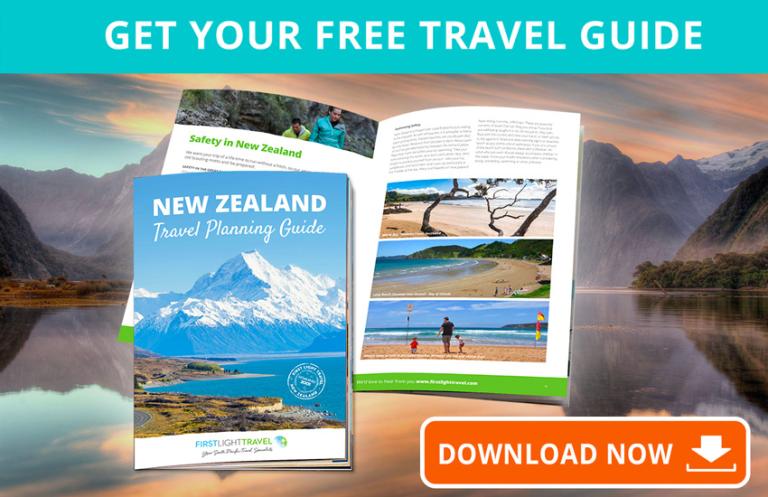
Pricing terms
The price is based on current exchange rates but is only an approximation. Please contact us for a final price
- Travel Tips New Zealand for planning and on the go
Book your individual trip , stress-free with local travel experts
- roughguides.com
- Australasia
- New Zealand
- travel-advice
- Travel guide
- Itineraries
- Local Experts
- Travel Advice
Accommodation
Plan your tailor-made trip with a local expert
Book securely with money-back guarantee
Travel stress-free with local assistance and 24/7 support
Robert Digney
The trip was fantastic. Unparalleled Journeys was on point the whole way. The AXUS app was very useful for itinerary updates and communications with your t...
More travel information for New Zealand
From travel safety to visa requirements, discover the best tips for traveling to New Zealand
- Eating and drinking in New Zealand
- Getting around New Zealand: Transportation Tips
- Outdoor activities
- Culture and Etiquette in New Zealand
- How to get to New Zealand
- Shopping tips for New Zealand
- Spectator sports
- Travelling with children in New Zealand
- Best time to visit New Zealand
The sunny summer months (October to April) are the most popular time for travellers visiting New Zealand, but winter offers great skiing and snowboarding and the days are often clear and bright, if chilly. The far north of the country is often dubbed the “winterless north”, although even in this subtropical area, winters can be nippy. The far south is the coldest part of the country – if you’re surfing you’ll need a wetsuit year-round.
Crime and personal safety
Electricity, entry requirements, gay and lesbian travellers, maps and gps, opening hours, time and seasons, tourist information, visitor centres, travellers with disabilities, women travellers, tailor-made travel itineraries for new zealand, created by local experts.

17 days / from 5400 USD
From North to South - Auckland to Christchurch Self Drive
Explore both the North and the South Island in this compact itinerary. Your own rental car allows you the freedom to go at your own pace and scenic rail journeys break up the driving times. Explore glaciers and cities, thermal springs and panoramic hiking trails.
_listing_1594826609732.jpeg)
14 days / from 3600 USD
Discover the South Island: a self drive trip from Christchurch and back
The larger of the two major island in New Zealand, South Island is best to be explored at your own pace in a rental car. From massive mountains to beaches, panoramic waterfalls to challenging hiking trails, this itinerary shows you the best of South Island.

9 days / from 2900 USD
North Island: A self drive trip from Auckland
Discover the beauty of North Island on a roundtrip from Auckland in your own vehicle. Visit thermal springs, enjoy delicious wine tastings, and explore remote beaches and hiking trails. North Island has plenty to offer travelers and a rental car makes for the perfect discovery.
The relatively strong Kiwi dollar and effects of the global financial crisis means that New Zealand is no bargain, but with high standards of quality and service the country is still decent value for money.
Daily costs vary enormously, and the following estimates are per person for two people travelling together. (With the prevalence of good hostels, single travellers can live almost as cheaply as couples, though you’ll pay around thirty percent more if you want a room to yourself.)
If you’re on a tight budget, using public transport, camping or staying in hostels, and cooking most of your own meals, you could scrape by on $60 a day. Renting a car, staying in budget motels, and eating out a fair bit, you’re looking at more like $160 a day. Step up to comfortable B&Bs and nicer restaurants, throw in a few trips, and you can easily find yourself spending over $350 a day. Also, you can completely blow your budget on adventure trips such as a bungy jump or tandem parachuting, so it pays to think carefully about how to get the maximum bang for your buck.
The price quoted is what you pay. With the exception of some business hotels, the 15-percent Goods and Service Tax ( GST ) is always included in the listed price. GST refunds are available on more expensive items bought then taken out of the country – keep your receipts and carry the items as hand luggage.
Student discounts are few and far between, but you can make substantial savings on accommodation and travel by buying one of the backpacker or YHA cards. Kids enjoy reductions of around fifty percent on most trains, buses and entry to many sights.
New Zealand’s rates of violent crime are in line with those in other developed countries and you’ll almost certainly come across some grisly stories in the media. Still, as long as you use your common sense, you’re unlikely to run into any trouble. Some caution is needed in the seedier quarters of the larger cities where it’s unwise to walk alone late at night. One major safety issue is “ boy racers ” using city and town streets as racetracks for customized cars, leading to bystander fatalities. Although the police do take action, their presence is relatively thin on the ground so be careful when out late in city suburbs.
Always take precautions against petty theft, particularly from cars and campervans. When staying in cities you should move valuables into your lodging. Thieves also prey on visitors’ vehicles left at trailheads and car parks. Campervans containing all your possessions make obvious and easy pickings. Take your valuables with you, put packs and bags out of sight and get good insurance. When setting out on long walks use a secure car park if possible, where your vehicle will be kept safe for a small sum.
Police and the law
If you do get arrested, you will be allowed one phone call; a solicitor will be appointed if you can’t afford one and you may be able to claim legal aid. It’s unlikely that your consulate will take more than a passing interest unless there is something strange or unusual about the case against you.
The laws regarding alcohol consumption have traditionally been pretty lenient, though persistent rowdy behaviour has encouraged some towns to ban drinking in public spaces. Still, most of the time nobody’s going to bother you if you fancy a beer on the beach or glass of wine at some wayside picnic area. The same does not apply to drink driving, which is taken very seriously.
Marijuana has a reputation for being very potent and relatively easily available. It is, however, illegal, and although a certain amount of tolerance is sometimes shown towards personal use, the police and courts take a dim view of larger quantities and hard drugs, handing out long custodial sentences.
New Zealanders like to think of themselves as a tolerant and open-minded people, and foreign visitors are generally welcomed with open arms. Racism is far from unknown, but you’re unlikely to experience overt discrimination or be refused service because of your race, colour or gender. In out-of-the-way rural pubs, women, foreigners – and just about anyone who doesn’t live within a 10km radius – may get a frosty reception, though this soon breaks down once you get talking.
Despite constant efforts to maintain good relations between Maori and Pakeha, tensions do exist. Ever since colonization, Maori have achieved lower educational standards, earned less and maintained disproportionately high rates of unemployment and imprisonment. Slowly Maori are getting some restitution for the wrongs perpetrated on their race, which of course plays into the hands of those who feel that such positive discrimination is unfair.
Recent high levels of immigration from East Asia – Hong Kong, China and Taiwan in particular – have rapidly changed the demographics in Auckland, where most have settled. Central Auckland also has several English-language schools that are mostly full of Asian students. The combined effect means that in parts of Auckland, especially downtown, longer-established New Zealanders are in the minority. It is a sensation that some Maori and Pakeha find faintly disturbing. There’s little overt racism, but neither is there much mixing.
New Zealand operates a 230/240-volt, 50Hz AC power supply , and sockets take a three-prong, flat-pin type of plug. Suitable socket adaptors are widely available in New Zealand and at most international airports; and for phone chargers and laptops that’s all you’ll need. In most other cases, North American appliances require both a transformer and an adaptor, British and Irish equipment needs only an adaptor and Australian appliances need no alteration.
All visitors to New Zealand need a passport, which must be valid for at least three months beyond the time you intend to stay. When flying to New Zealand you’ll probably need to show you have an onward or return ticket before they’ll let you board the plane.
On arrival, British citizens are automatically issued with a permit to stay for up to six months, and a three-month permit is granted to citizens of most other European countries, Southeast Asian nations, Japan, South Africa, the US and Canada, and several other countries. Australian citizens can stay indefinitely.
Other nationalities need to obtain a visitor visa in advance from a New Zealand embassy, costing the local equivalent of NZ$140 and usually valid for three months. Visas are issued by Immigration New Zealand ( w immigration.govt.nz ). for advice on working visas.
Websites and contact details for all NZ embassies and consulates abroad can be found at w nzembassy.com .
Quarantine and customs
In a country all too familiar with the damage that can be caused by introduced plants and animals, New Zealand’s Ministry of Agriculture and Forestry (MAF; w mpi.govt.nz ) takes a hard line. On arrival you’ll be asked to declare any food , plants or parts of plants, animals (dead or alive), equipment used with animals, wooden products (including musical instruments), camping gear, golf clubs, bicycles, biological specimens and hiking boots. Outdoor equipment and walking boots will be taken away, inspected and perhaps cleaned then returned shortly thereafter. After a long flight it can seem a bit of a pain, but such precautions are important and there are huge fines for non-compliance. Be sure to dispose of any fresh fruit, vegetables and meat in the bins provided or you’re liable for an instant $400 fine (even for that orange you forgot about in the bottom of your bag). Processed foods are usually allowed through, but must be declared.
Visitors aged 18 and over are entitled to a duty-free allowance ( w customs.govt.nz ) of 200 cigarettes (or 250 grams of tobacco, or 50 cigars), 4.5 litres of wine or beer, three 1125ml bottles of spirits, and up to $700 worth of goods. There are export restrictions on wildlife, plants, antiquities and works of art.
Homosexuality was decriminalized in New Zealand in 1986 and the age of consent was set at 16 (the same as for heterosexuals). It is illegal to discriminate against gays and people with HIV or AIDS, and New Zealand makes no limitation on people with HIV or AIDS entering the country.
Though there remains an undercurrent of redneck intolerance, particularly in rural areas, it generally stays well below the surface, and New Zealand is a broadly gay-friendly place. The mainstream acceptance is such that the New Zealand Symphony Orchestra and Auckland Philharmonia composer, Gareth Farr, also performs as drag queen Lilith LaCroix. This tolerant attitude has conspired to de-ghettoize the gay community; even in Auckland and Wellington , the only cities with genuinely vibrant gay scenes, there aren’t any predominantly gay areas and most venues have a mixed clientele. Auckland’s scene is generally the largest and most lively, but the intimate nature of Wellington makes it more accessible and welcoming. Christchurch, Nelson and Queenstown also have small gay scenes.
Major events on the gay calendar include the Vinegar Hill Summer Camp ( w vinegarhill.co.nz), held 5km north of the small town of Hunterville, in the middle of the North Island, from Boxing Day to just after New Year. It’s a very laidback affair, with a couple of hundred gay men and women camping out, mixing and partying. There’s no charge (except around $5 for camping) and no hot water, but a large river runs through the grounds and everyone has a great time.
The best source of on-the-ground information is the fortnightly gay newspaper Express ( w expresstoday.co.nz ), available free in gay-friendly cafés and venues and almost any decent bookshop.
Gay travel websites
w gaynewzealand.com A virtual tour of the country with a gay and lesbian slant.
w gaynz.net.nz Useful site with direct access to gay, lesbian, bisexual and transgender information including the Pink Pages, covering what’s on in the gay community and a calendar of events all over the country.
w gaytravel.net.nz A gay online accommodation and travel reservation service.
w rainbowtourism.com An excellent resource for gay and lesbian travellers in both NZ and Oz, listing accommodation, events, clubs and tours.
w samesextravel.com Lists gay and lesbian owned and operated accommodation throughout NZ and Oz.
w purpleroofs.com Comprehensive listing for gay-owned and gay-friendly accommodation in NZ and beyond.
New Zealand is relatively free of serious health hazards and the most common pitfall is simply underestimating the power of nature. No vaccinations are required to enter the country, but you should make sure you have adequate health cover in your travel insurance, especially if you plan to take on the great outdoors.
New Zealand has a good health service that’s reasonably cheap by world standards. All visitors are covered by the accident compensation scheme, under which you can claim some medical and hospital expenses in the event of an accident, but without full cover in your travel insurance you could still face a hefty bill. For more minor ailments, you can visit a doctor for a consultation (from around $60) and, armed with a prescription, buy any required medication at a pharmacy at a reasonable price.
Sun, surf and earthquakes
Visitors to New Zealand frequently get caught out by the intensity of the sun , its damaging ultraviolet rays easily penetrating the thin ozone layer and reducing burn times to as little as ten minutes in spring and summer. Stay out of the sun (or keep covered up) as much as possible between 11am and 3pm, and always slap on plenty of sunblock. Re-apply every few hours as well as after swimming, and keep a check on any moles on your body: if you notice any changes, during or after your trip, see a doctor right away.
The sea is a more immediate killer and even strong swimmers should read our surf warning (see Swim between the flags).
New Zealand is regularly shaken by earthquakes , but, although Christchurch experienced major quakes in 2010 and 2011, most are minor and it is generally not something to worry about. If the worst happens, the best advice is to stand in a doorway or crouch under a table. If caught in the open, try to get inside; failing that, keep your distance from trees and rocky outcrops to reduce the chances of being injured by falling branches or debris.
Wildlife hazards
New Zealand’s wildlife is amazingly benign. There are no snakes, scorpions or other nasties, and only a few venomous spiders , all rarely seen. No one has died from an encounter with a spider for many years, but if you get a serious reaction from a bite be sure to see a doctor or head to the nearest hospital, where antivenin will be available.
Shark attacks are also rare; you’re more likely to be carried away by a strong tide than a great white, though it still pays to be sensible and obey any local warnings when swimming.
A far bigger problem is the country’s mosquitoes and sandflies , although they’re generally free of life-threatening diseases. The West Coast of the South Island in the summer is the worst place for these irritating insects, though they appear to a lesser degree in many other places across the country. A liberal application of repellent helps keep them at bay; for a natural deterrent, try lavender oil.
At the microscopic level, giardia inhabits many rivers and lakes, and infection results from drinking contaminated water, with symptoms appearing several weeks later: a bloated stomach, cramps, explosive diarrhoea and wind. The Department of Conservation advises you to purify drinking water by using iodine-based solutions or tablets (regular chlorine-based tablets aren’t effective against giardia), by fast-boiling water for at least seven minutes or by using a giardia-rated filter (obtainable from any outdoors or camping shop).
The relatively rare amoebic meningitis is another waterborne hazard, this time contracted from hot pools. Commercial pools are almost always safe, but in natural pools surrounded by earth you should avoid contamination by keeping your head above water. The amoeba enters the body via the nose or ears, lodges in the brain, and weeks later causes severe headaches, stiffness of the neck, hypersensitivity to light, and eventually coma. If you experience any of these symptoms, seek medical attention immediately.
New Zealand’s Accident Compensation Commission ( w acc.co.nz ) provides limited medical treatment for visitors injured while in New Zealand, but is no substitute for having comprehensive travel insurance to cover against theft, loss and illness or injury.
Before paying for a new policy, it’s worth checking whether you are already covered: some home insurance policies may cover your possessions when overseas, and many private medical schemes include cover when abroad. Students will often find that their student health coverage extends during the vacations and for one term beyond the date of last enrollment.
After exhausting the possibilities above, you might want to contact a specialist travel insurance company, or consider the travel insurance deal we offer. Most of them exclude so-called dangerous activities unless an extra premium is paid. In New Zealand this can mean scuba diving, bungy jumping, whitewater rafting, windsurfing, surfing, skiing and snowboarding, and even tramping under some policies.
Many policies can exclude coverage you don’t need. If you do take medical coverage, ascertain whether benefits will be paid as treatment proceeds or only after return home, and if there’s a 24-hour medical emergency number. When securing baggage cover , make sure that the per-article limit will cover your most valuable possession. If you need to make a claim, you’ll need to keep receipts for medicines and medical treatment, and in the event you have anything stolen, you must obtain an official statement from the police.
Internet access is abundant and fairly cheap though seldom blindingly fast. You’ll find coin-operated machines at most visitor centres , backpacker hostels, motels and campsites, generally charging around $6 an hour. Most are set up with card readers, headsets and webcams, and often loaded with Skype and iTunes. At more expensive accommodation there’ll often be a free-use computer, and laptop connections may be available.
There’s often better functionality and lower prices at the abundant internet cafés lining city streets, which typically charge $3–6 per hour. Libraries typically have internet access – some offer this service free, while others charge.
Wi-fi access is increasingly widespread. In addition to internet cafés , many holiday parks, hostels, motels and hotels have hotspots accessible using your credit card or by buying access from reception. Rates vary considerably: an hour might cost $10 but you can often get a full 24-hour day for under $25. Swankier B&Bs and lodges will usually have free wi-fi in all rooms. Organizations such as Zenbu ( w zenbu.net.nz ) allow you to store your purchased time for future use. Note that in New Zealand, there’s often a kilobyte cap, so make sure your device isn’t using up your kilobytes in automatic updates.
For unlimited Wi-Fi on the go whilst travelling New Zealand, buy a Skyroam Solis , which works in 130+ countries at one flat daily rate, paid for on a pay-as-you-go basis. You can connect up to five devices at once. Prices start from as little as €5 a day.
Stamps, postcards, envelopes, packing materials and a lot more can be bought at post offices (a.k.a. PostShops ), which are open Monday to Friday 8.30am to 5pm, plus Saturday 9 or 10am to noon or 1pm in some large towns and cities. Red and silver post boxes are found outside post offices and on street corners, and mail is collected daily.
Parcels are quite expensive to send overseas as everything goes by air and the economy service only saves fifteen percent for a considerably delayed delivery.
One post office in each major town operates a Poste Restante (or General Delivery ) service where you can receive mail; we’ve listed the major ones in town accounts. Most hostels and hotels will keep mail for you, preferably marked with your expected date of arrival.
Specialist outlets should have a reasonable stock of maps of New Zealand. Road atlases are widely available in bookshops and service stations; the most detailed are those produced by Kiwi Pathfinder, which indicate numerous points of interest and the type of road surface. Also look out for A Driving Guide to Scenic New Zealand ($40) with handy angled projections giving a real sense of the lay of the land. Many car- and van-rental places have GPS navigation systems , usually for an additional $5–15 a day.
With a road atlas and our city plans you can’t go far wrong on the roads, but more detailed maps may be required for tramping. All the major walks are covered by the Park Map series, complete with photos (around $19 from DOC offices and bookshops in NZ), while the larger-scale 1:50,000 Topo50 and 1:250,000 Topo250 (downloadable at w linz.govt.nz and sold in i-SITEs, book and outdoors shops and DOC offices) cover the whole country.
The Kiwi dollar is divided into 100 cents. There are $100, $50, $20, $10 and $5 notes made of a sturdy plastic material, and coins in denominations of $2, $1 (both gold in colour), 50¢, 20¢ and 10¢. Grocery prices are given to the nearest cent, but the final bill is rounded up or down to the nearest ten cents. All prices quoted in the guide are in New Zealand dollars.
Cards, cheques and ATMs
For purchases, visitors generally rely on credit cards , particularly Visa and MasterCard, which are widely accepted, though many hostels, campsites and homestays will only accept cash. American Express and Diners Club are far less useful. You’ll also find credit cards handy for advance booking of accommodation and trips, and with the appropriate PIN you can obtain cash advances through 24-hour ATMs found almost everywhere. Debit cards are also useful for purchases and ATM cash withdrawals.
The major banks – ASB, ANZ, BNZ, Kiwibank (found in post offices), National Bank and Westpac – have branches in towns of any size and are open Monday to Friday from 9.30am to 4.30pm, with some city branches opening on Saturday mornings (until around 12.30pm). The big cities and tourist centres also have bureaux de change , which are typically open from 8am to 8pm daily.
Especially if you are working in New Zealand you may want to open a bank account . A New Zealand EFTPOS (debit) card can be used just about anywhere for purchases or obtaining cash. An account can usually be set up within a day; remember to take your passport.
New Zealand’s larger cities and tourist centres are increasingly open all hours, with cafés, bars and supermarkets open till very late, and shops open long hours every day. Once you get into rural areas, things change rapidly, and core shopping hours (Mon–Fri 9am–5.30pm, Sat 9am–noon) apply, though tourist-orientated shops stay open daily until 8pm.
An ever-increasing number of supermarkets open 24/7 and small “dairies” (corner shops or convenience stores) also keep long hours and open on Sundays. Museums and sights usually open around 9am, although small-town museums often open only in the afternoons and/or only on specific days.
Given the near-ubiquity of mobile phones, and the prominence of Skype (or similar services) for international calling, most people don’t have much need of public payphones , though they are still fairly widespread across New Zealand. Coin-operated phones are now rare, but all payphones accept major credit cards, account-based phonecards and slot-in disposable PhoneCards sold at post offices, newsagents, dairies, petrol stations, i-SITEs and supermarkets.
New Zealand landline numbers have only five area codes. The North Island is divided into four codes, while the South Island makes do with just one ( t 03); all numbers in the guide are given with their code. Even within the same area, you may have to dial the code if you’re calling another town some distance away. Mobile numbers start with t 021, t 022, t 027 or t 029, and you’ll come across freephone numbers which are all t 0800 or t 0508. Numbers prefixed t 0900 are premium-rated and cannot be called from payphones.
Important phone numbers
National directory assistance 018
International directory assistance 0172
Police, ambulance and fire brigade (no charge) 111
International dialling codes
To call New Zealand from overseas, dial the international access code (00 from the UK, 011 from the US and Canada, 0011 from Australia, 09 from South Africa) followed by 64, the area code minus its initial zero, and then the number.
To dial out of New Zealand, it’s
t 00, followed by the country code, then the area code (without the initial zero if there is one) and the number.
Phonecards and calling cards
For long-distance and international calling you are best off with pre-paid account-based phonecards that can be used on any phone. There are numerous such cards around offering highly competitive rates, but be wary of the very cheap ones: they are often internet-based and the voice quality can be poor and delayed. Be warned, though, that public payphones have an additional per-minute charge for account-based phonecards, so try to use them from private phones whenever possible.
Mobile phones
New Zealand has three mobile providers: Telecom ( w telecom.co.nz ), Vodafone ( w vodafone.co.nz ) and 2degrees ( w 2degreesmobile.co.nz ). All have excellent reception in populated areas but sporadic coverage in remoter spots.
If you’re thinking of bringing your phone from home, check with your service to see if your phone will roam in New Zealand and check roaming costs, which can be excessive. Providing your phone is unlocked, you can also buy a New Zealand SIM card and pre-pay.
New Zealand Standard Time (NZST) is twelve hours ahead of Greenwich Mean Time, but, from the last Sunday in September to the first Sunday in April, Daylight Saving puts the clocks one hour further forward. Throughout the summer, when it is 8pm in New Zealand, it’s 6pm in Sydney, 7am in London, 2am in New York, and 11pm the day before in Los Angeles.
New Zealand follows Britain’s lead with dates , and 1/4/2013 means April 1 not January 4.
Don’t forget that the southern hemisphere seasons are reversed: summer is officially December 1 to February 28 (or 29), and winter is June 1 to August 31.
New Zealand promotes itself enthusiastically abroad through Tourism New Zealand , and its extensive website w newzealand.com .
Many information centres, as well as some cafés, bars and hostels, keep a supply of free newspapers and magazines oriented towards backpackers – they’re usually filled with promotional copy, but are informative nonetheless. TNT ( w tntdownunder.com) is about the best.
Every town of any size has an official i-SITE visitor centre , staffed by helpful and knowledgeable personnel and sometimes offering some form of video presentation on the area. Apart from dishing out local maps and leaflets, they offer a free booking service for accommodation, trips and activities, and onward travel, but only for businesses registered with them. Some (usually small) businesses choose not to register and may still be worth seeking out; we’ve mentioned them where relevant. In the more popular tourist areas, you’ll also come across places representing themselves as independent information centres that usually follow a hidden agenda (ie commission), typically promoting a number of allied adventure companies. While these can be excellent, it’s worth remembering that their advice may not be impartial.
Other useful resources are Department of Conservation (DOC; w doc.govt.nz ) offices and field centres, usually sited close to wilderness areas and popular tramping tracks, and sometimes serving as the local visitor centre as well. These are highly informative and well geared to trampers’ needs, with local weather forecasts, intentions forms and maps as well as historic and environmental displays and audiovisual exhibitions. The website contains loads of detail on the environment and the latest conservation issues plus details of national parks and Great Walks.
Overall, New Zealand is disabled-traveller friendly. Many public buildings, galleries and museums are accessible , and many tour operators will make a special effort to help you participate in all manner of activities, such as swimming with dolphins or seals. However, restaurants and local public transport generally make few concessions.
Planning a trip
A good starting point is Tourism New Zealand’s w newzealand.com which has a “People with Special Needs” section containing several useful links. There are also organized tours and holidays specifically for people with disabilities.
Independent travellers should advise travel agencies, insurance companies and travel companions of limitations. Reading your travel insurance small print carefully to make sure that people with a pre-existing medical condition aren’t excluded could save you a fortune. Your travel agent can help make your journey simpler: airline or bus companies can better cater to your needs if they are expecting you. A medical certificate of your fitness to travel, provided by your doctor, is also extremely useful; some airlines or insurance companies may insist on it.
New accommodation must have at least one room designed for disabled access, and many pre-existing places have converted rooms, including most YHA hostels, some motels, campsites and larger hotels. Older buildings, homestays and B&Bs are the least likely to lend themselves to such conversions.
For listings, visit w accomobility.co.nz , which has a searchable database of places that have signed up for the service.
Few airlines, trains, ferries and buses allow complete independence. Air New Zealand provides aisle wheelchairs on international (but not domestic) flights, and the rear toilet cubicles are wider than the others to facilitate access; for more details search for “Special Assistance” on its website. Other domestic airlines have poorer facilities. Interislander Cook Strait ferries have reasonable access for disabled travellers, including help while boarding, if needed, and adapted toilets. If given advance warning, trains will provide attendants to get passengers in wheelchairs or sight-impaired travellers on board, but moving around the train in a standard wheelchair is impossible and there are no specially adapted toilets; the problems with long-distance buses are much the same.
In cities there are some taxis specifically adapted for wheelchairs, but these must be pre-booked; otherwise taxi drivers obligingly hoist wheelchairs into the boot and their occupant onto a seat.
Contacts in New Zealand
Access Tourism NZ w accesstourismnz.org.nz. Informative advocacy site.
Disability Resource Centre 14 Erson Ave, Royal Oak, Auckland t 09 625 8069, w disabilityresource.org.nz . General resource centre.
DPA Level 4/173–175 Victoria St, Wellington, NZ t 04 801 9100, w dpa.org.nz . Disability advocacy organization with useful links.
Enable New Zealand t 0800 362 253, w enable.co.nz . Organization assisting people with disabilities, though not specifically focused on travellers.
Kiwi men have fairly progressive attitudes towards women, and travelling in New Zealand doesn’t present any particular problems.
In the unlikely event of trouble, contact w rapecrisis.org.nz . For support, Women’s Centres around the country are listed on the Ministry of Women’s Affairs website at w mwa.govt.nz/where-go-help . You might also consider partly organizing your holiday through Women Travel New Zealand ( w womentravel.co.nz ), which offers information, links to retreats, women-oriented tour operators and its newsletter. Auckland’s Women’s Bookshop ( w womensbookshop.co.nz ) is a handy resource and hosts literary events.
The Rough Guides to New Zealand and related travel guides
In-depth, easy-to-use travel guides filled with expert advice.
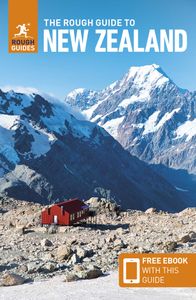
Travel advice for New Zealand
Find even more inspiration here.

Ready to travel and discover New Zealand?
Get support from our local experts for stress-free planning & worry-free travels.
- Where to stay
- Travel advice
North Island vs. South Island
Cities to Visit
Getting Around New Zealand
Best Auckland Hotels
New Zealand's Airports
Driving in New Zealand
Visiting New Zealand With Kids
One Week in New Zealand
North Island Road Trip
South Island Road Trip
Top Things to Do
Best Beaches
Skiing in New Zealand
Top National Parks
Museums & Art Galleries
Hot Springs
Wildlife Reserves
Must-Try Food in New Zealand
New Zealand's Wine Regions
Best Restaurants
Nightlife in New Zealand
Best Time to Visit
Weather & Climate
Top Places to Visit
The 15 Best Places to Visit in New Zealand
:max_bytes(150000):strip_icc():format(webp)/Profilepic_small-825a61251a60463999e3bdc1e5add2a5.jpg)
New Zealand is only 1,000 miles long, 280 miles across at its widest, and home to just under five million people, but this long, narrow country contains many things to see and do. Travelers can ski on snow-capped mountains and bask on subtropical beaches, learn about Maori culture and discover its British heritage, sip on some of the world’s finest wines and hike through the uninhabited wilderness. Whatever travel experiences you enjoy, you can probably find them in New Zealand .
The country comprises two main islands—imaginatively named the North and South Islands in English, and Te Ika a Maui and Te Wai Pounamu, respectively, in Maori. Although the South Island is larger, more than three-quarters of New Zealand’s population lives in the North. Ideally, visitors should spend time on both islands, although picking one isn’t a bad approach. Here are the 15 best places to visit in New Zealand.
On the central North Island, Rotorua is famous for its geothermal features and Maori culture. Travelers short on time can visit on a day trip from Auckland, but it’s a convenient stop when traveling through the North Island. Hell’s Gate, Wai-O-Tapu, or Orakei Korako (on the way to Taupo) are good options for bubbling mud pools, boiling geysers, colorful rock formations, and many resorts and holiday parks in the area have hot spring bathing facilities. You can also learn more about Maori culture at tourist villages like Mitai, Whakarewarewa, and Tamaki with their cultural shows of traditional music and dancing and a hangi meal cooked in an underground pit.
Time commitment: One full day in Rotorua is ideal.
Waitangi is one of the most significant places in New Zealand's modern history. In 1840, Maori chiefs signed a treaty with representatives of the British Crown, the Treaty of Waitangi, a founding document that gave the sovereignty of New Zealand to British rule. Visit for a crash course in the country's history in this beautiful coastal location. The Waitangi Treaty Grounds include an indoor museum, the Treaty House, an ornately carved marae (Maori meeting house), and a ceremonial waka (canoe) spread over a large area. There are beautiful views of the Bay of Islands.
Time commitment: The Waitangi Treaty grounds deserve at least half a day.
Hokianga Harbour
The Hokianga Harbour is an alternative to the Bay of Islands, often overlooked by travelers and perfect for camping or RV adventures. The area is sparsely populated and predominantly Maori. Dune boarding, hiking, horse trekking, and dolphin watching are popular activities in the Hokianga. Base yourself in one of the nearby villages of Omapere, Opononi, and Rawene. To expand your exploration, the Waipoua Forest, just south of the Hokianga, is home to two of the largest living native kauri trees.
Time commitment: Aim to spend two days to a week in the Hokianga area.
Coromandel Peninsula
The Coromandel Peninsula reaches 50 miles into the Hauraki Gulf, across the Firth of Thames from Auckland. It’s a microcosm of all that’s good in northern New Zealand—stunning beaches, hiking trails, and arty, laid-back towns. During low tide at Hot Water Beach, dig a few inches beneath the sand to create your own natural hot spring bath, spend the day at Cathedral Cove, one of New Zealand’s most beautiful beaches (which is saying something), and hike the Pinnacles Walk or Coromandel Coastal Walkway.
Time commitment: To explore the whole Coromandel Peninsula, you’d need at least a week, but it’s possible to make a quick overnight trip from Auckland or Tauranga.
Tongariro National Park
TripSavvy / Taylor McIntyre
On the high central plateau of central North Island, Tongariro National Park is a dual UNESCO World Heritage Site, listed both for its natural and cultural significance. Most sights and activities revolve around three volcanic peaks: Mounts Tongariro, Ruapehu, and Ngauruhoe. The Tongariro Alpine Crossing is a moderately challenging day hike that is spectacular. In winter, ski at the Whakapapa or Turoa ski fields.
Time commitment: You need a day to hike the famous Tongariro Alpine Crossing (where you can spot the gorgeous emerald lake). With other hikes, biking trails, and skiing options in the winter, it’d be possible to spend several days in and around the park.
Hawke's Bay
Hawke’s Bay is one of New Zealand’s premier wine-producing regions and the oldest—there are more than 200 vineyards. The area is popular for its sunny climate, Art Deco allure, and the world’s largest gannet colony. The city of Napier, in particular, is famous for its Art Deco architecture because, after a massive earthquake in 1931, much of the town was rebuilt in this style. Keen bird watchers should visit the gannet colony at the Cape Kidnappers Reserve.
Time commitment: Hawke’s Bay is quite a long drive from other North Island centers (or a short flight to Hawke’s Bay Airport), so spend at least a couple of days here to make it worth the trip.
At the bottom of the North Island, Wellington is New Zealand’s capital. Equal parts bureaucratic formality and bohemian arts hub, Wellington is a perfect small city to explore. The New Zealand Parliament building, known as the ‘Beehive’ (you’ll understand why when you see it), and the Museum of New Zealand Te Papa Tongarewa (known simply as Te Papa) shouldn’t be missed. The Weta Workshop is a film special effects company founded by Peter Jackson, director of "The Lord of the Rings" and "The Hobbit," so fans of the film should consider a tour.
Time commitment: Budget at least two days for the central city and another few to visit outlying areas like the Kapiti Coast or Cape Palliser.
Abel Tasman National Park
TripSavvy / Alisha McDarris
Many travelers take the Interislander Ferry from Wellington to Picton, at the top of the South Island, and drive west to the Abel Tasman National Park, New Zealand’s smallest national park. Abel Tasman is all about the golden beaches, turquoise seas, and forested hiking trails. For longer hikes, enter the park from the tiny town of Marahau. You can also enter the park by kayaking from Kaiteriteri.
Time commitment: If staying in nearby Nelson or Motueka, it’s easy to visit the park on a day trip. To complete the popular Coast Track walk, you’ll need three to five days.
TripSavvy / Lauren Breedlove
On the eastern coast of the upper South Island, Kaikoura is famous for its whale and dolphin watching. It’s a marine-life hotspot because of the unique currents and deep trench just offshore. Whale-watching cruises operate all year, and while sperm whale sightings are never guaranteed, there’s a very high chance you’ll see them and dolphins, seals, and albatross.
Time commitment: Many travelers pass through Kaikoura while traveling between Picton and Christchurch. You only need a day for a whale-watching cruise, but extra days in Kaikoura can be spent hiking or enjoying the beaches.
Akaroa and the Banks Peninsula
Jutting southeast from Christchurch, the Banks Peninsula is a volcanic landmass comprising several volcanos. There are many harbors and bays, wildlife-spotting opportunities, and the French settlement of Akaroa, the oldest town in the Canterbury province. There are many 19th-century buildings there and cute French cafes. The Hector’s dolphin—the world’s smallest and rarest—live in the waters off the Banks Peninsula. (Sea kayaking is an excellent way to see them.) There are also many biking and hiking trails on the peninsula.
Time commitment: Akaroa and the Banks Peninsula are an easy day trip from Christchurch, but staying a couple of days will allow you to drive to more remote spots.
Aoraki Mackenzie International Dark Sky Reserve
The Aoraki Mackenzie International Dark Sky Reserve is one of the largest dark sky reserves in the world. In the central South Island, far from any major settlements, it’s almost entirely free of light pollution, making it an incredible destination for stargazing. Stargazing tours are informative, or you can find a quiet, dark spot on your own. You might also see the Aurora Australis (the Southern Lights, similar to the Northern Lights) if you're lucky. Mount Cook, New Zealand’s highest mountain (12,220 feet), is also in this area.
Time commitment: The tiny towns within the reserve—Lake Tekapo Village, Twizel, and Mount Cook Village—are a long way from anywhere, so these are not a quick getaway. Cloud-free skies are essential for stargazing, so you may need to spend a few days here.
Queenstown is not a typical Kiwi town—its real estate is among the most expensive in the country, and the style is more designer than farmer. But there’s no denying that Queenstown is blessed with beautiful geography as it's set on Lake Wakatipu with views of the Remarkables mountain range. Take the cable car to the top of the hill behind the city for spectacular views. Popular activities in the area include mountain biking, bungee jumping, speedboat rides, whitewater rafting, kayaking, canyoning, skiing in winter, or hiking the many trails.
Time commitment: Queenstown city only needs a day to look around, but it’s an ideal base for exploring the Central Otago wineries, trying adventure sports, and making day trips to Glenorchy, Wanaka, Arrowtown, or Fiordland.
Dunedin and the Otago Peninsula
Dunedin is a university town on the South Island’s east coast. Dunedin is the Scots Gaelic name for Edinburgh, and the Scottish influence is strong. The neo-gothic architecture of the University of Otago, the Dunedin Railway Station, and some churches lend an Old World aesthetic to Dunedin. The world’s second steepest street (as of August 2019), Baldwin Street, is also a quirky sight. (The first is in Harlech, Wales.)
A short drive from Dunedin is the hilly, windswept Otago Peninsula, one of New Zealand’s finest eco-tourism and bird-watching destinations. Drive (or take a tour) out to see the penguin, albatross, and seal colonies of the Otago Peninsula, stopping at Larnach’s Castle en route.
Time commitment: Two or three days are needed here, divided between the city and the peninsula.
Fiordland National Park
In the southwest of the South Island, the Fiordland National Park is New Zealand’s largest, and it’s part of the Te Wahipounamu UNESCO-listed World Heritage Site. A vast area of forests, mountains, and glacial fiords, visitors can be as active or relaxed as they like here, on sightseeing cruises, scenic flights, or multi-day treks. The small town of Te Anau is a good base and has caves with glow worms.
Milford Sound is perhaps the most famous sight, with pointy Mitre Peak rising from the water, offering perfect reflections on a clear day. Lake Te Anau and Lake Manapouri are beautiful places to cruise or kayak.
Time commitment: Some travelers visit the Fiordland National Park on a quick day trip from Queenstown or Wanaka, while others stay for longer to explore. The famous Milford Track trek between Te Anau and Milford Sound takes four days.
Stewart Island /Rakiura
Off the southern coast of the South Island, Stewart Island/Rakiura is New Zealand’s third-largest island. Around 85 percent of the island is a national park reserved for penguins, kiwis, and seals. While the temperatures are generally quite cold this far south, the beaches are empty and worth the trip across the Foveaux Strait from Bluff.
Birdwatching and hiking are popular activities, especially within the park's boundaries. The Rakiura Track is a 20-mile (32-kilometer) hiking trail that circles the Rakiura National Park, and it takes two to four days to hike the entire length. The small capital, Oban, is a welcoming town that serves up seriously fresh seafood.
Time commitment: As it’s necessary to get a ferry to Stewart Island/Rakiura (or take a short flight from Invercargill to Oban), it’s worth spending a few days here. Camping is a good option.
The Top 20 Things to Do in New Zealand
Where to See Penguins in New Zealand
How to Spend One Week in New Zealand
The Top 10 Cities in New Zealand
The Top 15 Things to Do on New Zealand's South Island
New Zealand’s Top 6 National Parks
Top 15 Things to Do in New Zealand's North Island
Your Trip to New Zealand: The Complete Guide
The Complete Guide to New Zealand's Great Walks
Take a Road Trip on New Zealand's North Island
The 15 Best Small Towns in New Zealand
How to Go Backpacking in New Zealand
The 10 Most Beautiful Lakes in New Zealand
The 10 Most Important Historic Sites in New Zealand
Fiordland National Park: The Complete Guide
Traveling to New Zealand With Kids: Everything to Know
Covid-19 travel safety and information
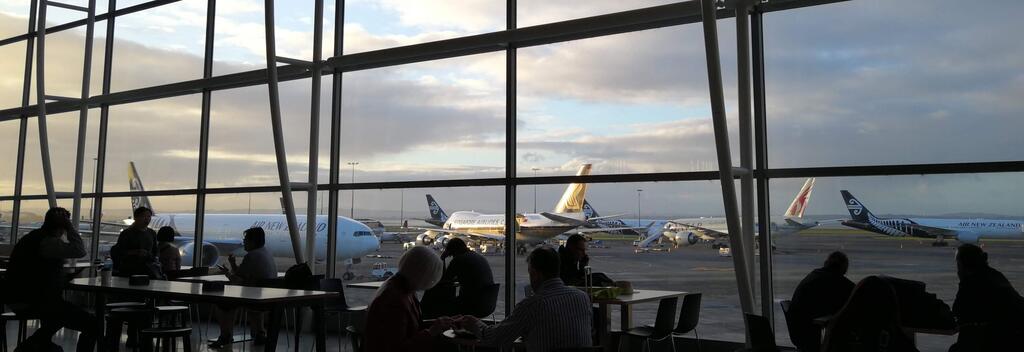
Know what to expect while travelling and follow some simple guidelines to stay safe in New Zealand.
On this page, you'll find helpful information on what you need to know:
Before travelling to New Zealand
- When in New Zealand
Leaving New Zealand
1. check your eligibility.
Before planning your travel to New Zealand, make sure you are eligible for travel, meet the visa requirements and have taken the right steps.
Everyone entering New Zealand needs to complete a New Zealand Traveller Declaration (NZTD) (opens in new window) including babies and children. It’s free and you can complete it on the NZTD website or by downloading the NZTD app ahead of your travel.
2. New Zealand’s vaccination requirements
COVID-19 vaccination and testing requirements for all travellers arriving in the country, including air crew, are no longer required.
However, all travellers are strongly encouraged to remain up to date with their vaccinations before travelling to New Zealand. Vaccination remains a significant tool for preventing infection, reducing COVID-19 symptoms and severe illness.
3. Pre-departure test
To enter New Zealand, travellers no longer need to get a pre-departure test.
4. Other things to consider before leaving
For peace of mind during your trip in New Zealand, you may also want to consider medical and travel insurance.
When you're in New Zealand
Once you arrive in new zealand.
Antigen tests
Travellers entering New Zealand do not need pre-departure tests or proof of COVID-19 vaccination to enter New Zealand. Check with your travel provider as they may still require proof of vaccination. If you have COVID-19 symptoms when you arrive in New Zealand, it is recommended to take a rapid antigen test (RATs). COVID-19 tests are free and widely available in New Zealand. Find more information on how to get a free RAT or PCR test (opens in new window) . Find more information on taking your test (opens in new window) .
COVID-19 safety practices in place
With COVID-19 case numbers falling, a highly vaccinated population, and increased access to antiviral medicines to treat COVID-19, New Zealand has removed most COVID-19 restrictions. It is still recommended to practice healthy habits when travelling around New Zealand.
Practice healthy habits
- While travelling around New Zealand, you should try to physically distance yourself in airports or busy transport hubs.
- Wearing a face mask is no longer required, although masks are still encouraged in some places such as hospitals.
- Find further information on face mask requirements (opens in new window) here.
What to do if you develop symptoms
- Find a COVID-19 testing centre (opens in new window) in your current location
- Order a rapid antigen tests (RATs) home testing kit
- Isolate for seven days. Find more information on self-isolation requirements (opens in new window) .
- Find more information on what to do if you test positive while travelling (opens in new window) .
Helpful links
- New Zealand emergency information and numbers
- List of public hospitals in New Zealand (opens in new window)
- Testing centre locations (opens in new window) across New Zealand
Check entry requirements
The country you are travelling to may have entry requirements in place. Be sure to check the requirements of the country you are travelling to.
- the official website of the country you wish to enter
- that country’s diplomatic representative in New Zealand
- More information if you require a pre-departure test before leaving (opens in new window) New Zealand
- List of testing centre locations (opens in new window) in New Zealand
More information on travelling to NZ
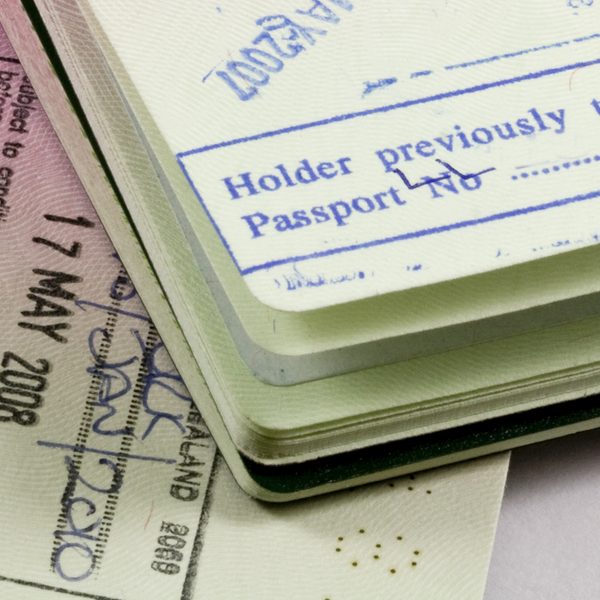
Visas and entry requirements long-arrow-right
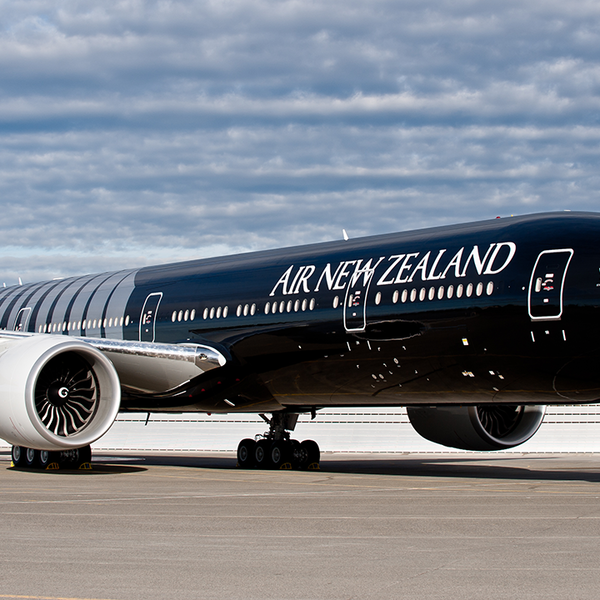
Flights To New Zealand long-arrow-right
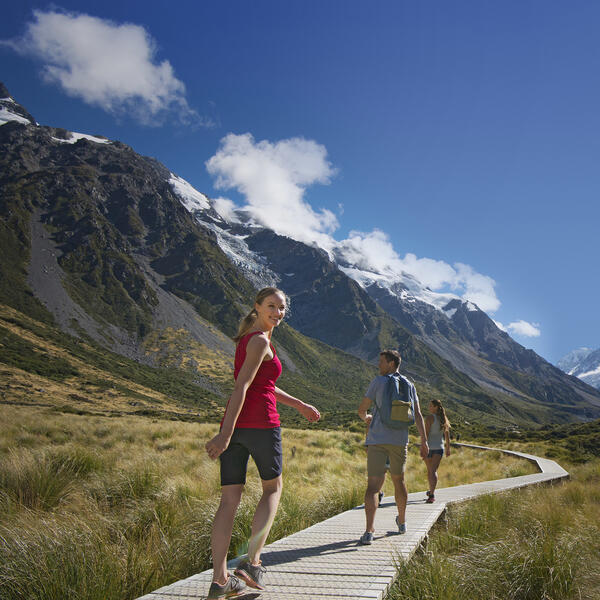
Travel agents and agencies long-arrow-right

IMAGES
VIDEO
COMMENTS
What to Pack for New Zealand - 28 Essentials. 1. Neck Wallet. After having some scares with misplacing valuables while jet-lagged, I never make long-distance trips without my neck wallet. This is especially important for New Zealand since the travel time is typically so loooong.
10. Sunscreen. Sunscreen is an absolute essential item to pack for backpacking New Zealand. Because of the hole in the O-zone layer between New Zealand and Australia, the sun is intense and can burn you within seven minutes of exposure even in winter.
It pays to pack for all seasons, with a hat and sunscreen being must-haves. New Zealand's peak UV levels can be 40% higher than those in similar North American latitudes, thanks in part to its clean air. For some, a blistering burn can happen in minutes and will ruin your holiday for a good week or more. In summer, perhaps plan shadier ...
Climate: New Zealand has a diverse climate determined by the ocean, mountains and prevailing winds. The mean average temperatures are 10°C (50°F) on the South Island to 16°C (61°F) on the North Island. See The Guide to The New Zealand Climate or check out the " When to Visit " section below. Population : 5 million.
Keep an emergency $20 in your shoe, put some of your money in your wallet, keep a card in your daypack, and some extra cash in a pocket. You'll be a lot safer by doing this. High heels: New Zealand is a country that's all about getting outdoors. Leave the heels behind and opt for some sandals with a good grip.
Hydroflask Vacuum Bottle 32 oz. Packing a reusable water bottle is probably the best thing you can personally do to combat single-use plastic bottle use whilst traveling. There is simply zero need to buy plastic water bottles. The tap water in New Zealand is good to drink so you can fill it up each morning before you head out.
Here are 17 things you should know before coming to this wonderful country. Milford Sound in New Zealand. Photo credit: Heather Markel. 1. It's Not 'Down Under'. I realized while living there that I became as insulted as a Kiwi when someone suggested that I was "Down Under.". I know that New Zealand is a small country, but no, it's ...
The Cascade Mountain Tech 2-person Travel Hammock is available at Costco for $24.99. Typically priced at $29.99, it's available for an additional $5 off through May 11, 2024.
A rollicking good read, energetically exploring the life of a rebellious teenager in 1950s rural New Zealand, where two mighty sheep-shearing families are locked in battle. It's an intense look at adolescence, cultural choices, family ties and the abuse of power, culminating in a masterful twist.
Getting around New Zealand. Whether you want to self-drive, fly, join a tour, or hop on a bus or train, there are plenty of options for getting around New Zealand. Find out what's best for you with our practical advice on travel and transport in New Zealand. Find more transport options >.
Keep in mind that New Zealand is known for its changeable weather, so it's best to have a range of items regardless of the season. For example, even in the summertime, I would have a pair of jeans and a hoodie/jersey to hand for evenings and rainy days. 4-6 pairs of socks. (For women), a pair of exercise tights.
The Ultimate List of New Zealand Travel Tips. Ah, New Zealand!Known to the local Māori as "Aotearoa", New Zealand is a remote country in the South Pacific famous for its dramatic scenery. At about 1,600 km (1,000 mi) long and 450 km (280 mi) at its widest point, the country is easy to explore.
New Zealand states that a visa must be valid for three months beyond the planned date of departure, and any traveler without a passport is subject to immigration clearance upon arrival. Additionally, travelers should bring paper copies of their passport information, including a printed copy of their travel itinerary and proof of a return ticket.
Auckland is a gorgeous harbor city located in the subtropical north of New Zealand. It's the largest city in NZ and its built on over 40 volcanoes! The city is home to black and white sand beaches, museums, rugged mountains, farmland, and coastal villages. While most travelers tend to fly in and out of the city, carve out a day or two and ...
4. Negotiate a two-wheeled adventure in Central Otago. New Zealand's first - and arguably best - multi-day cycling experience is the Otago Central Rail Trail. An undulating ride through sunbaked southern landscapes and the heritage streetscapes of former gold-mining towns, it takes four to six days to complete.
10 Backpacking Essentials. Insider tip: Air New Zealand will be launching Skynest for economy passengers, flat sleeping pods that you can reserve in increments of 4 hours, in September 2024 ...
Here are the basics about travel to New Zealand. ELECTRICITY: 230/240 volt with 2 or 3 pins, the same as Australia and parts of Asia. (Be sure to get your universal travel adapter before you leave) ENTRY / VISA: Australians can enter and stay visa free. UK citizens can enter for free with a 6-month stay.
29. Acceptable ID. The legal drinking age is 18 years old in New Zealand and you may be asked to show your ID to prove your age when buying alcohol. The only forms of ID that are accepted are your passport, a valid New Zealand driver license and the Kiwi Access Card (previously known as the 18+ Card).
2 pairs shorts (or a skirt) 3-4 Shirts (think layering for colder days; quick-dry clothes are best) 2 button up front long sleeve shirt. 1 sleep shirt & sleep shorts (or whatever you sleep in) 1 light sweat shirt or long-sleeve t-shirt. 1 swimming suit. underwear and sleepwear. 4-5 pairs socks both thin and thick.
Welcome to New Zealand. Get official travel information, maps, itineraries, best time to travel & things to do to help you plan your next holiday to New Zealand. ... Must do New Zealand experiences. Māori culture. Food and drink. Walking and hiking. Nature & Wildlife Adventure and Adrenaline. Home of Middle‑earth™ ...
Get the full list of travel essentials for New Zealand. Learn valuable visa and safety information about New Zealand before your trip. Get the complete guide and find out all facts about New Zealand. ... New accommodation must have at least one room designed for disabled access, and many pre-existing places have converted rooms, including most ...
Lake Te Anau and Lake Manapouri are beautiful places to cruise or kayak. Time commitment: Some travelers visit the Fiordland National Park on a quick day trip from Queenstown or Wanaka, while others stay for longer to explore. The famous Milford Track trek between Te Anau and Milford Sound takes four days. 15 of 15.
Antigen tests. Travellers entering New Zealand do not need pre-departure tests or proof of COVID-19 vaccination to enter New Zealand. Check with your travel provider as they may still require proof of vaccination. If you have COVID-19 symptoms when you arrive in New Zealand, it is recommended to take a rapid antigen test (RATs).